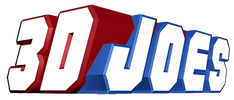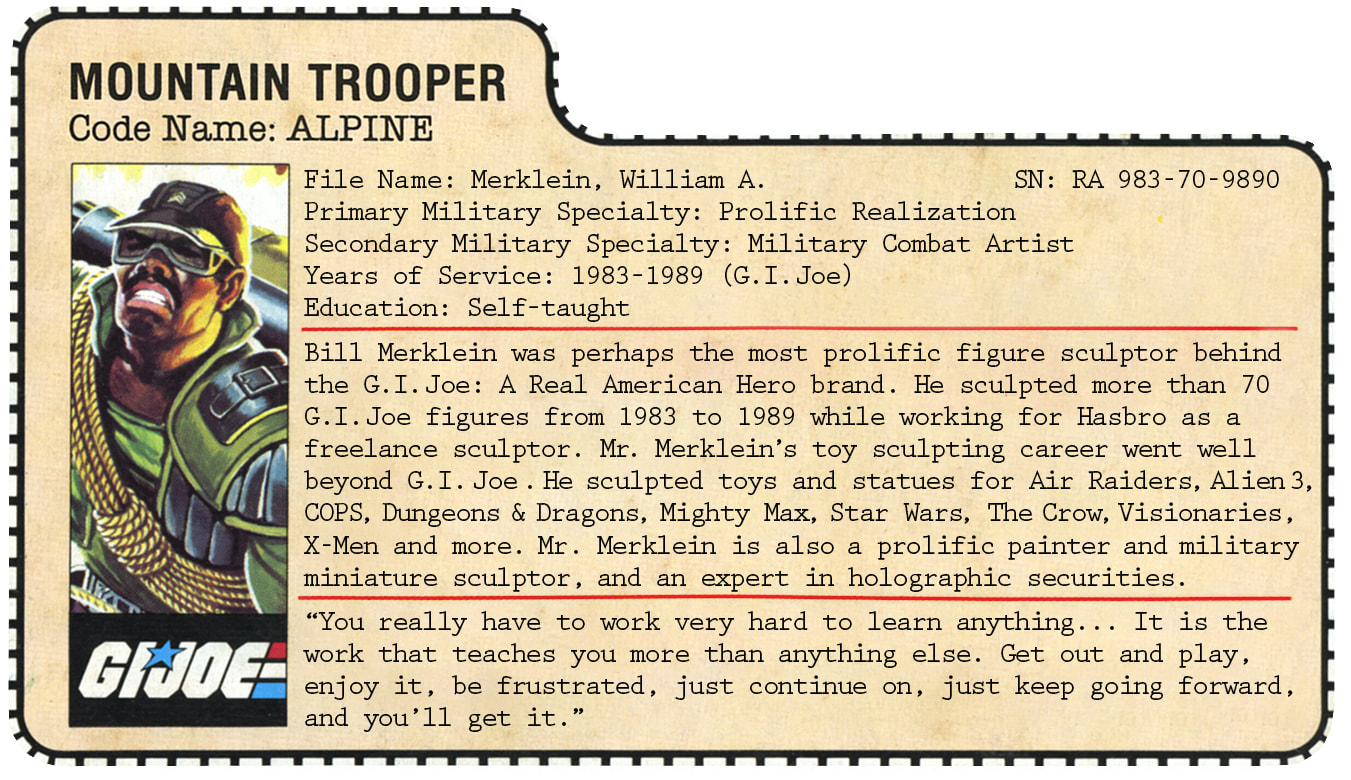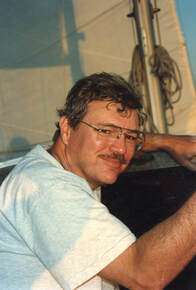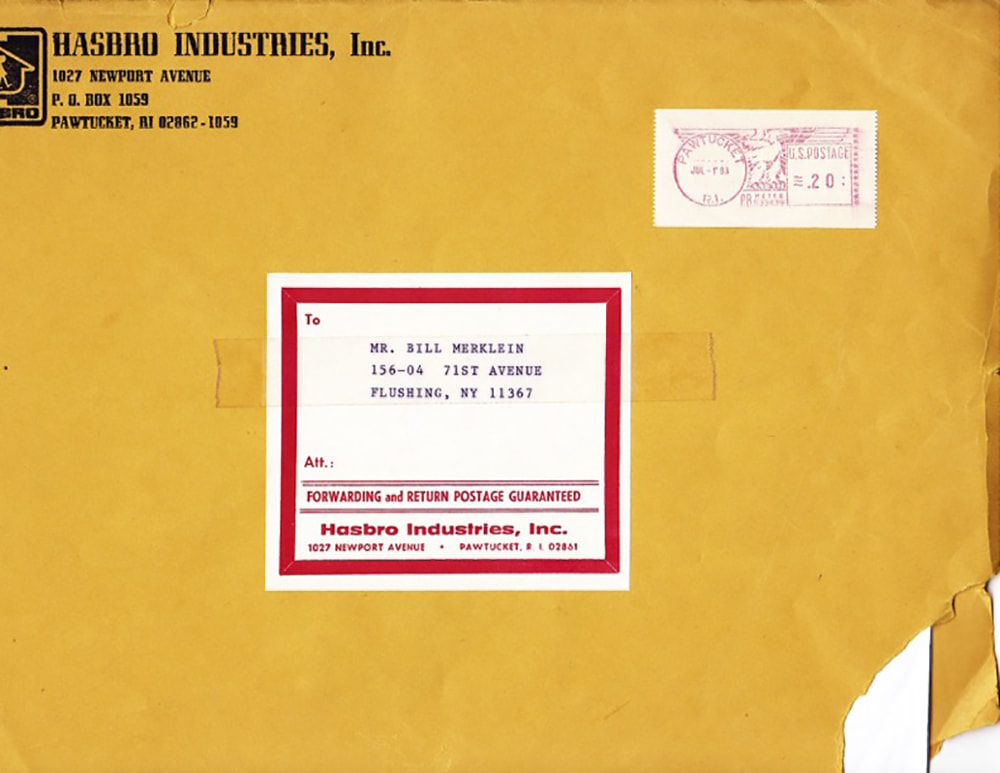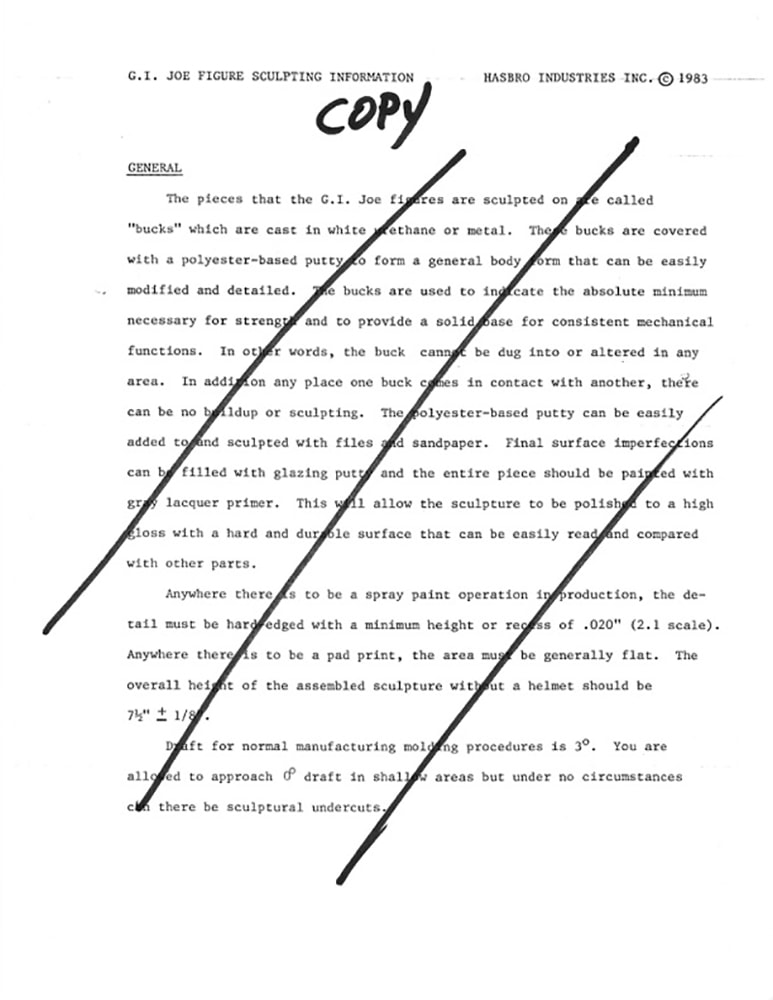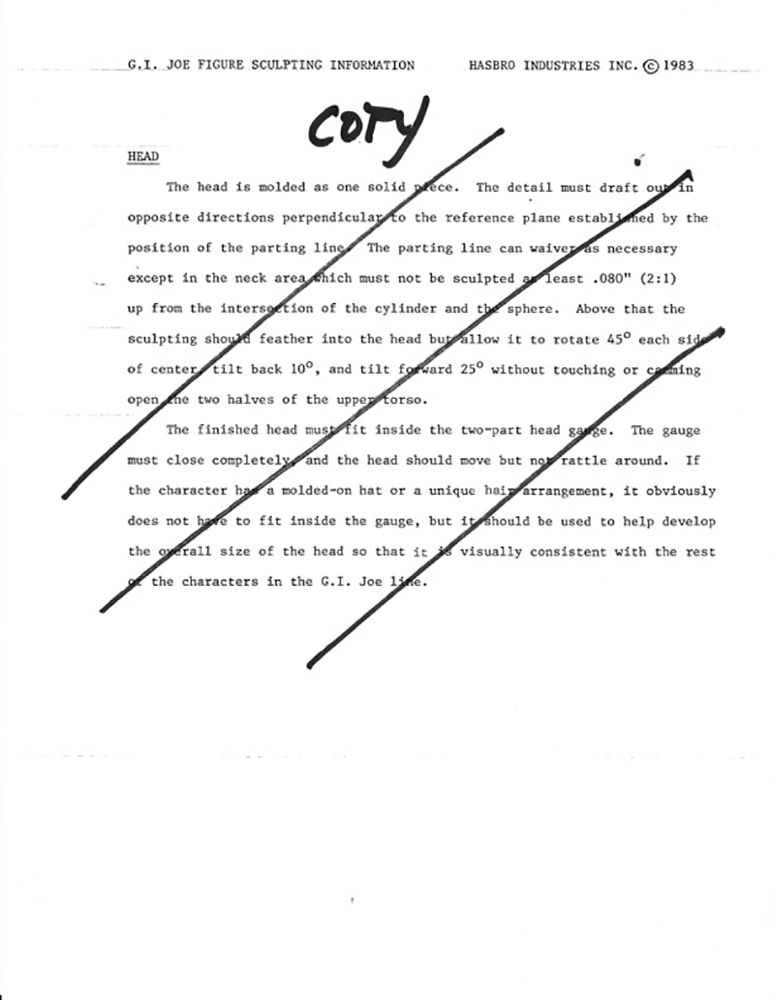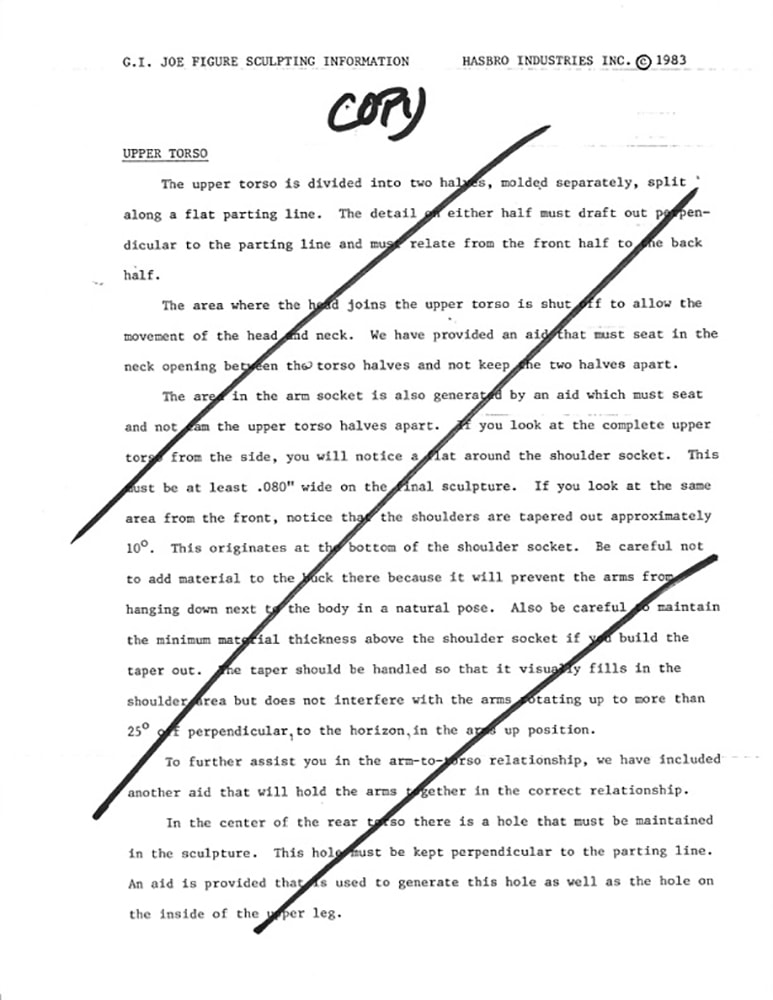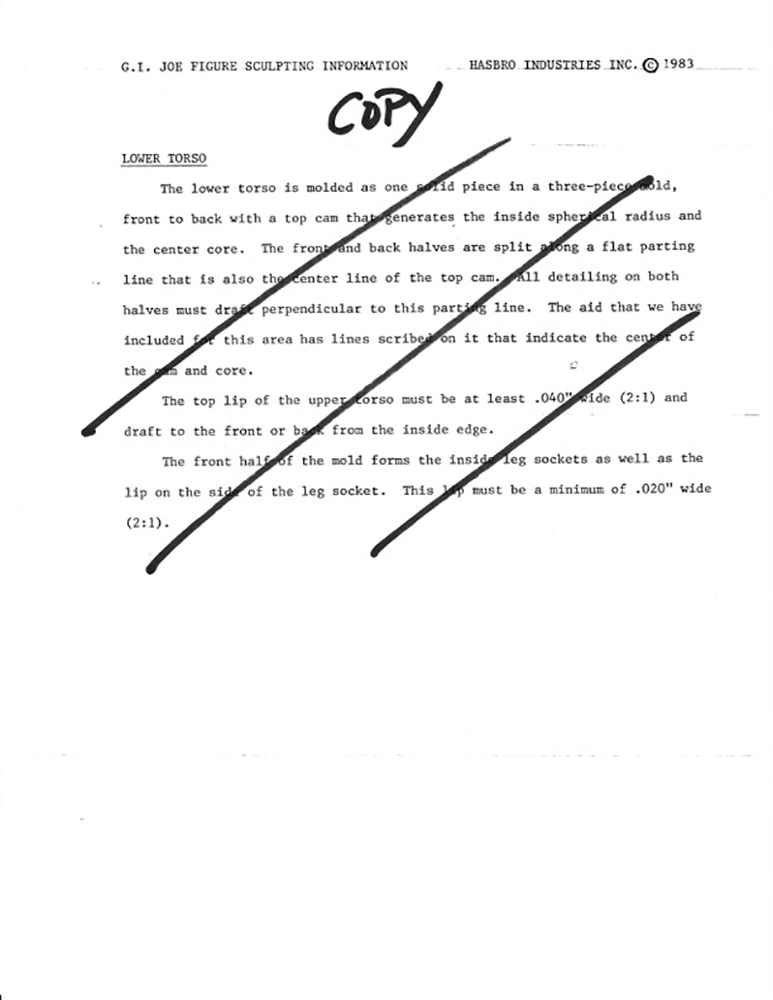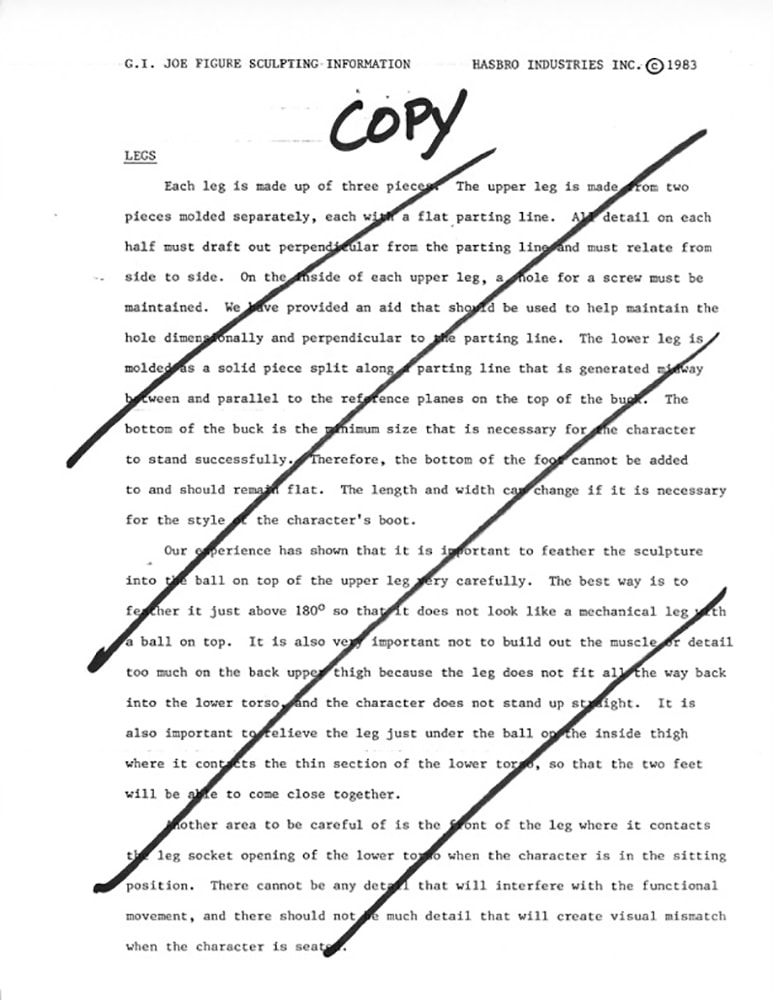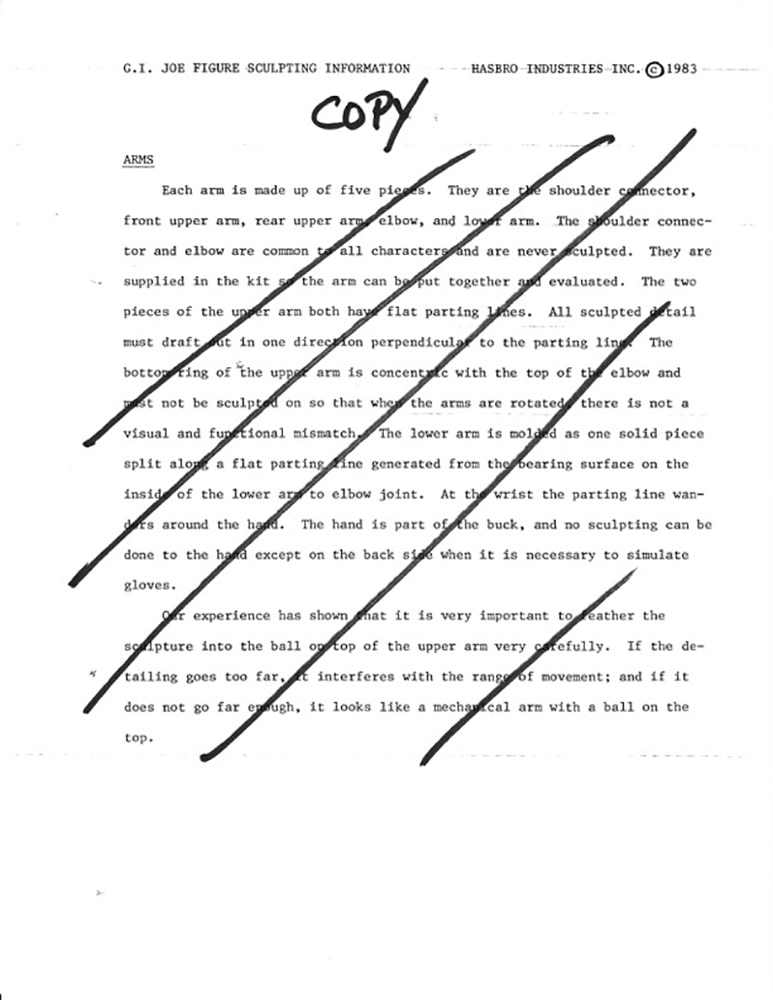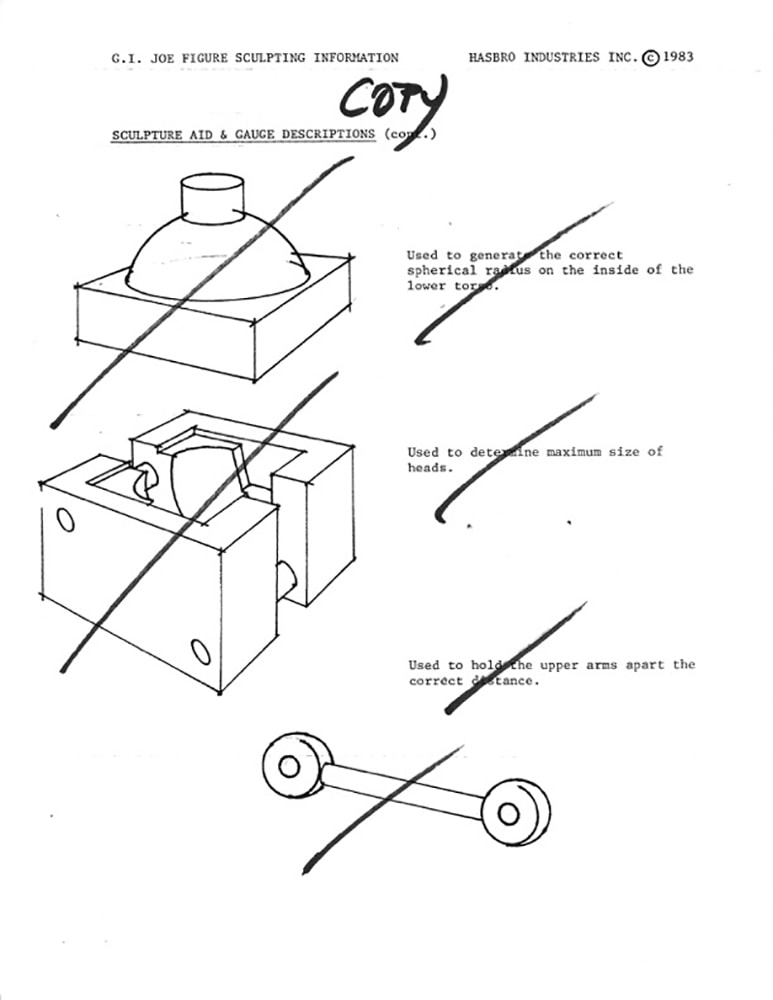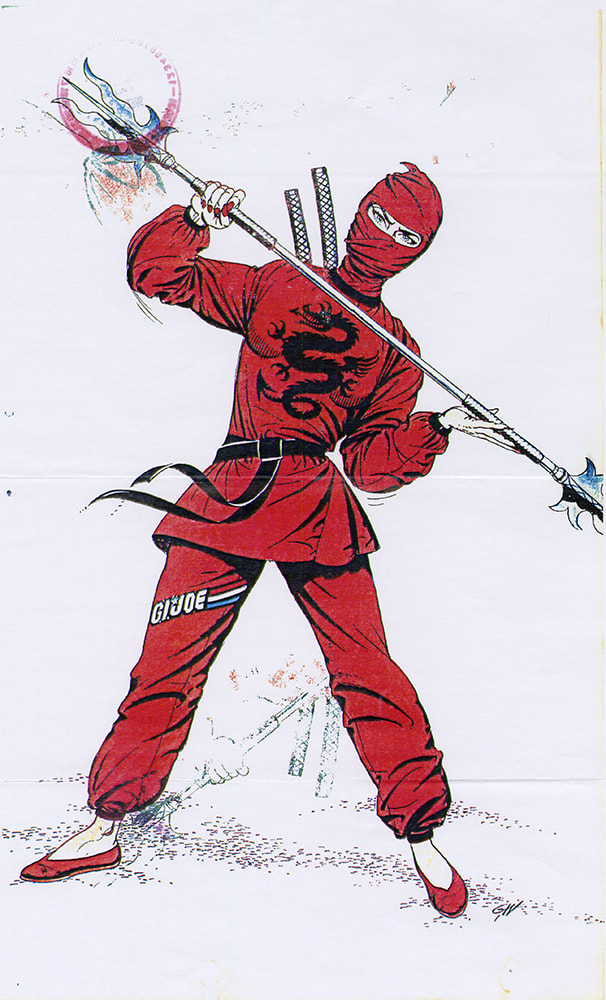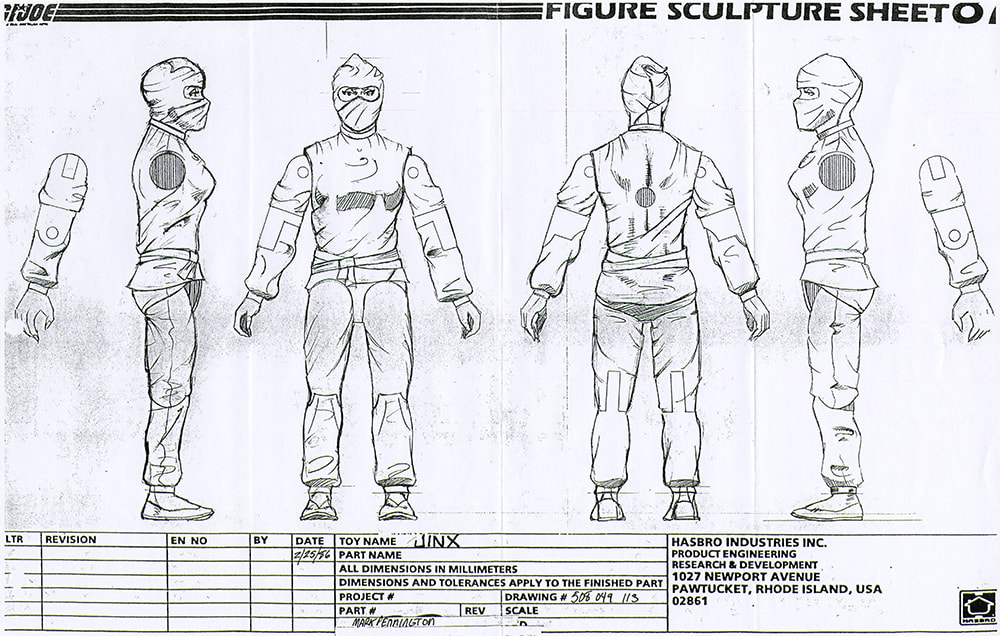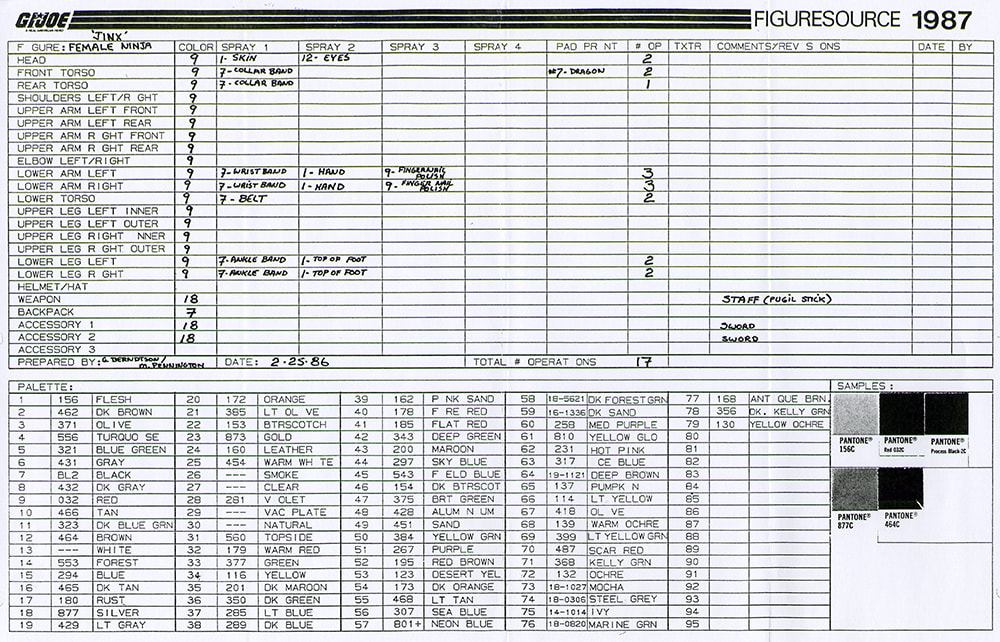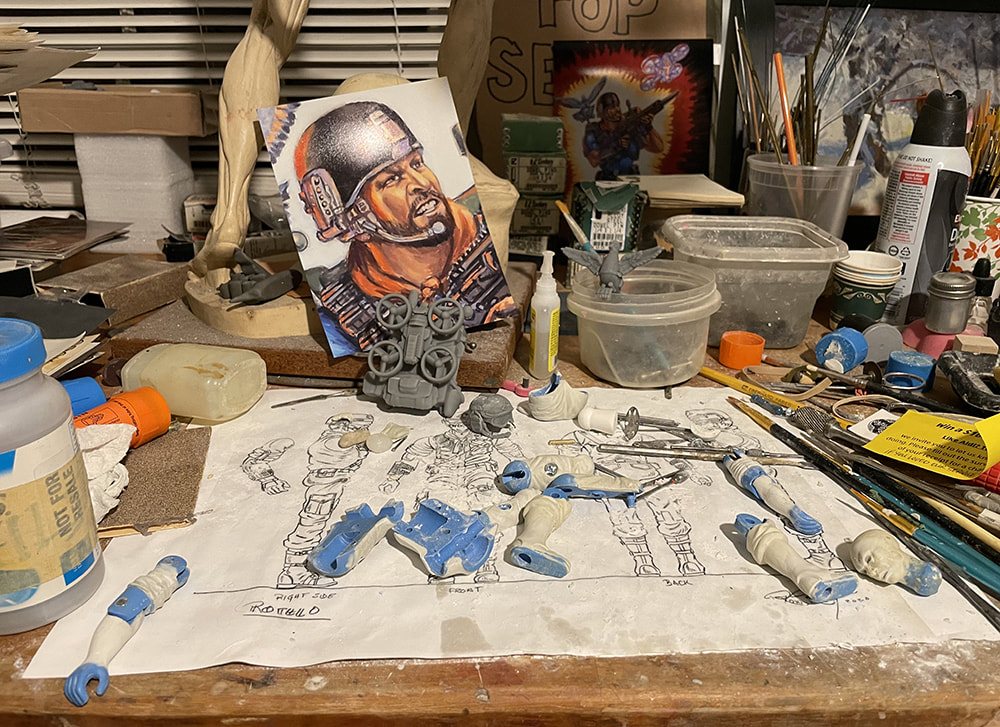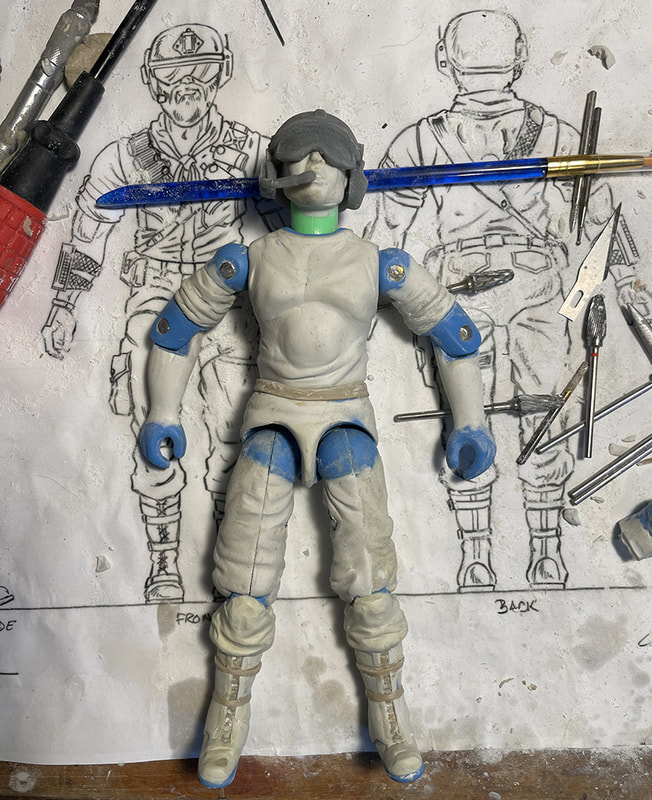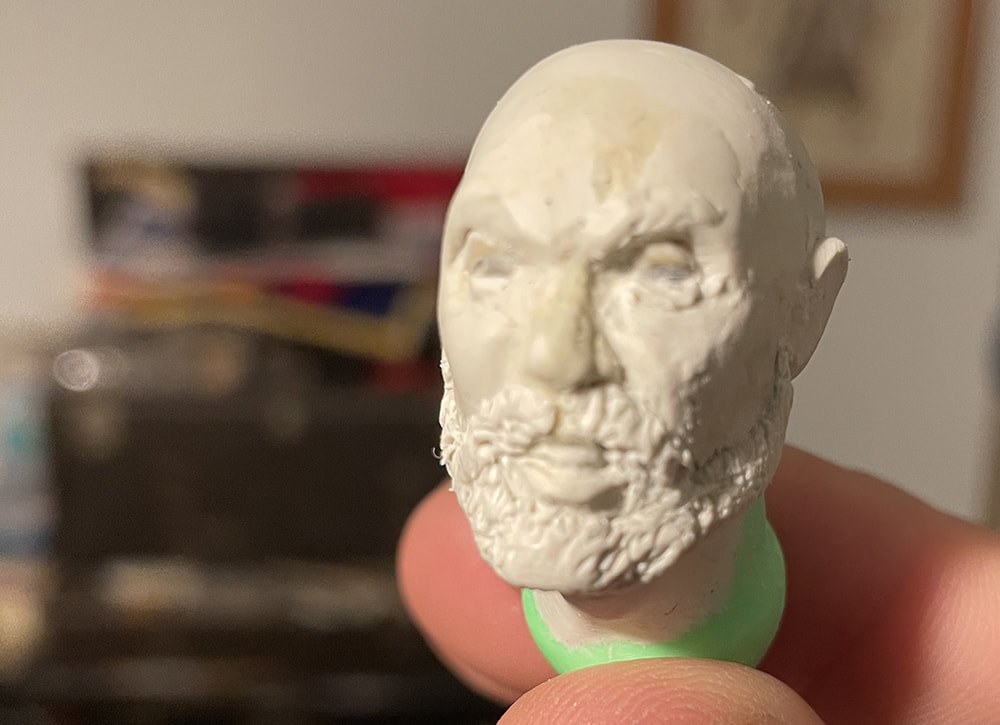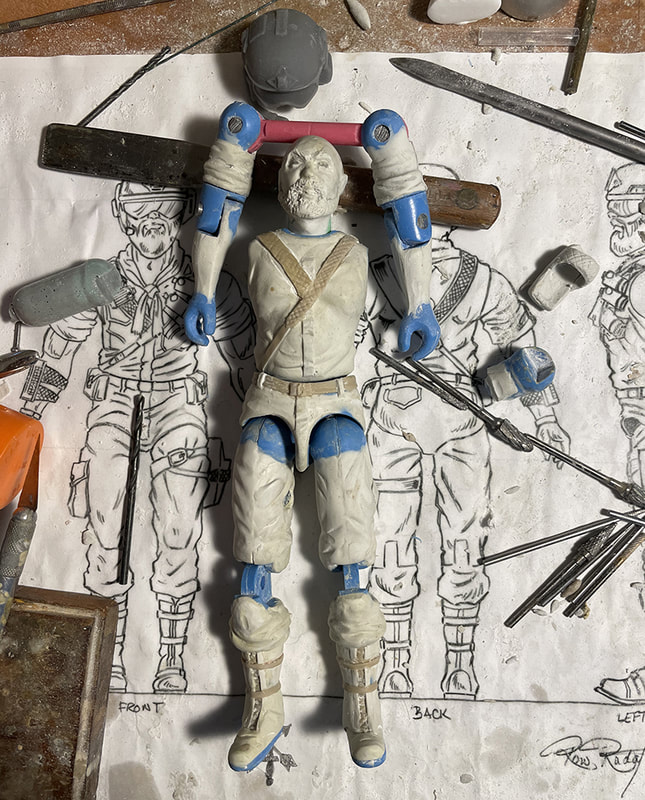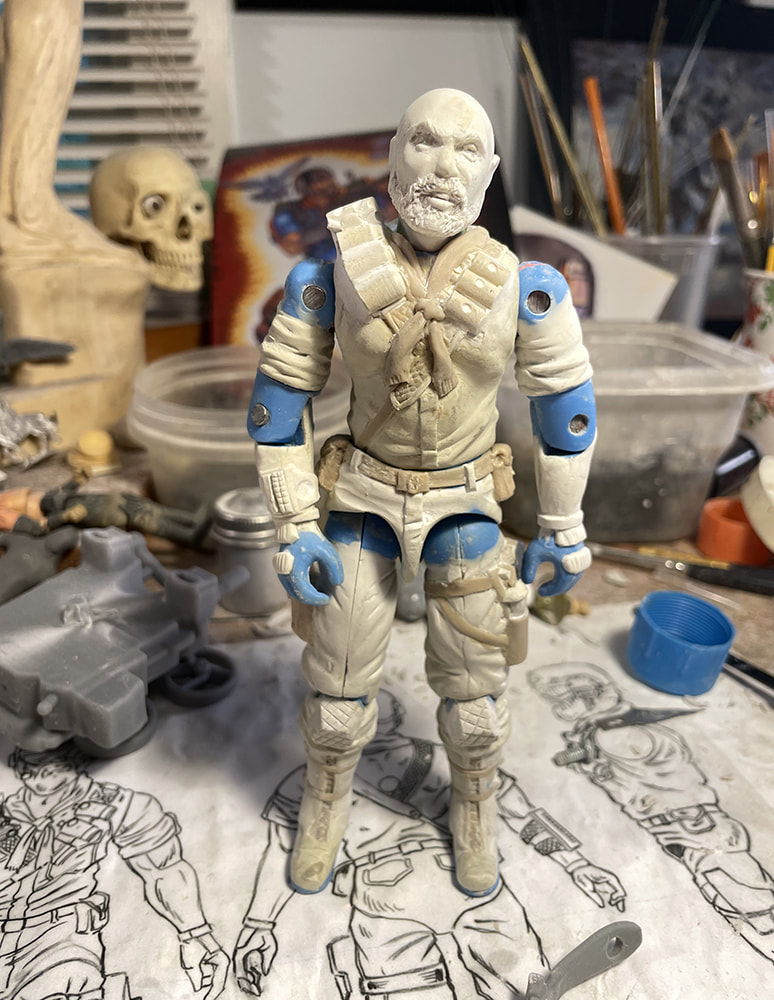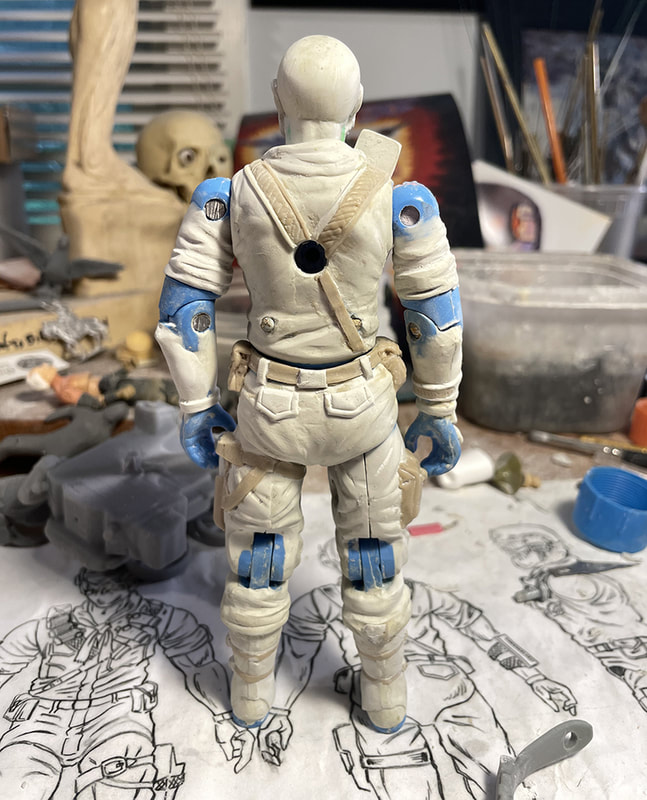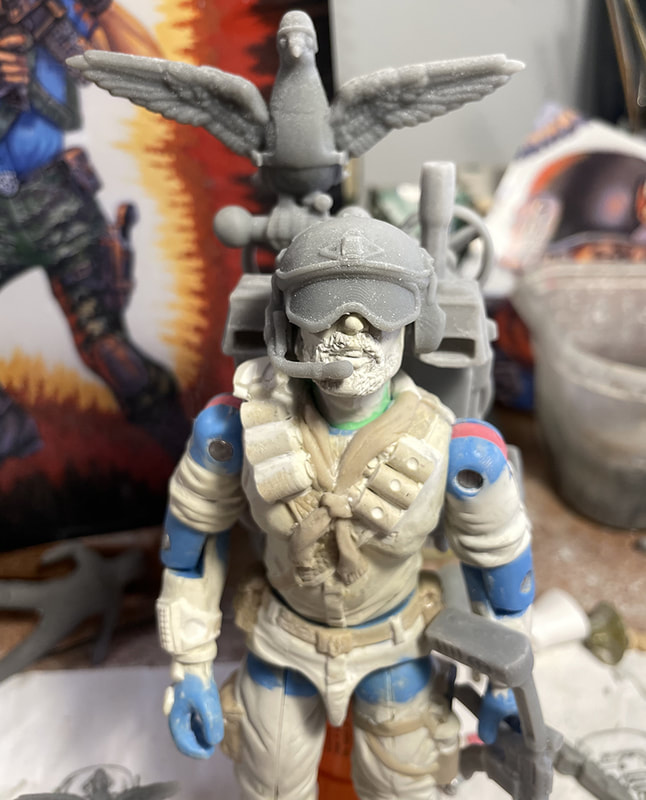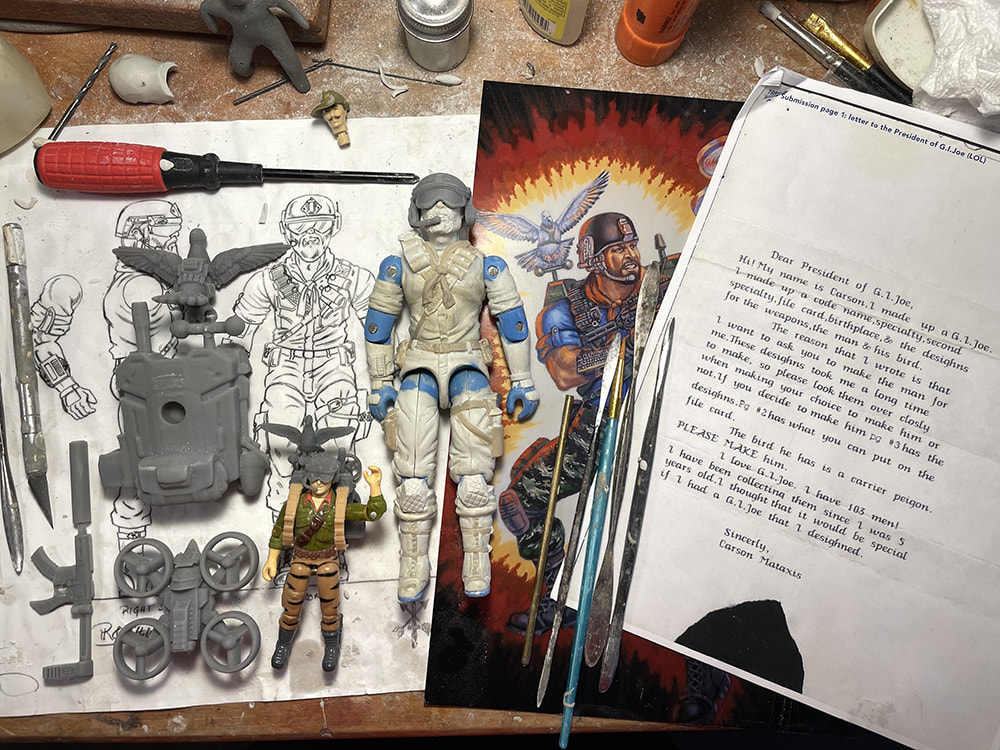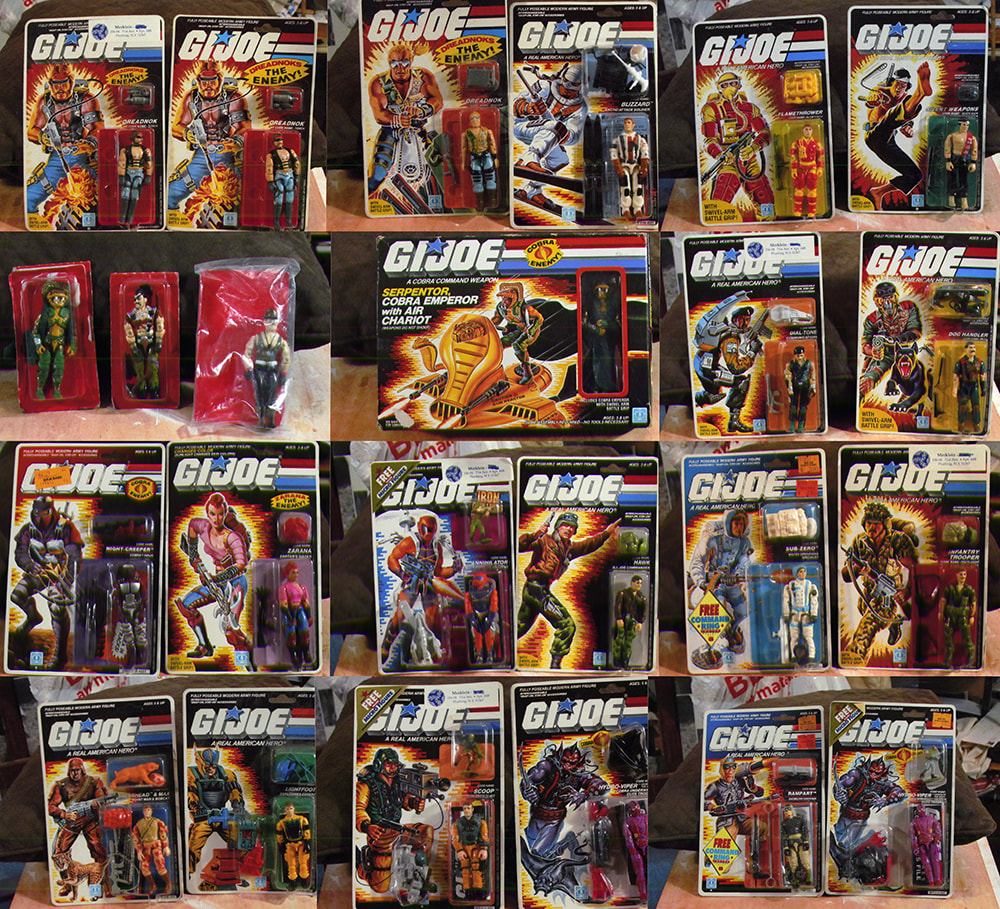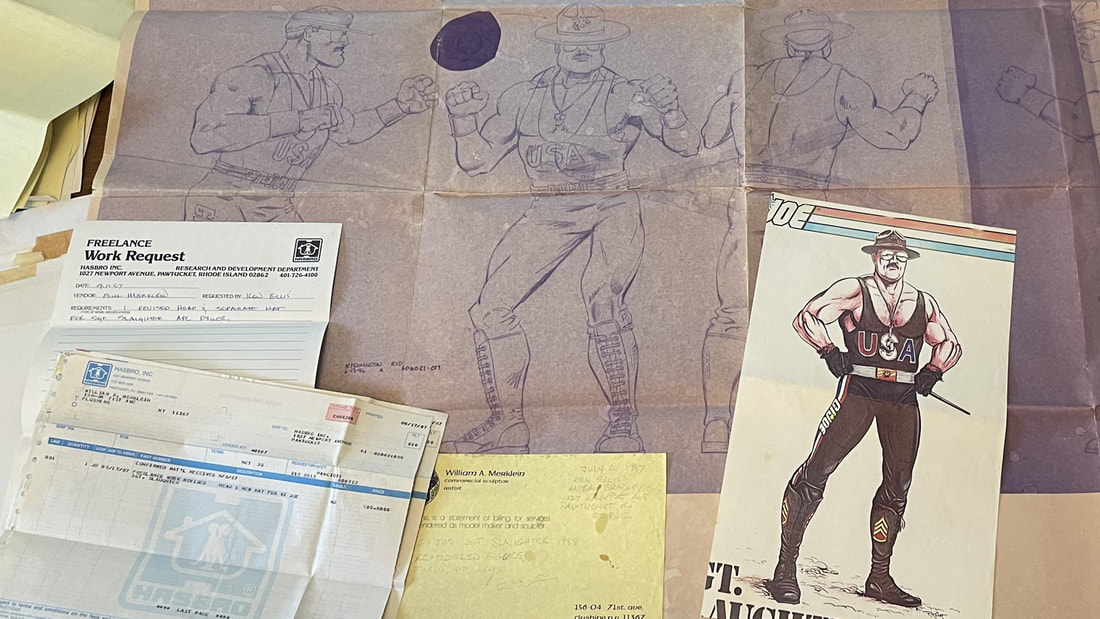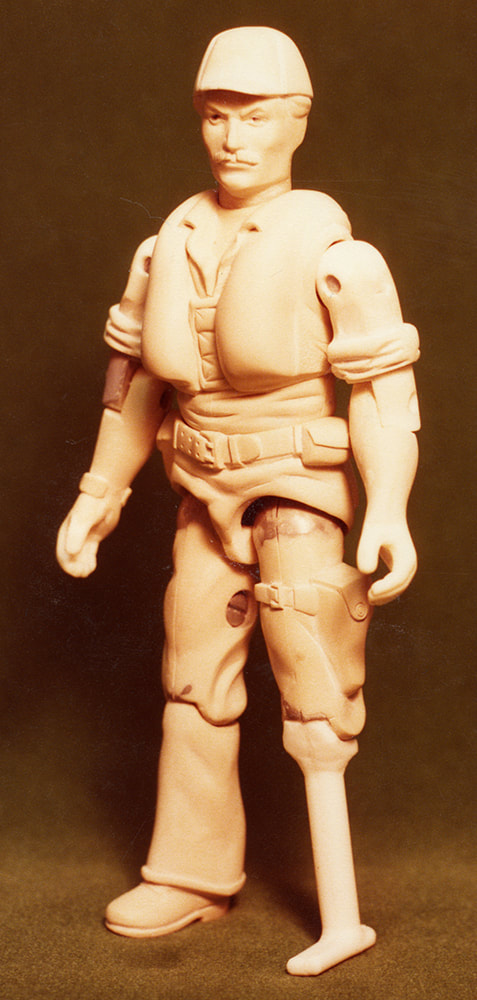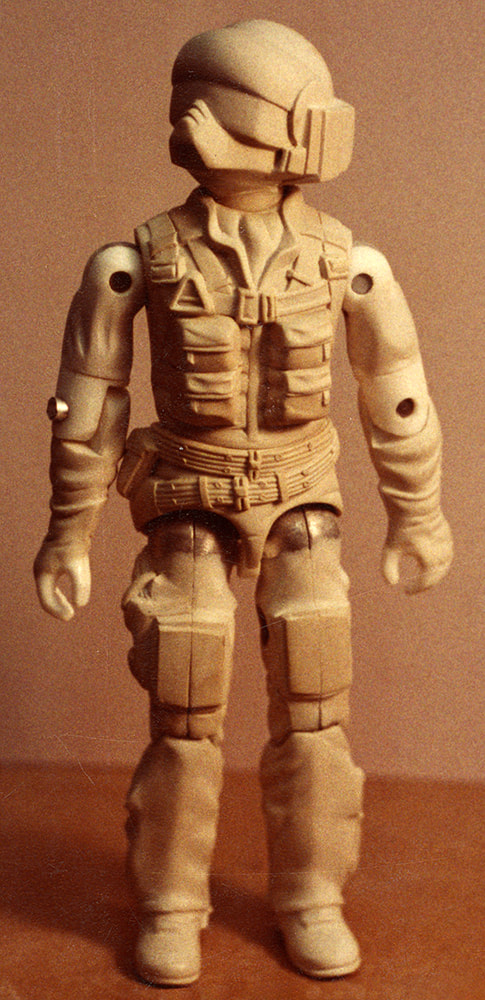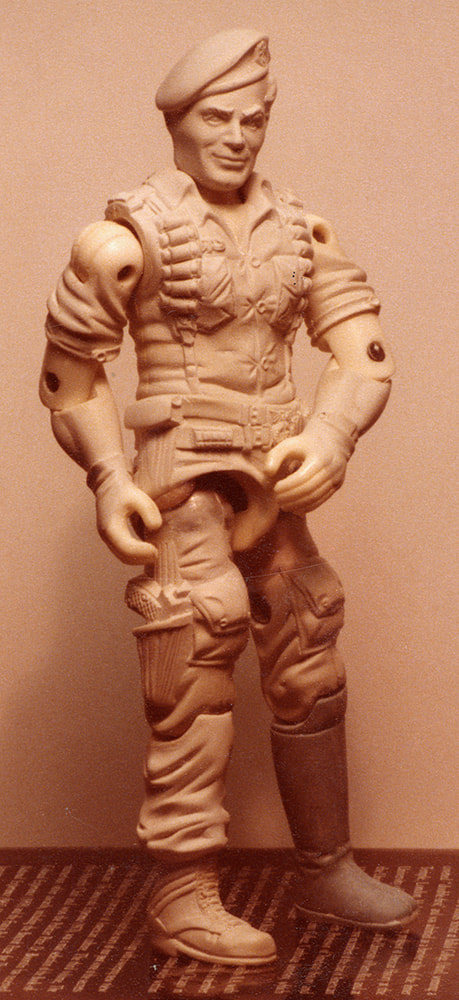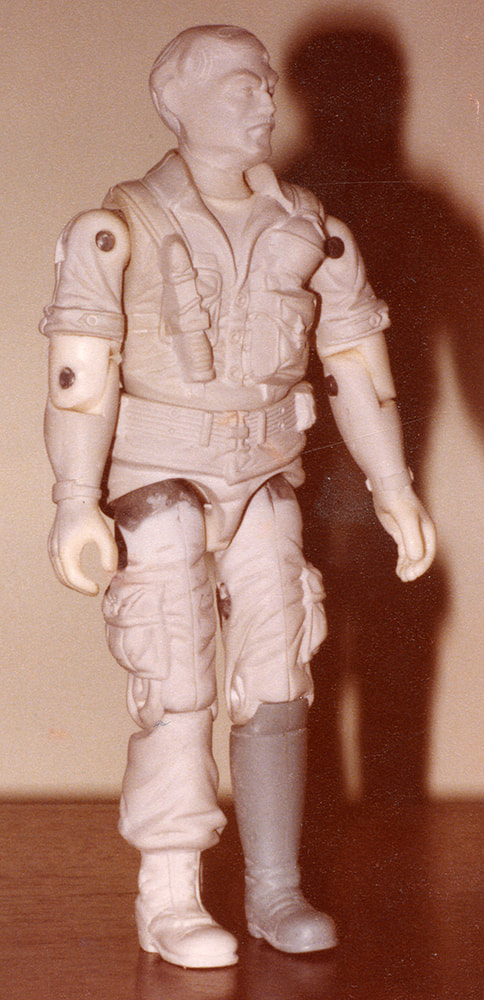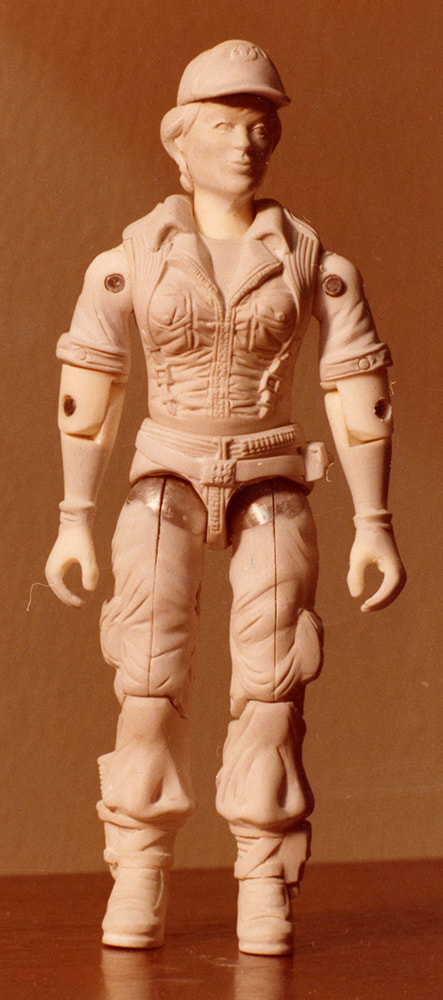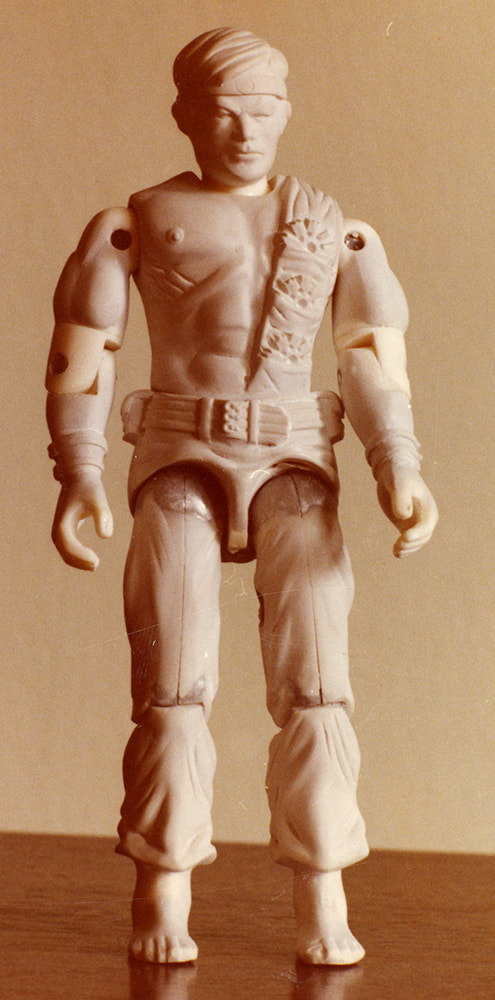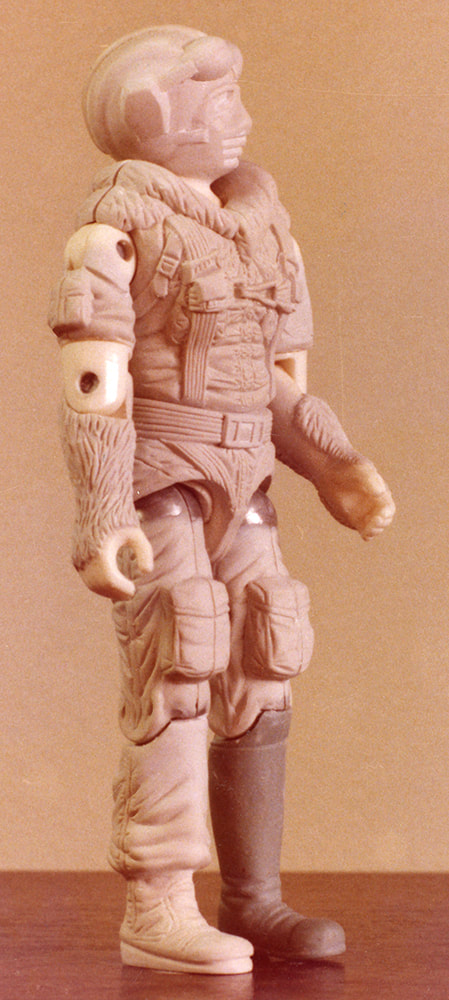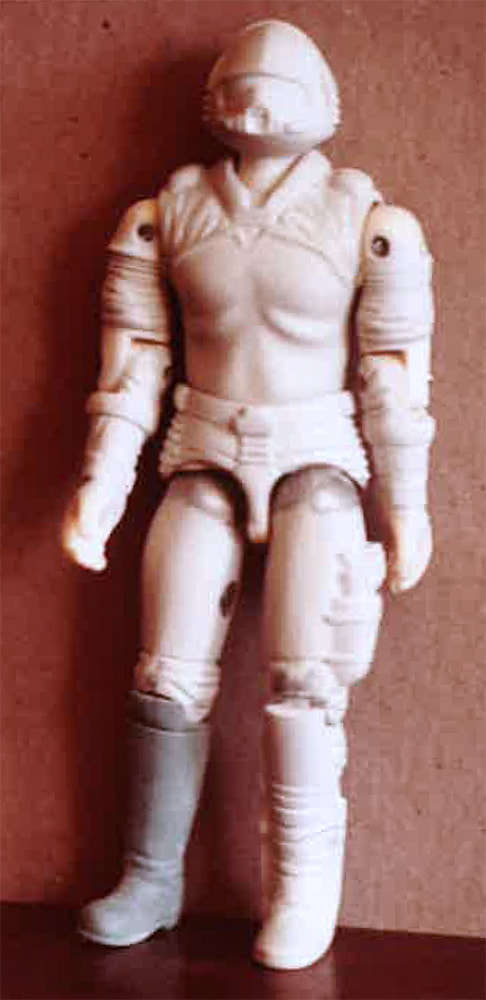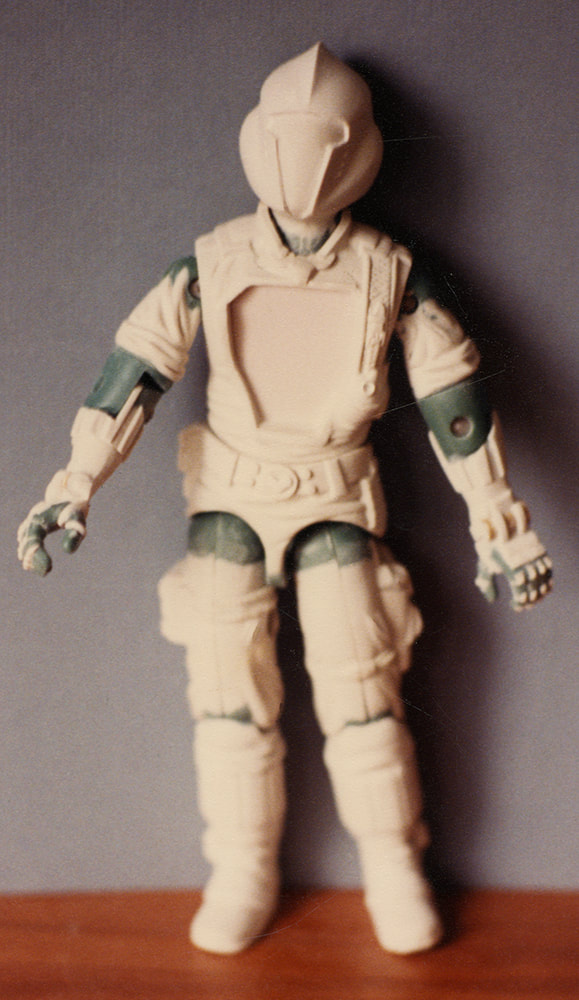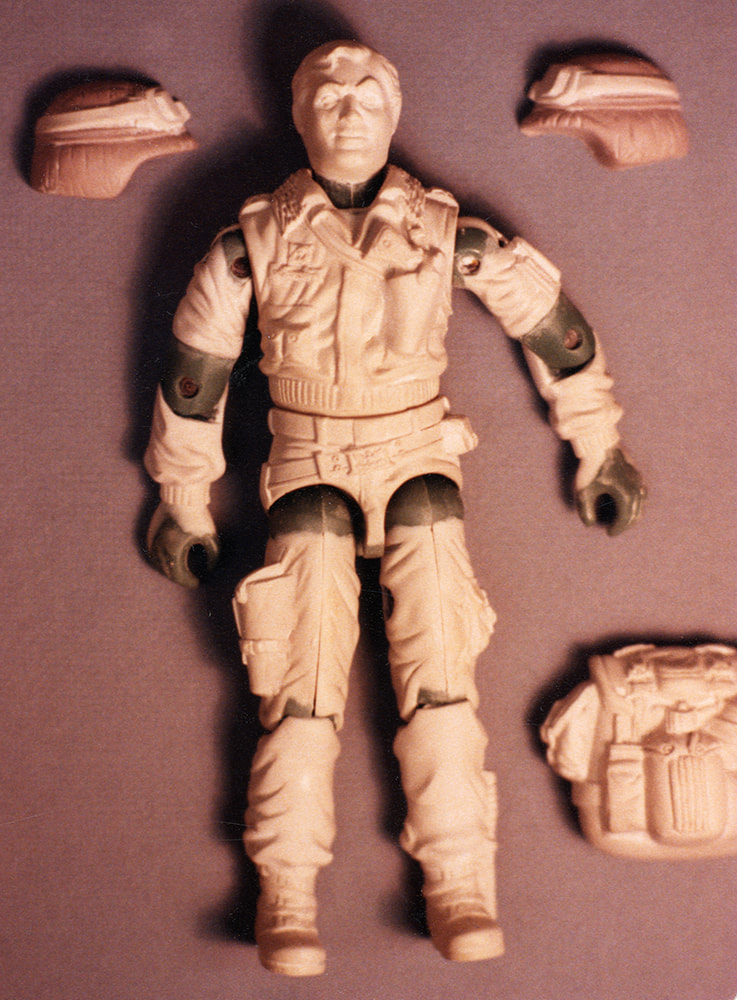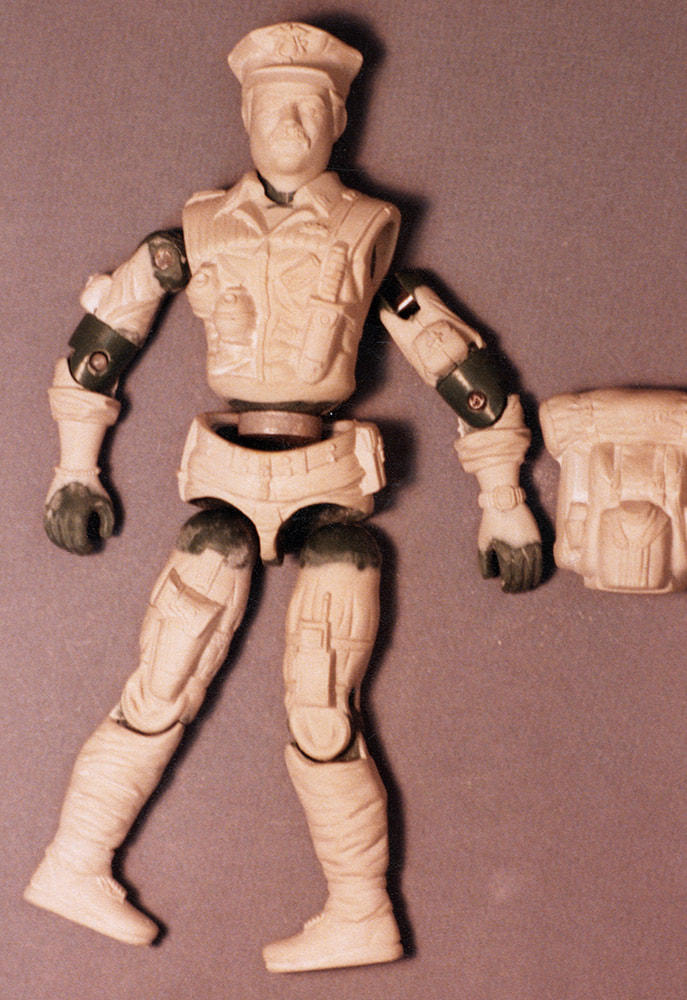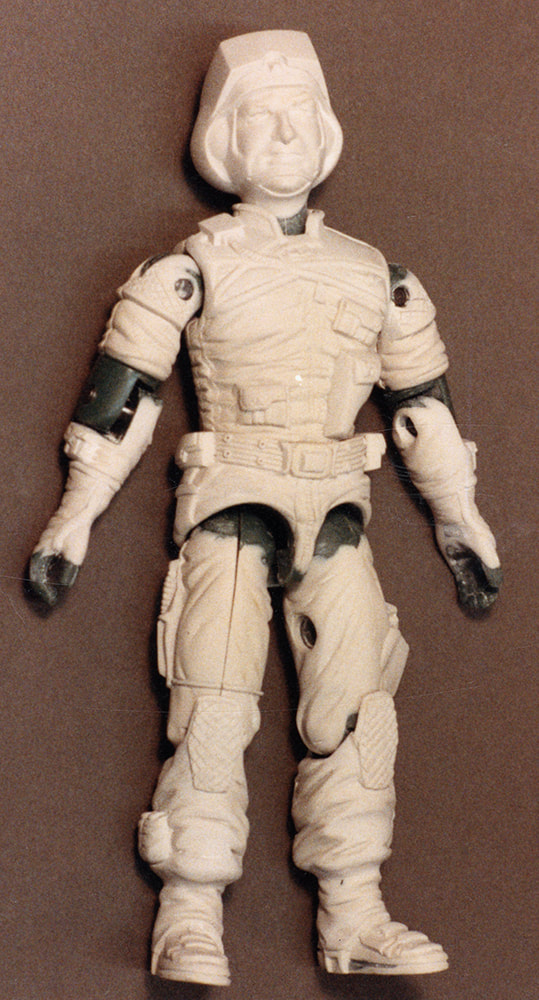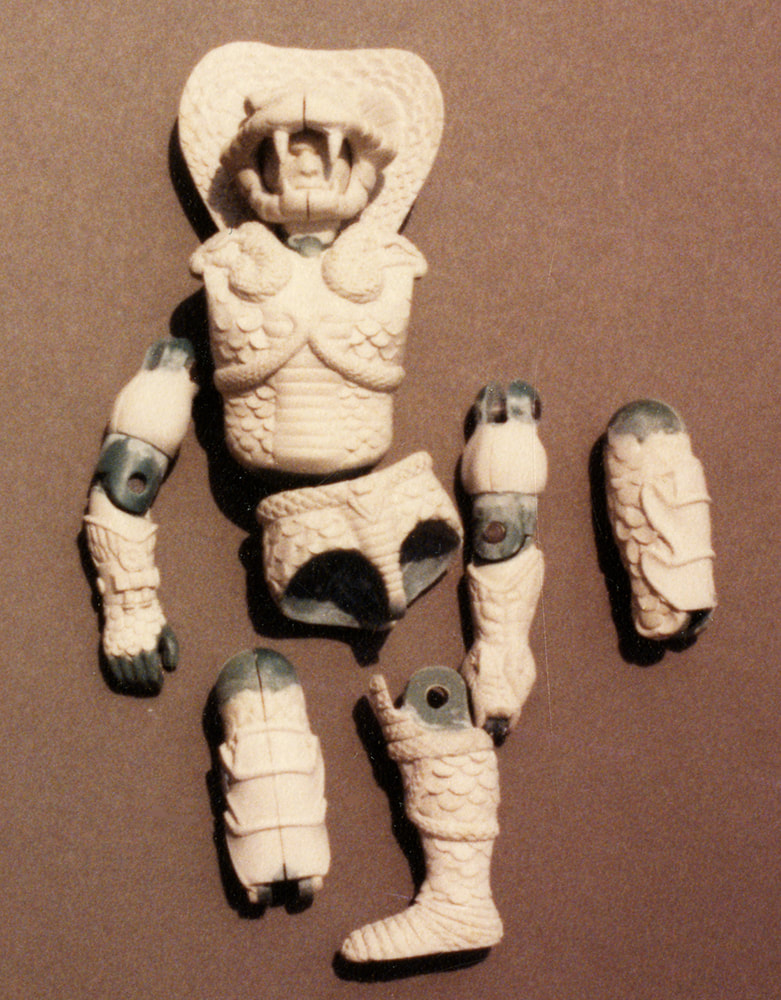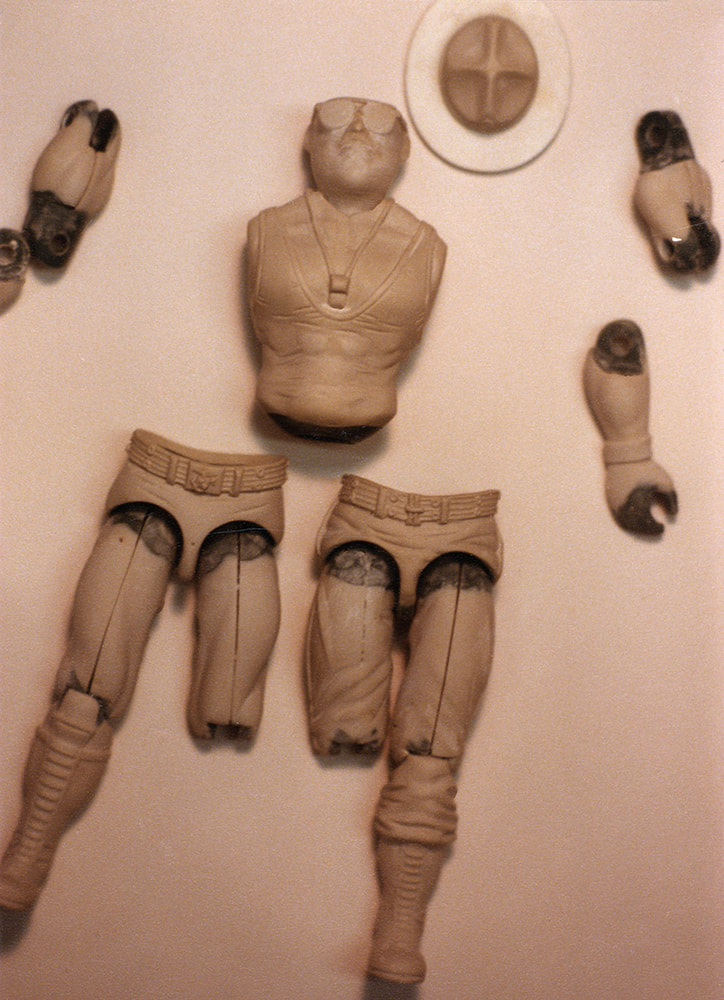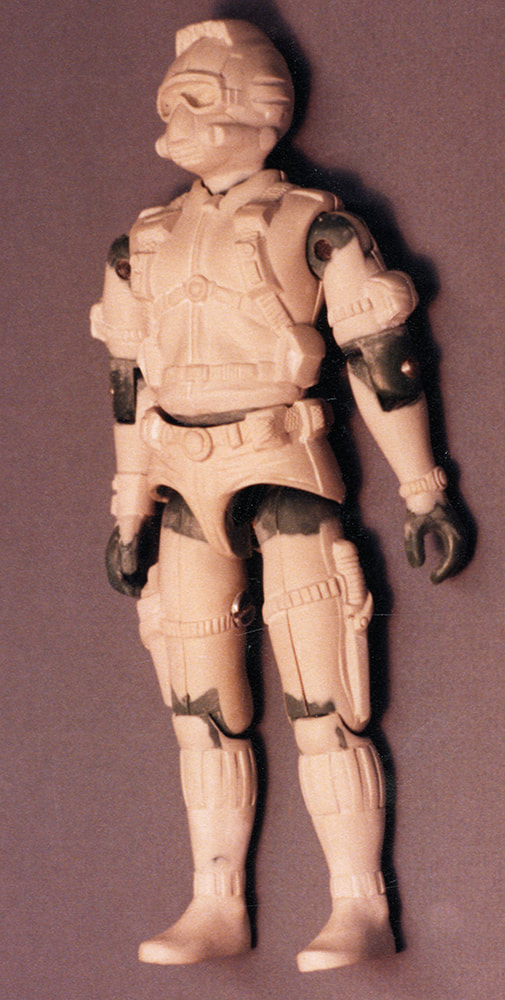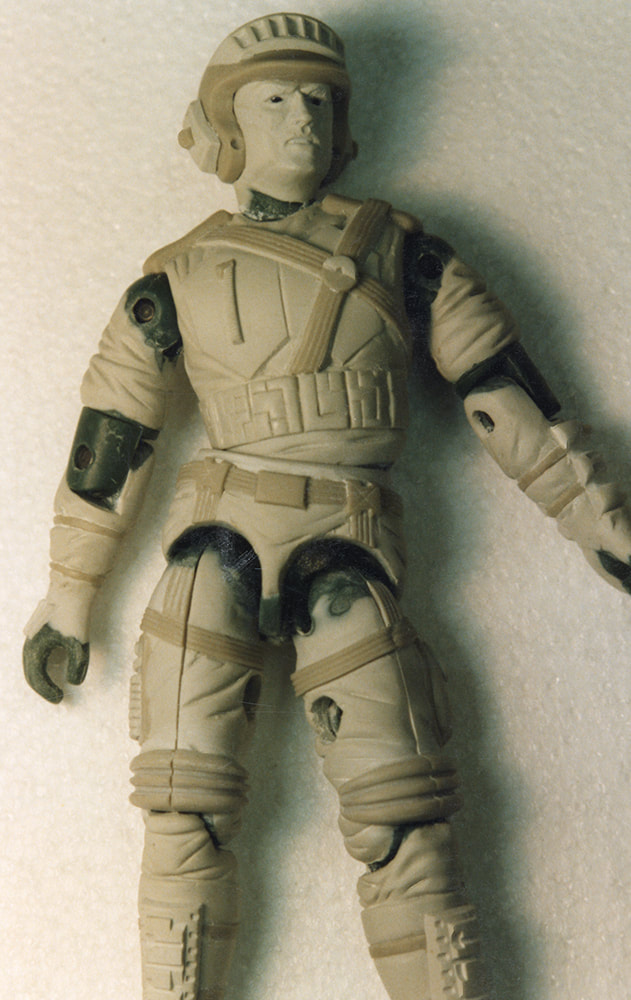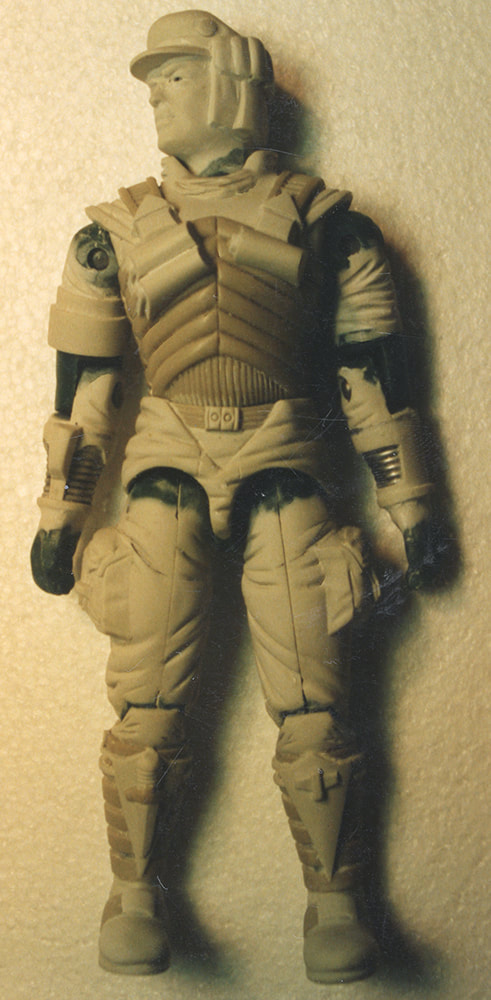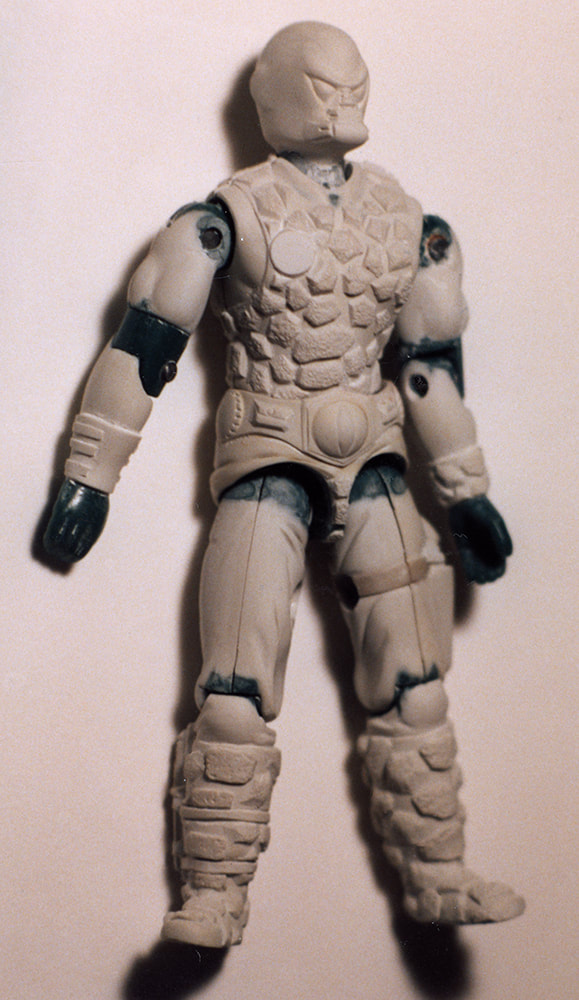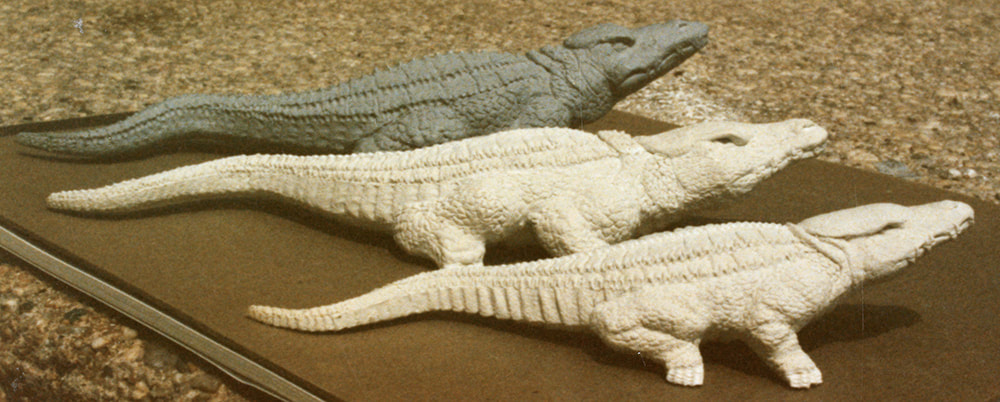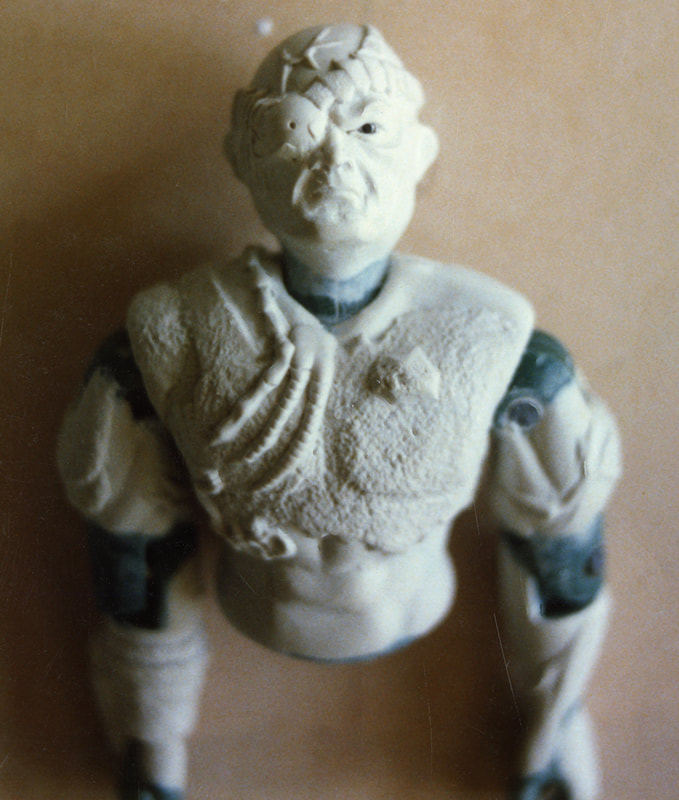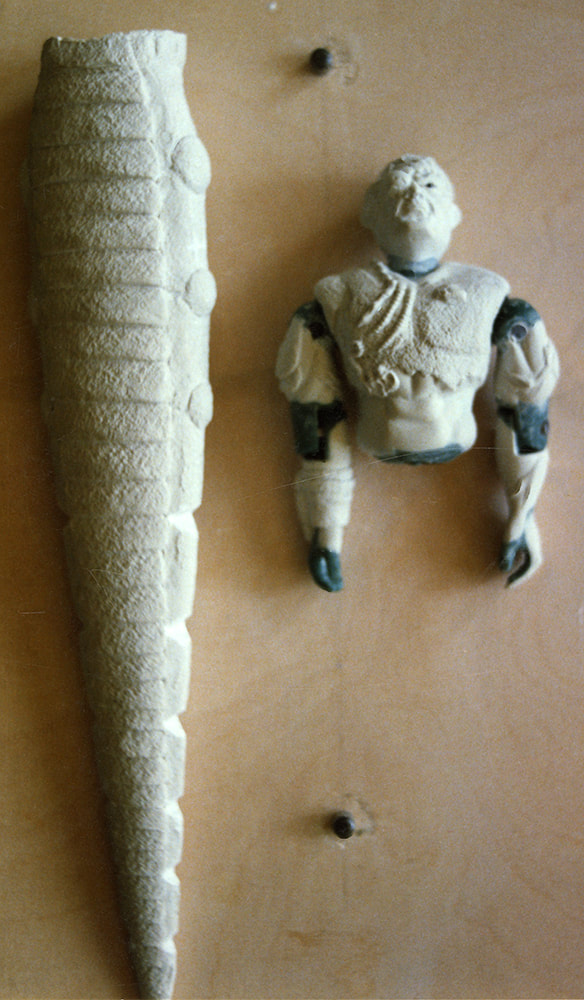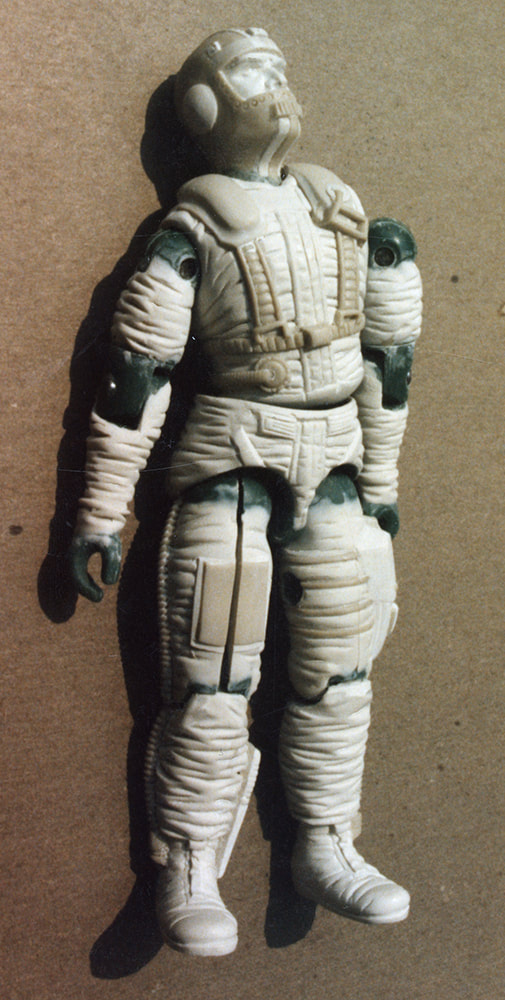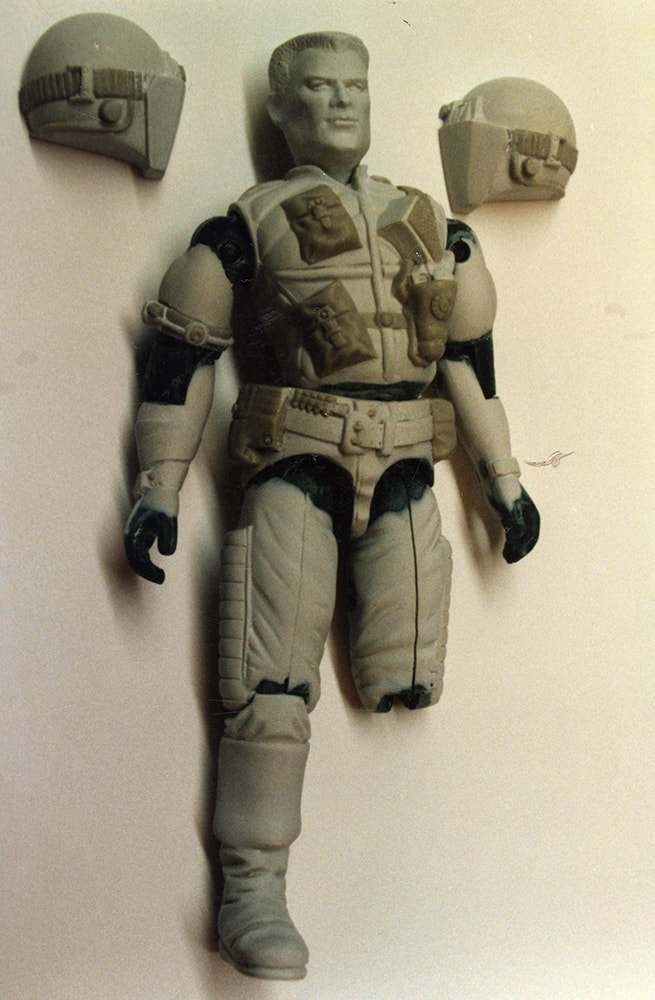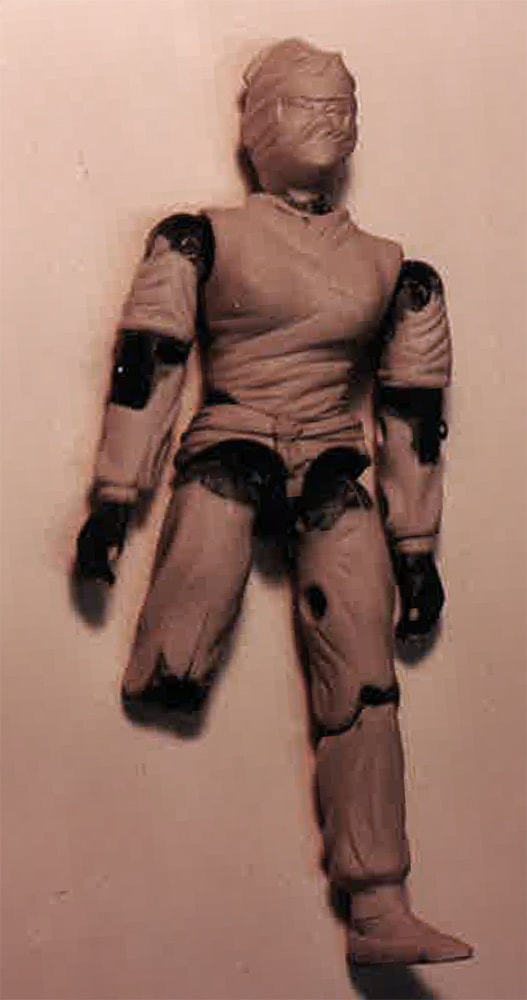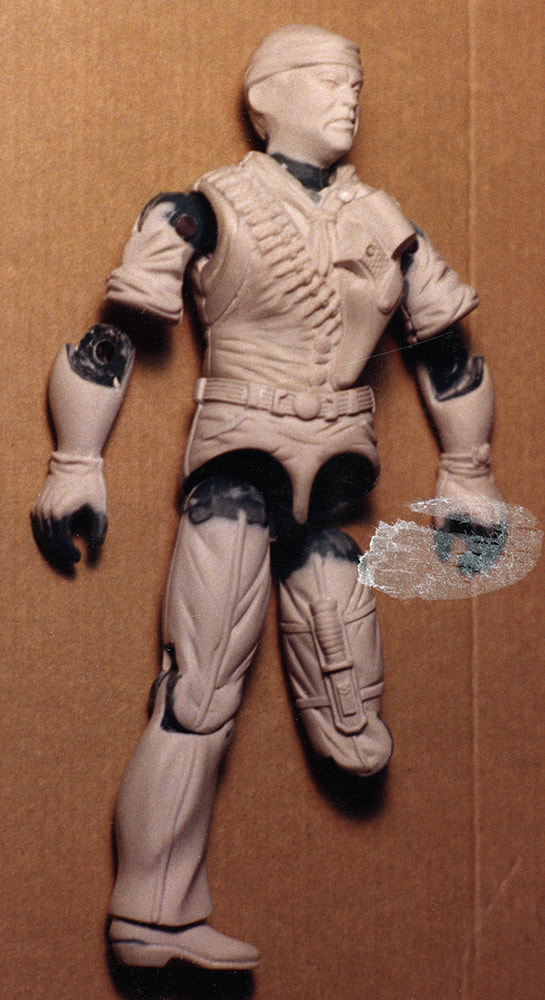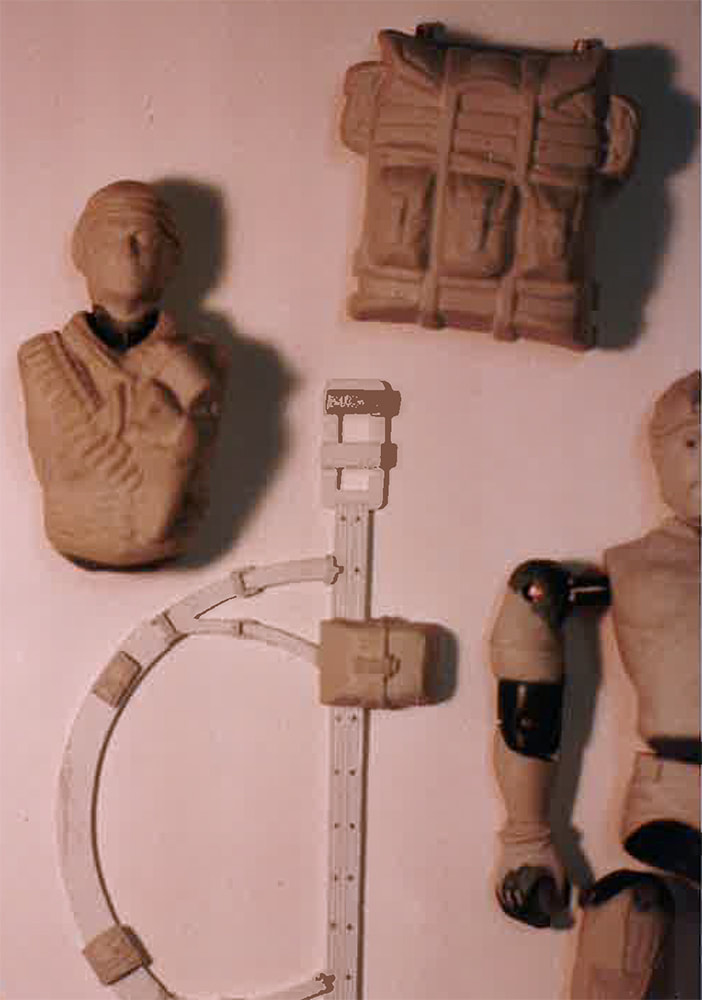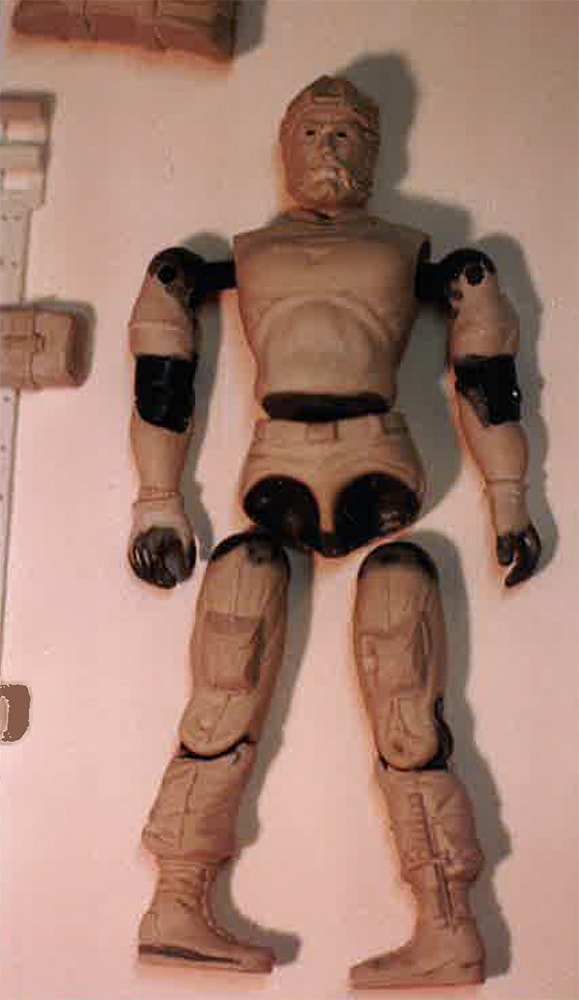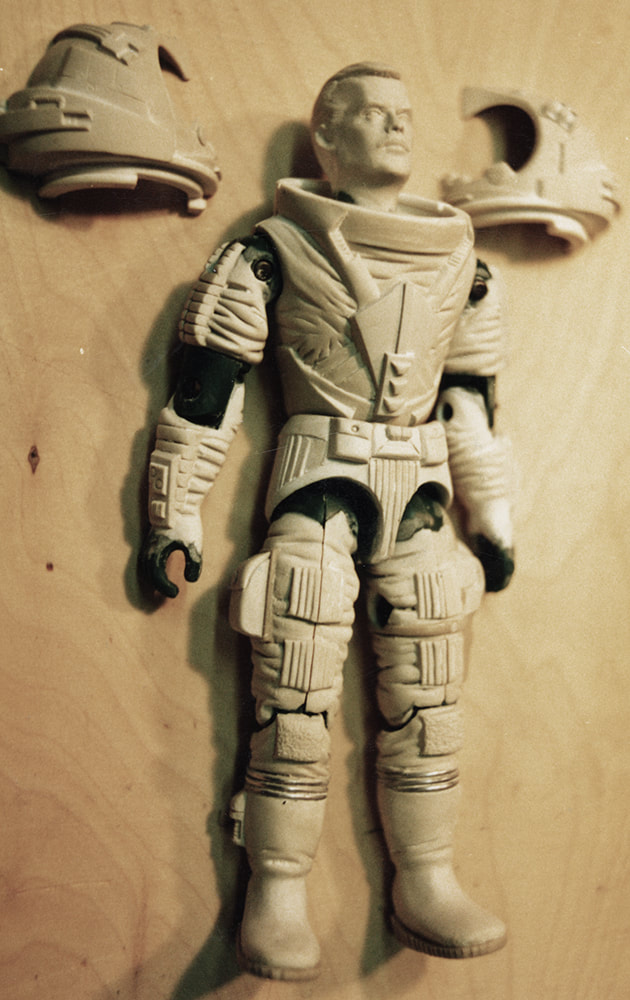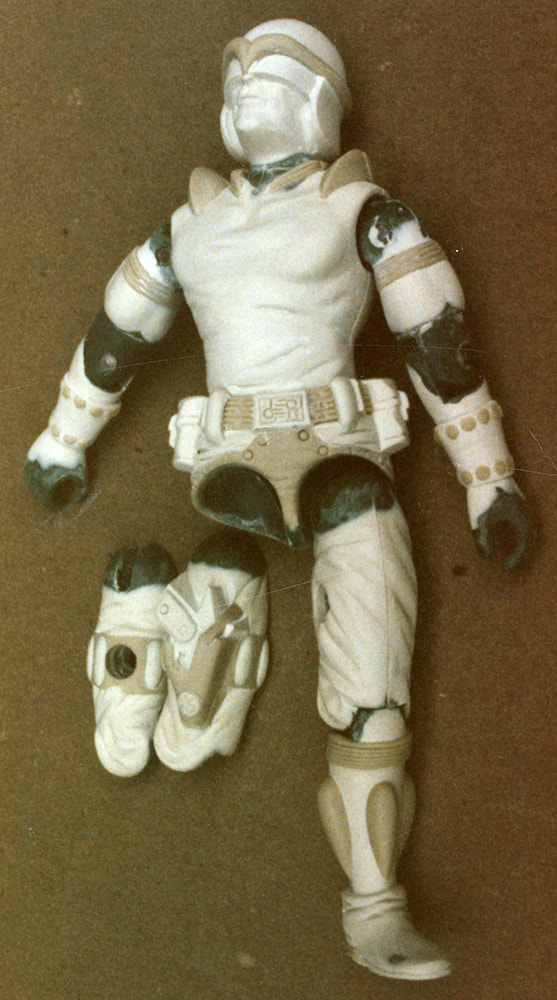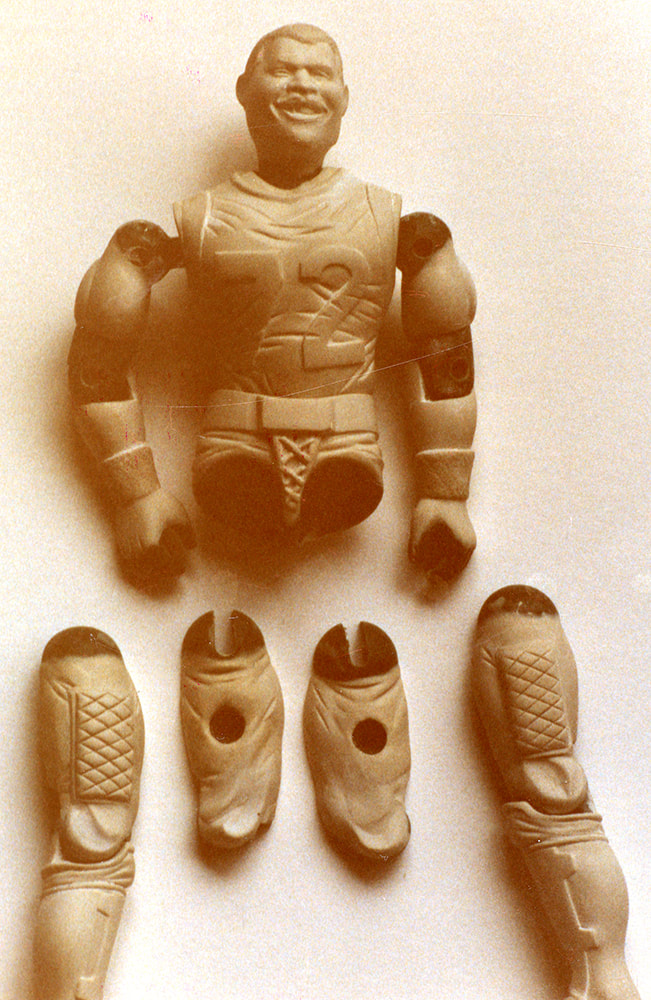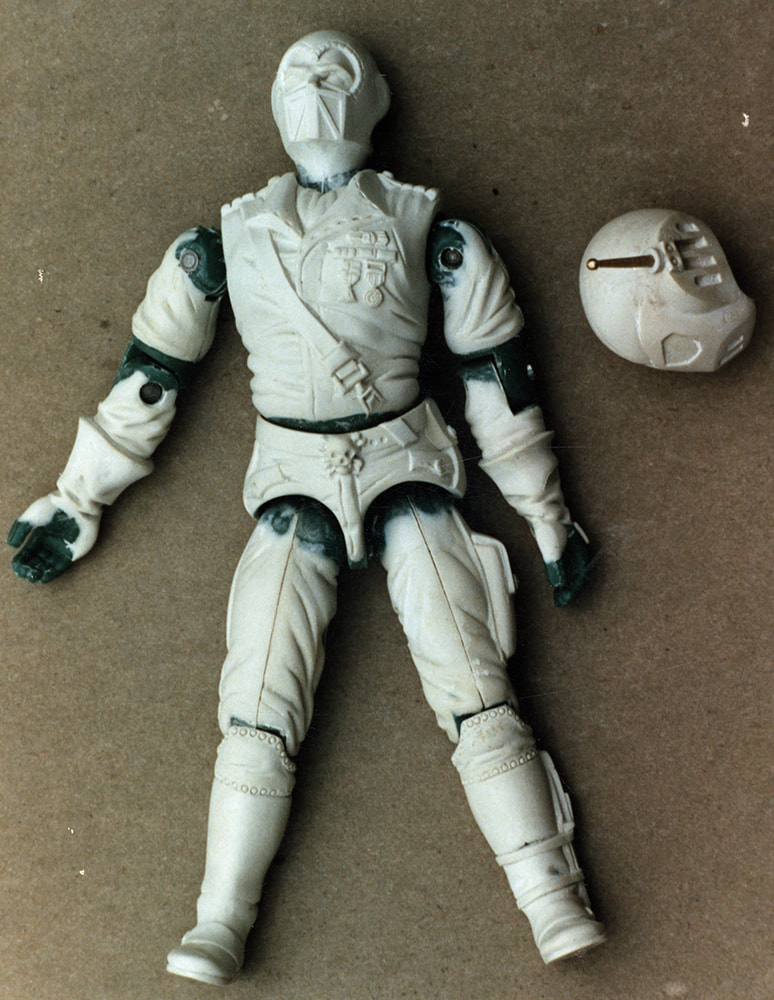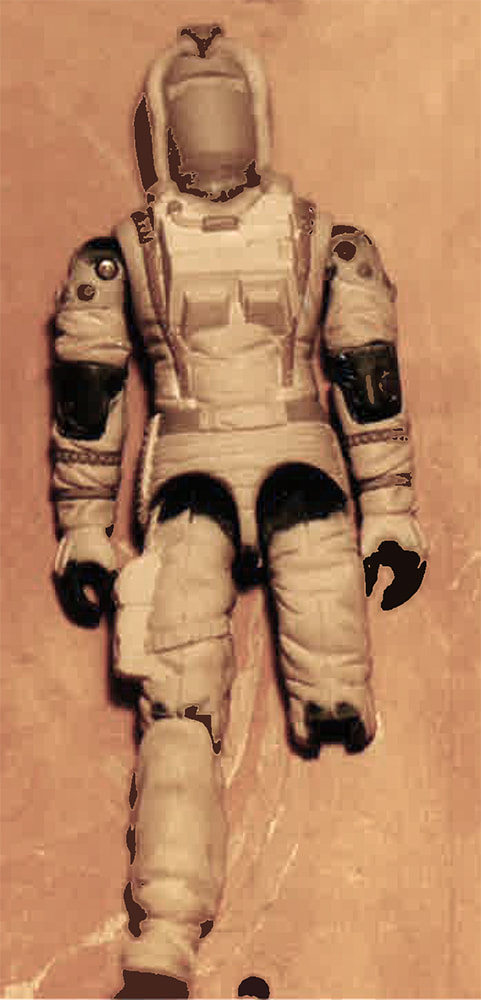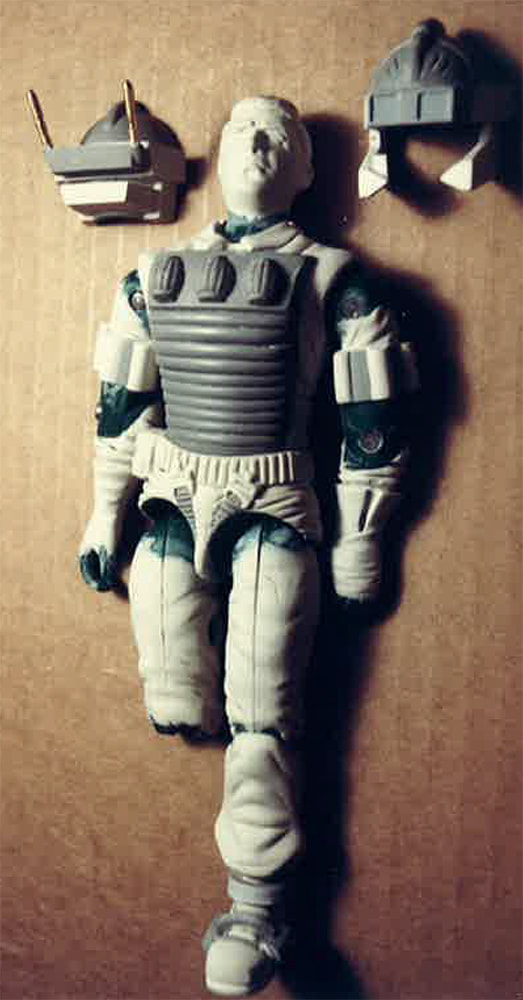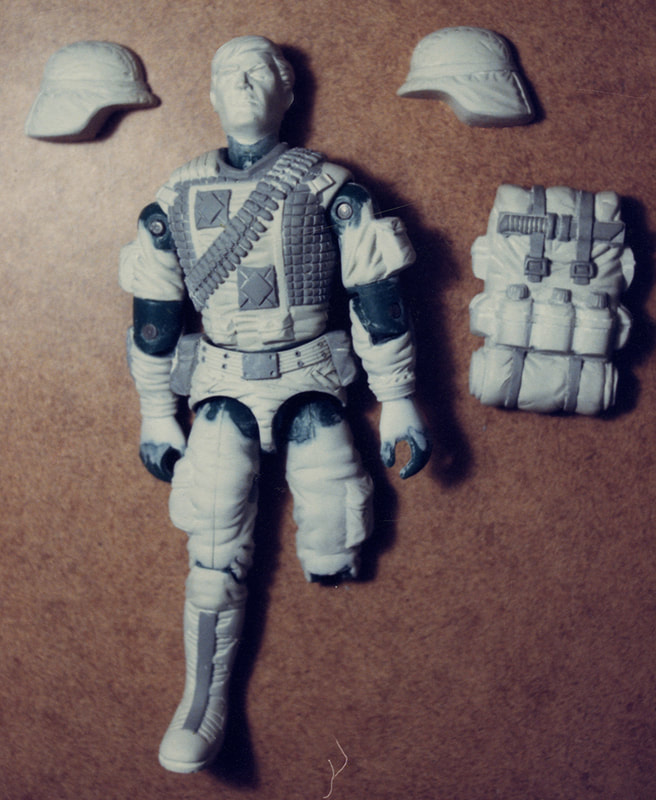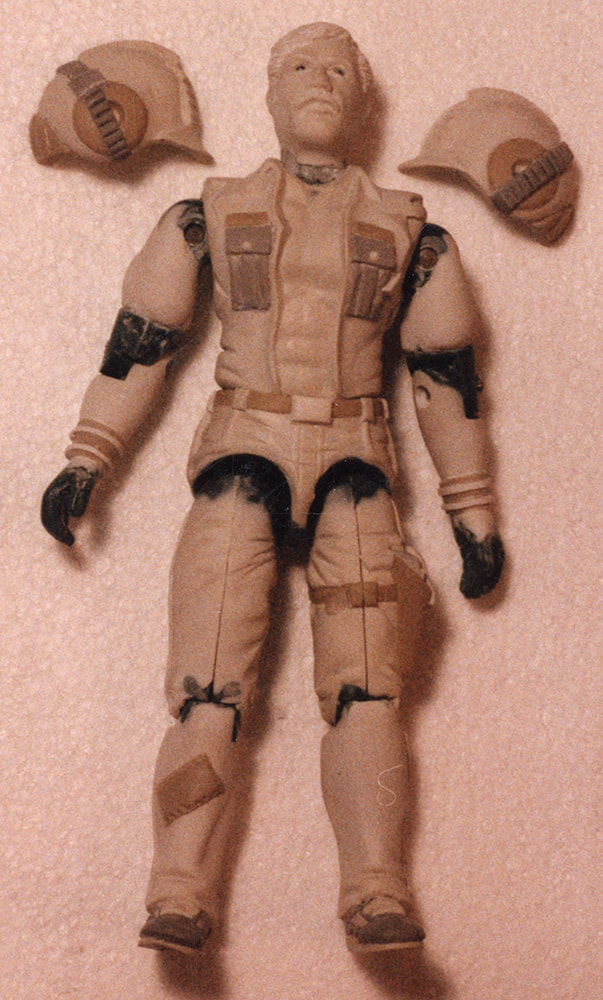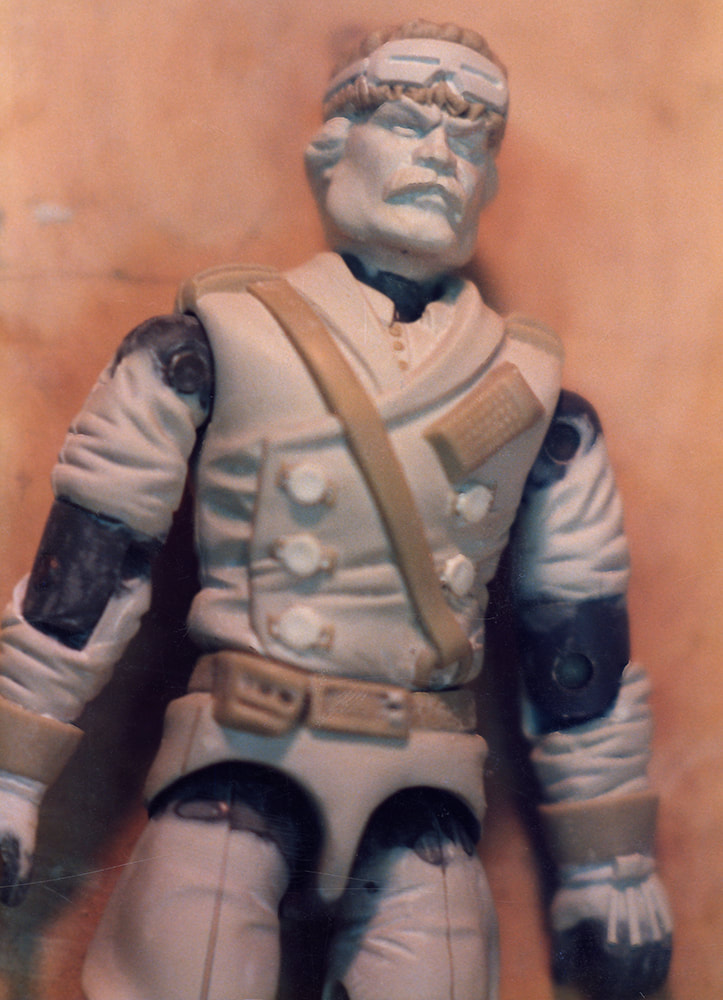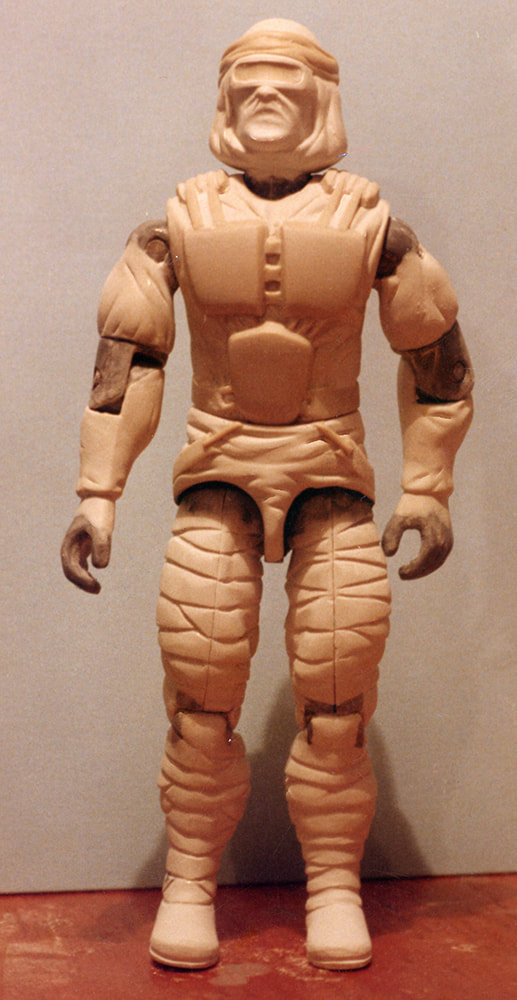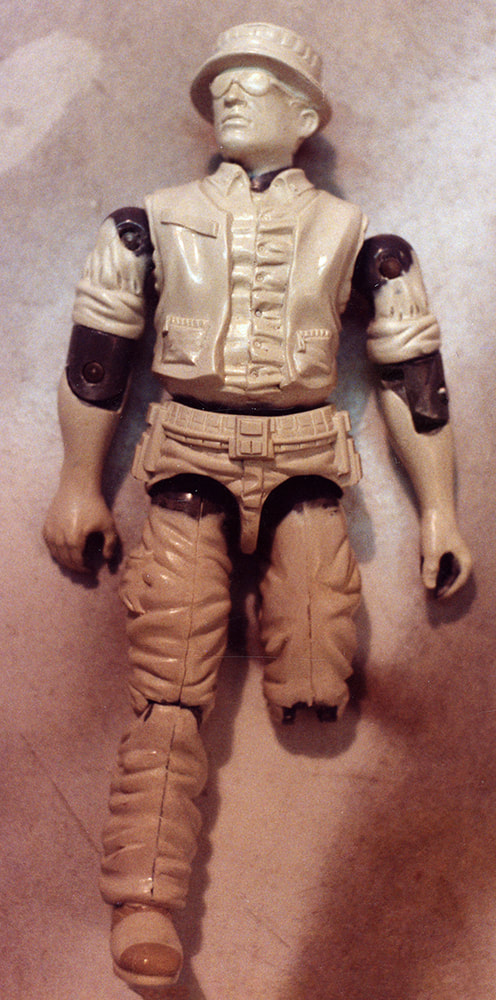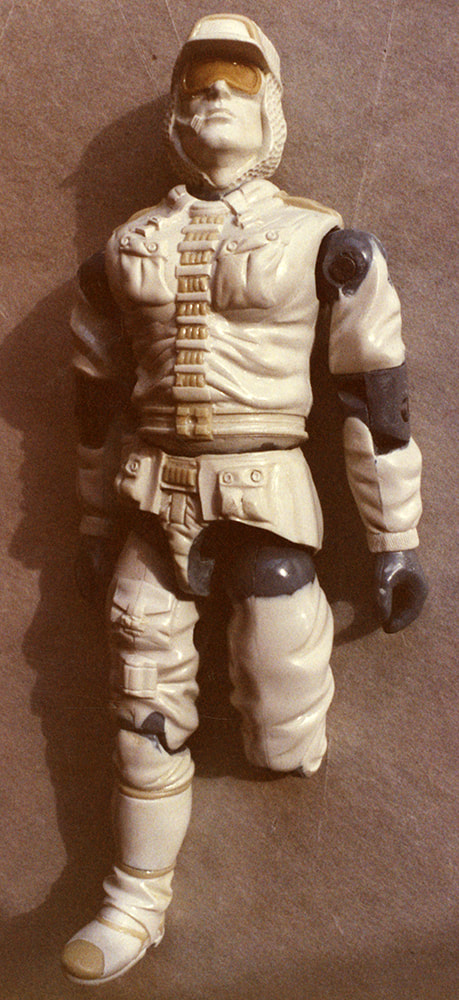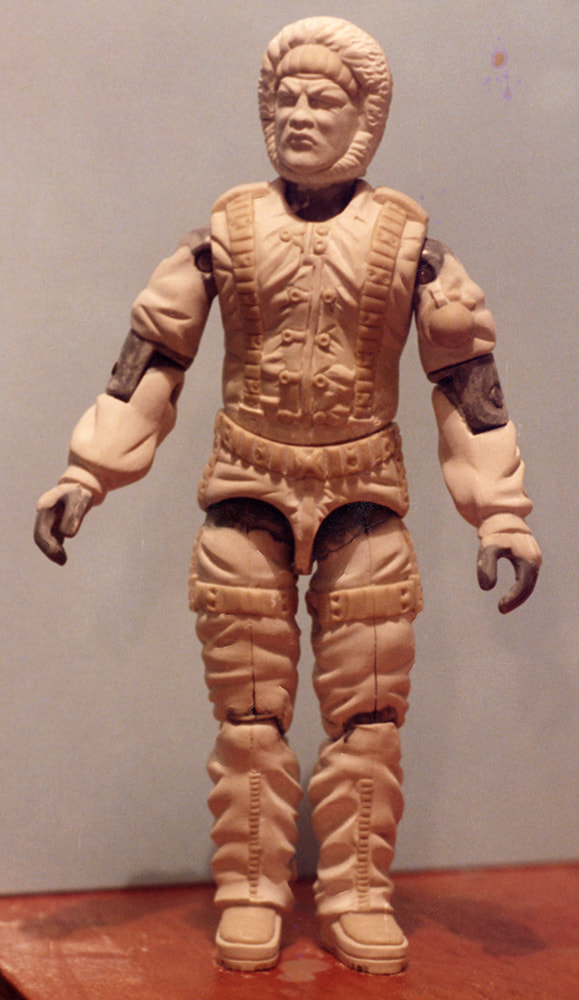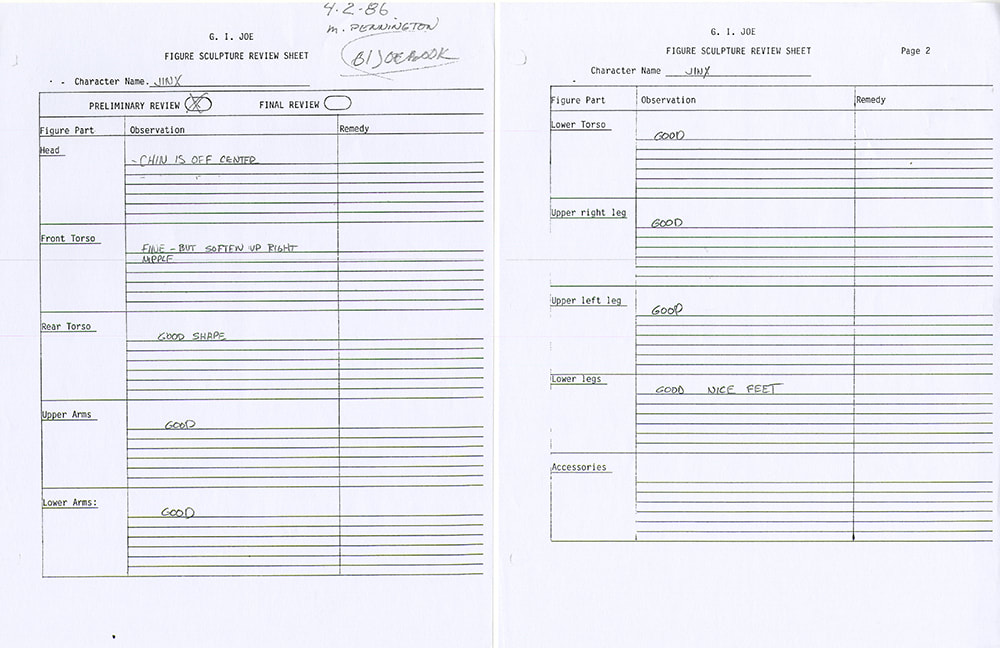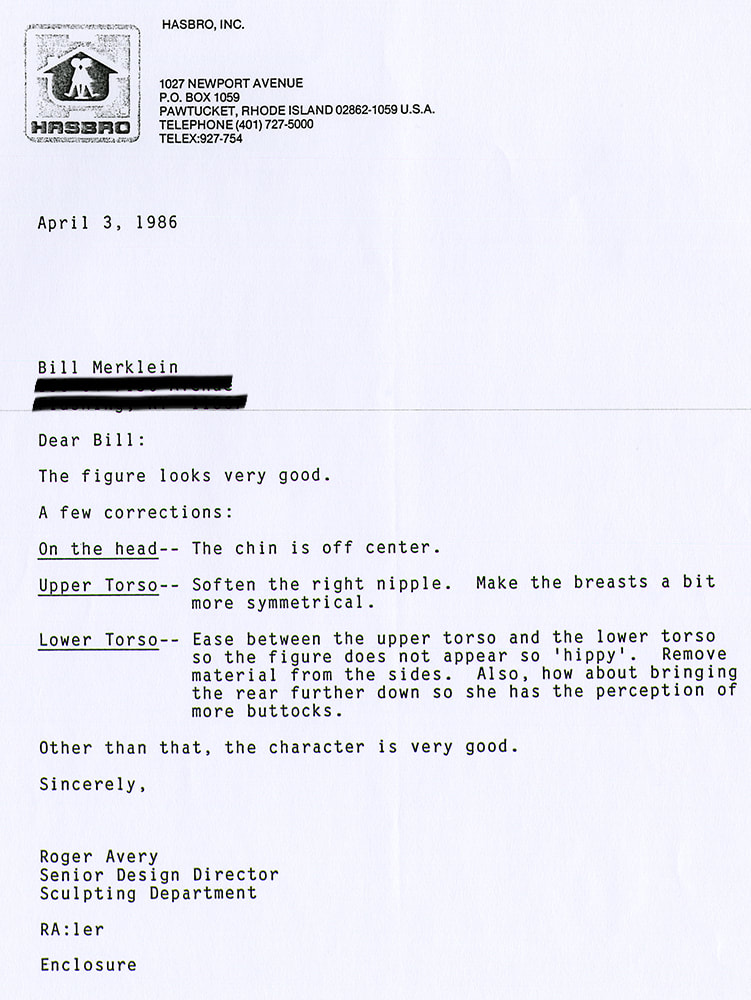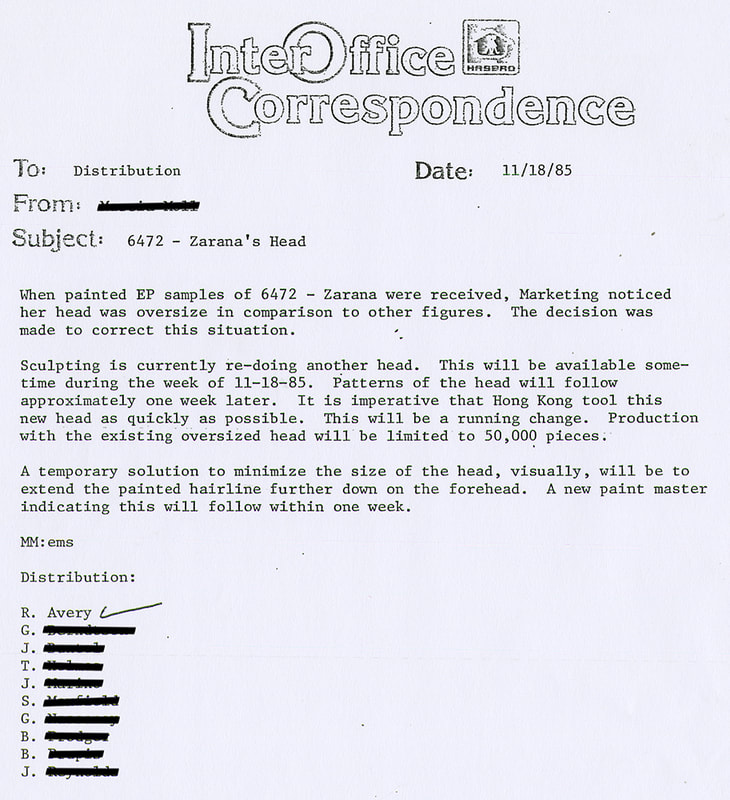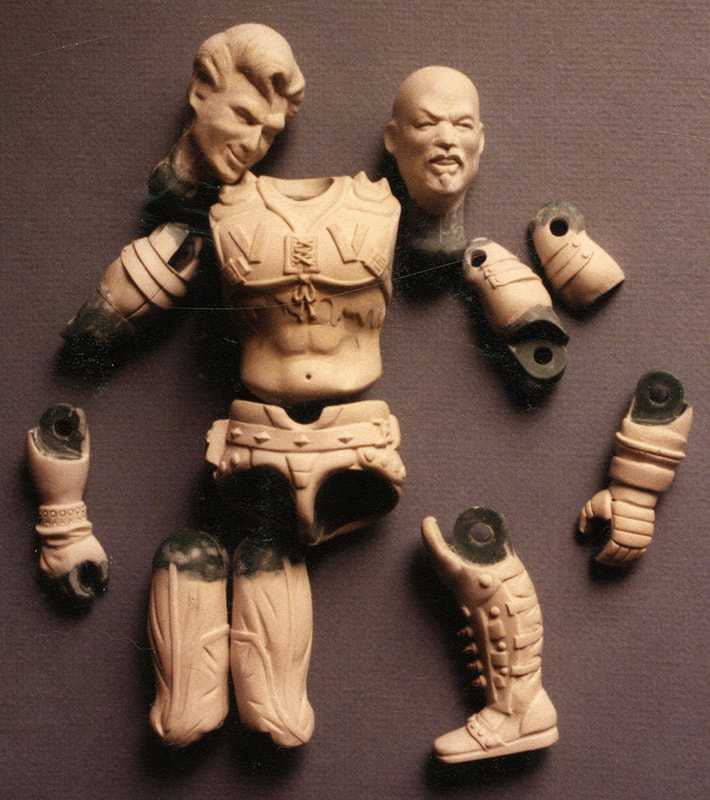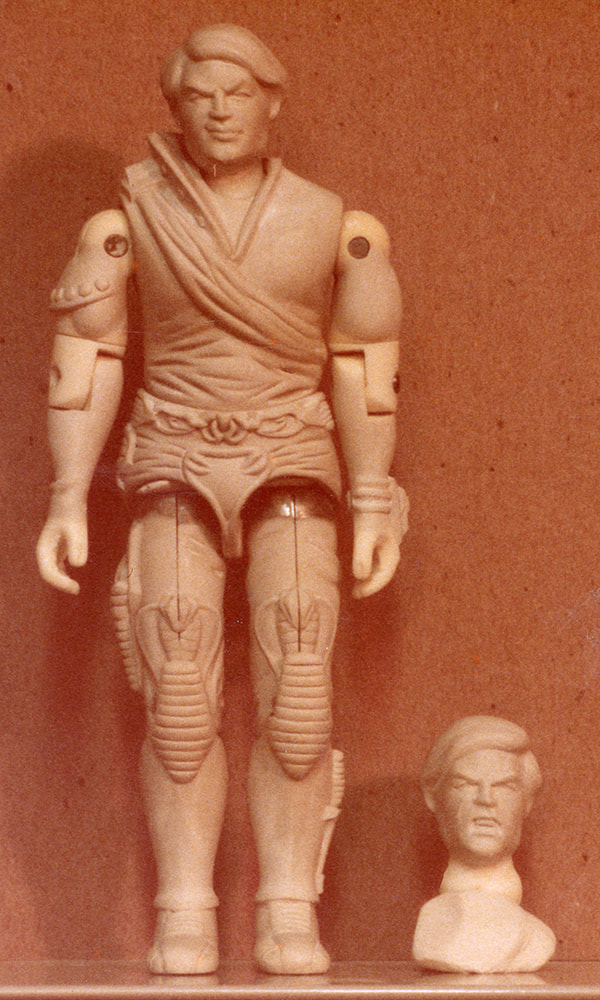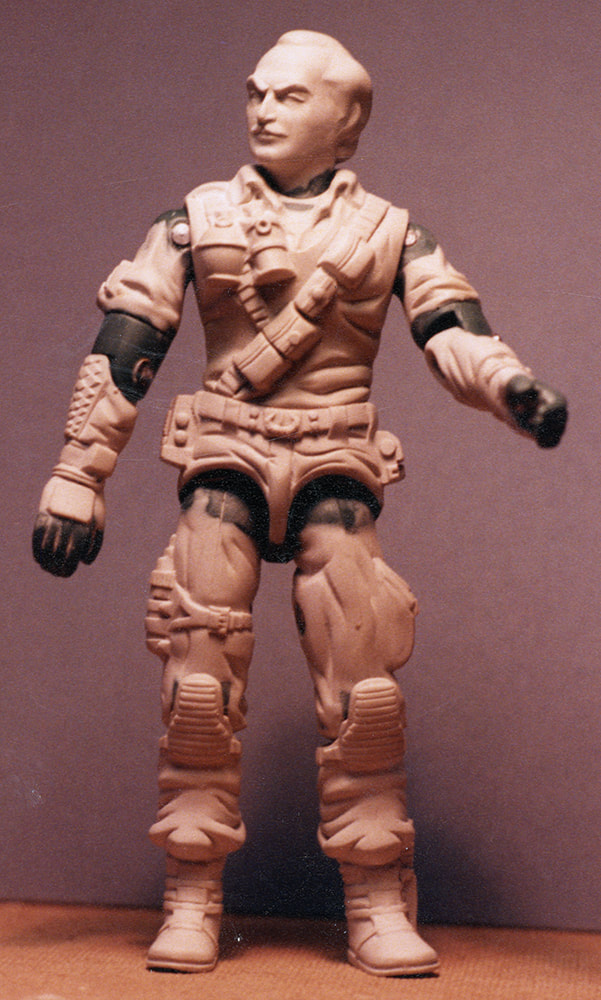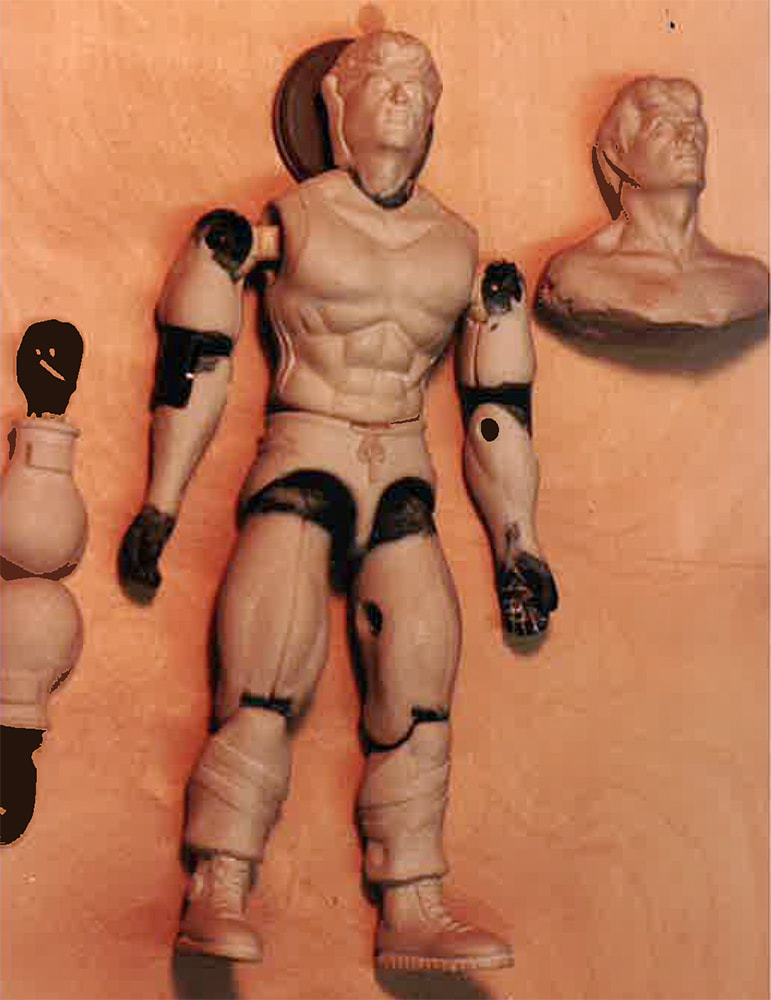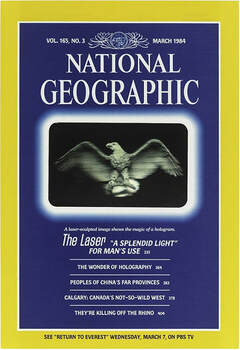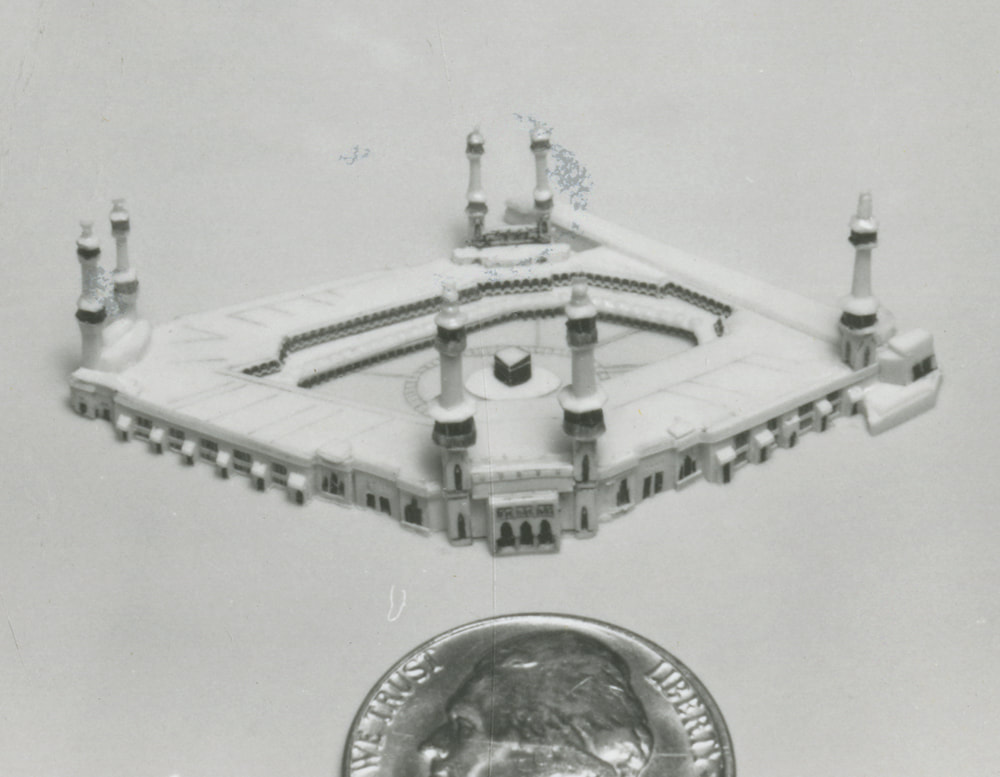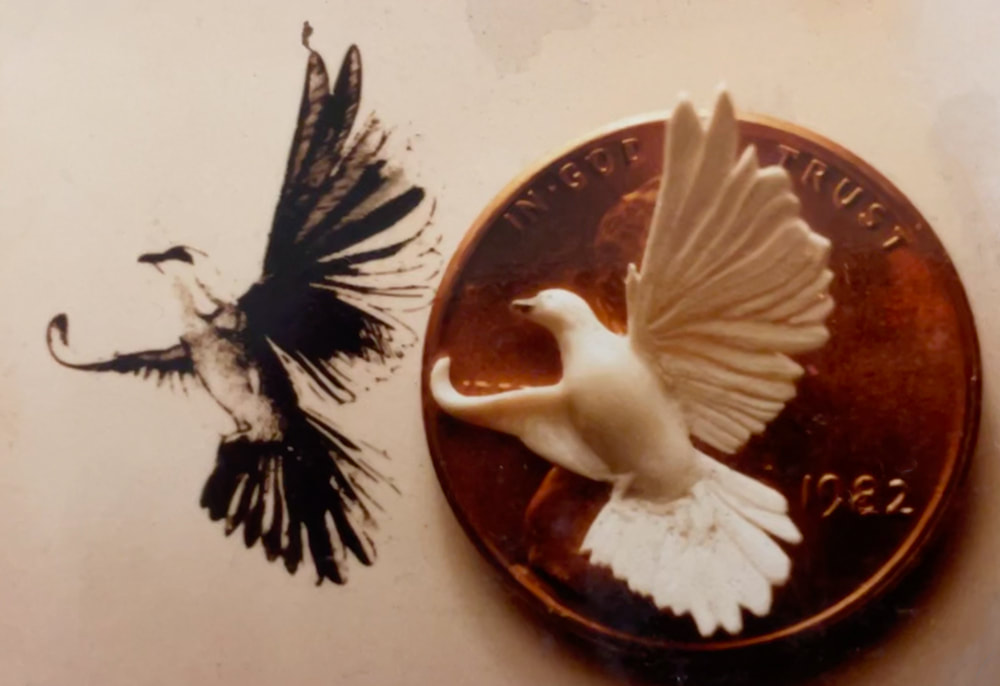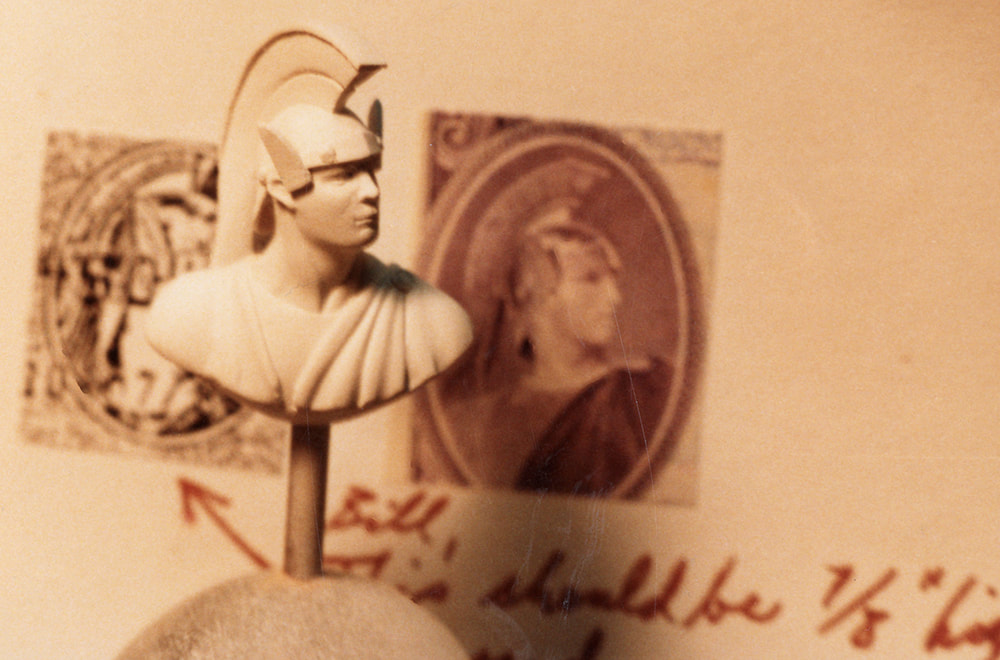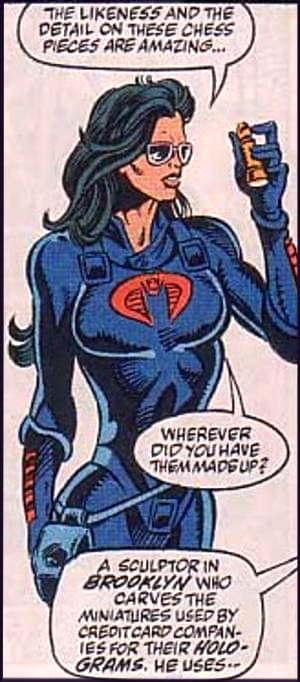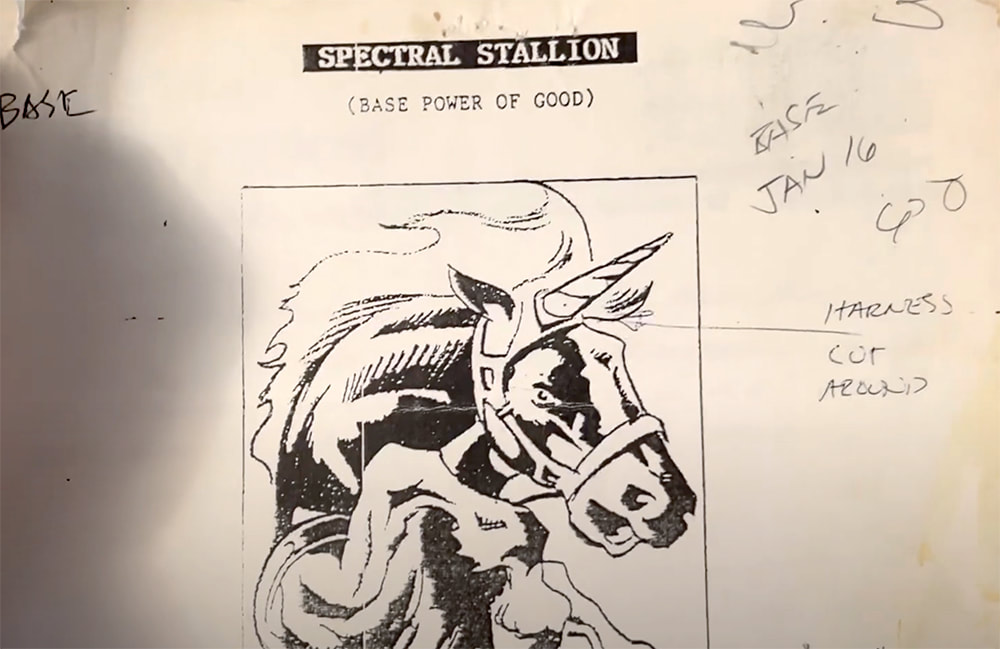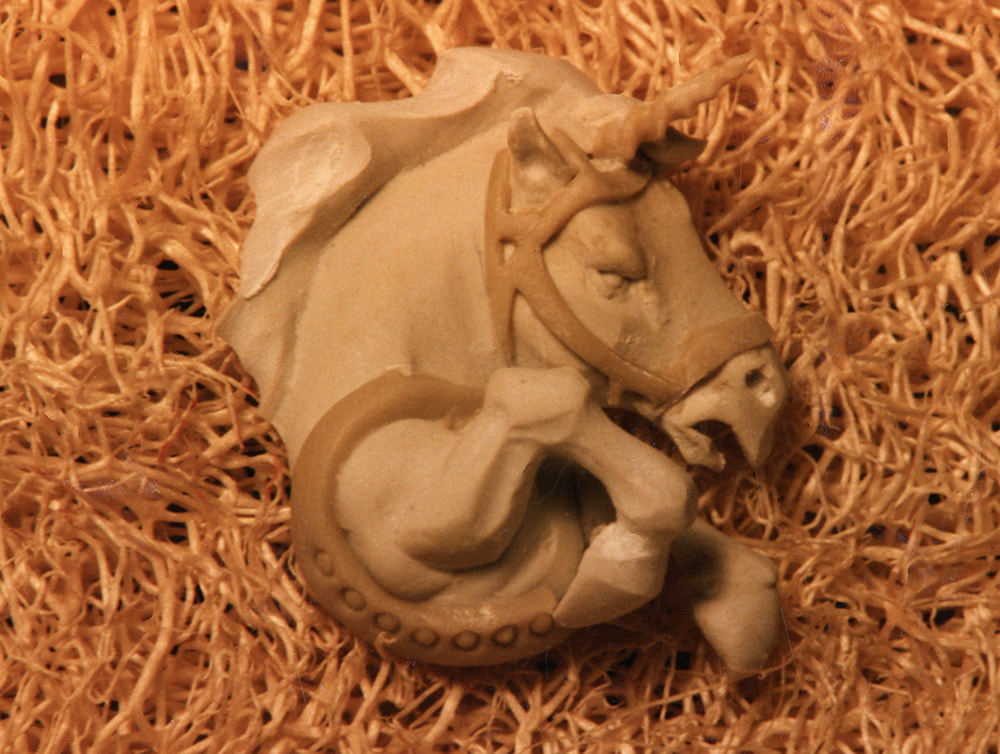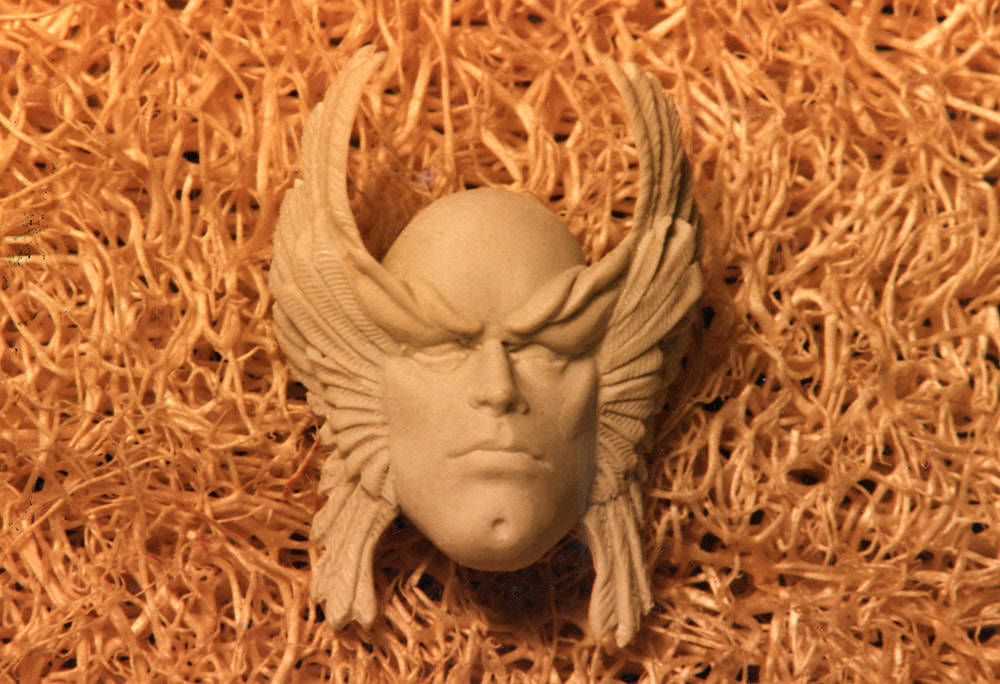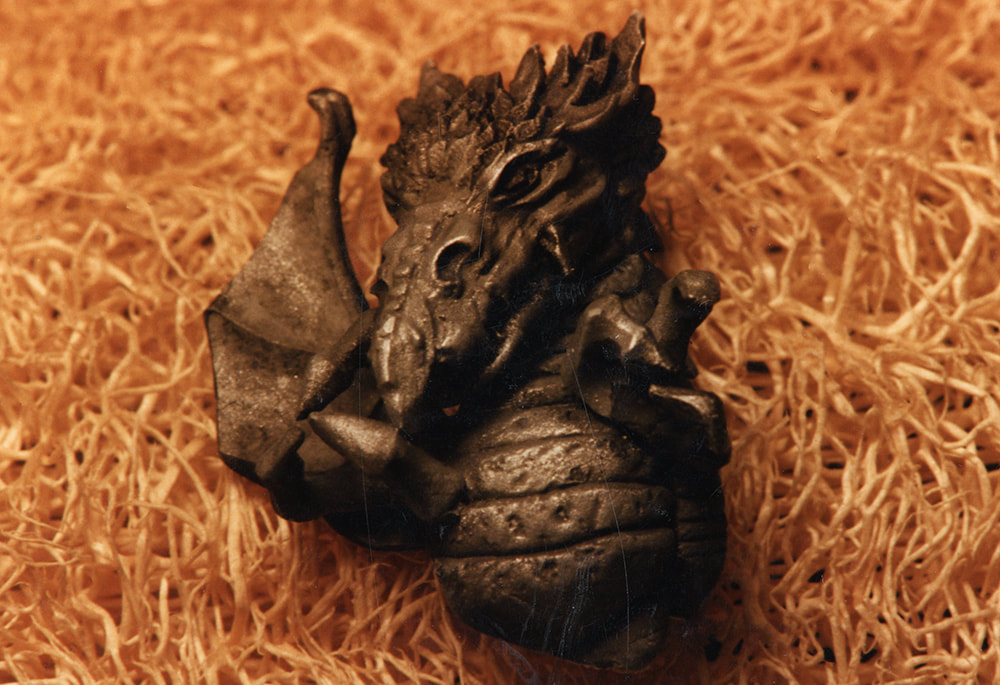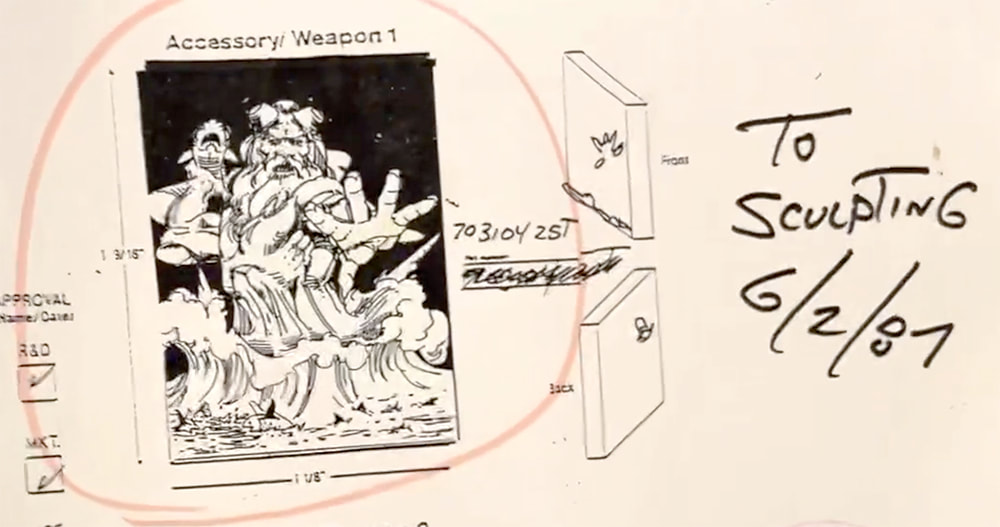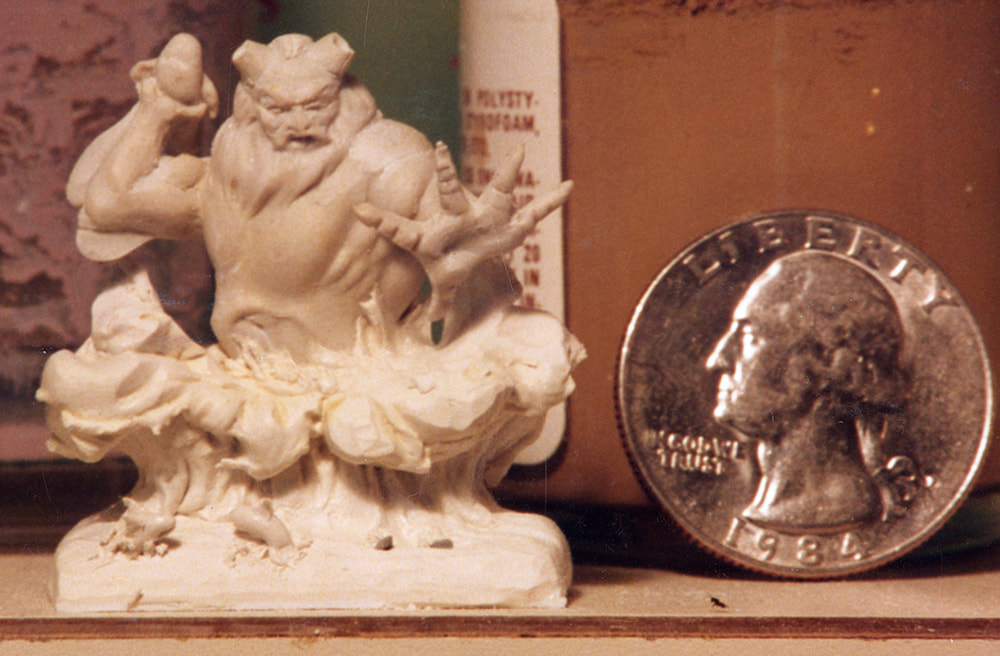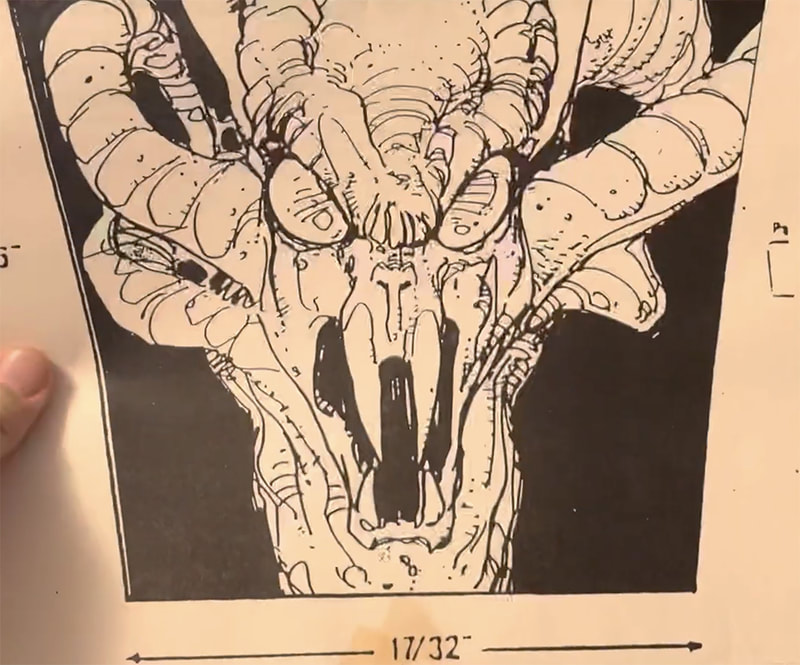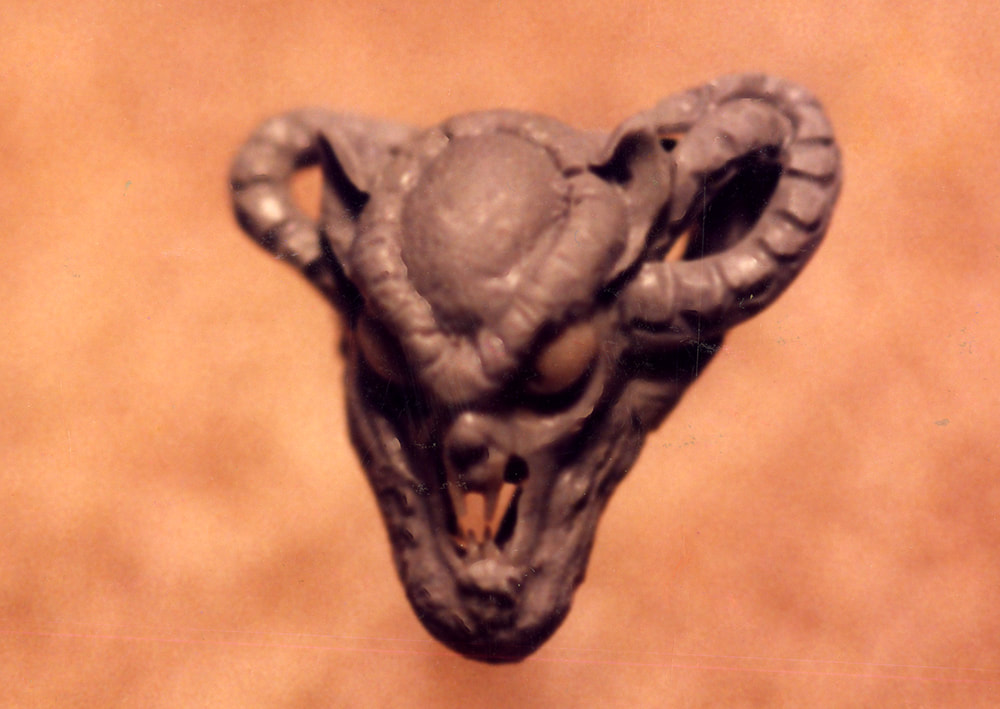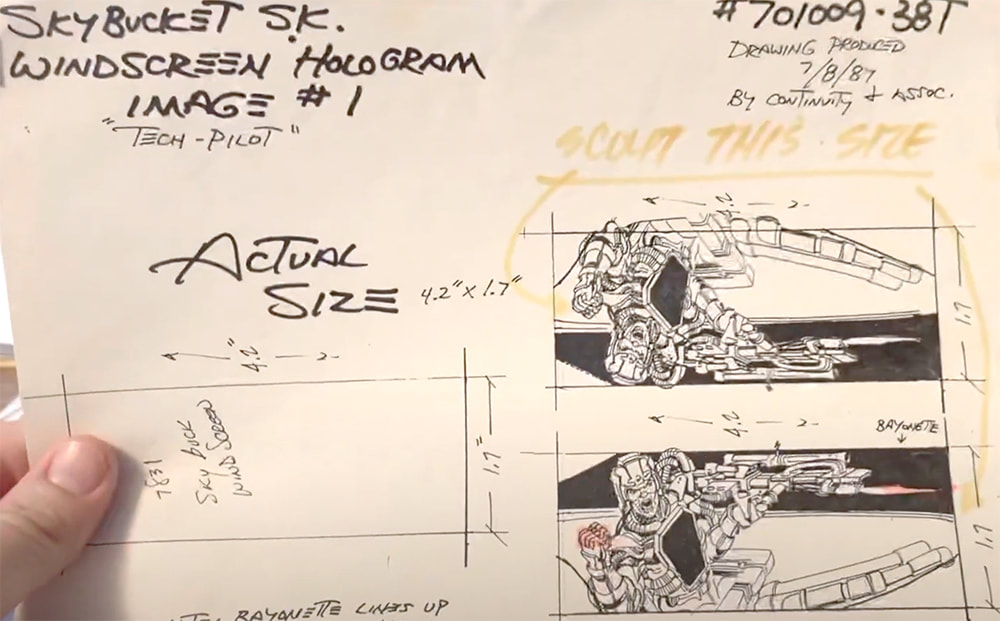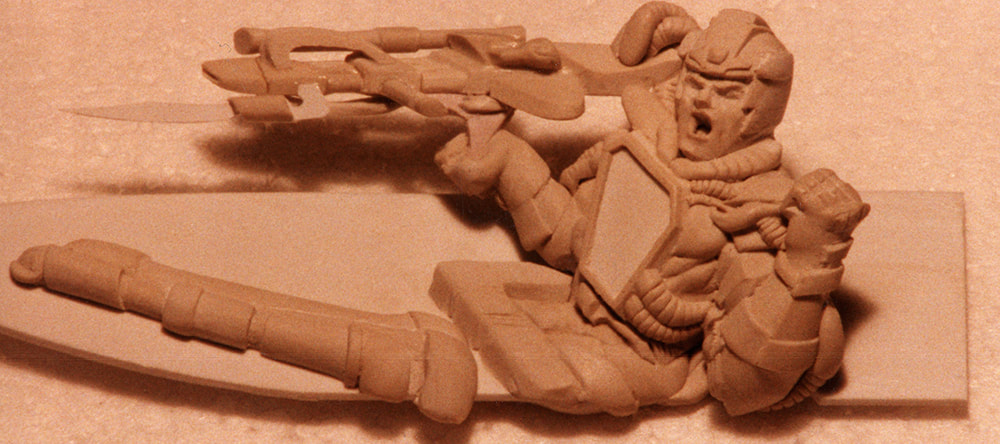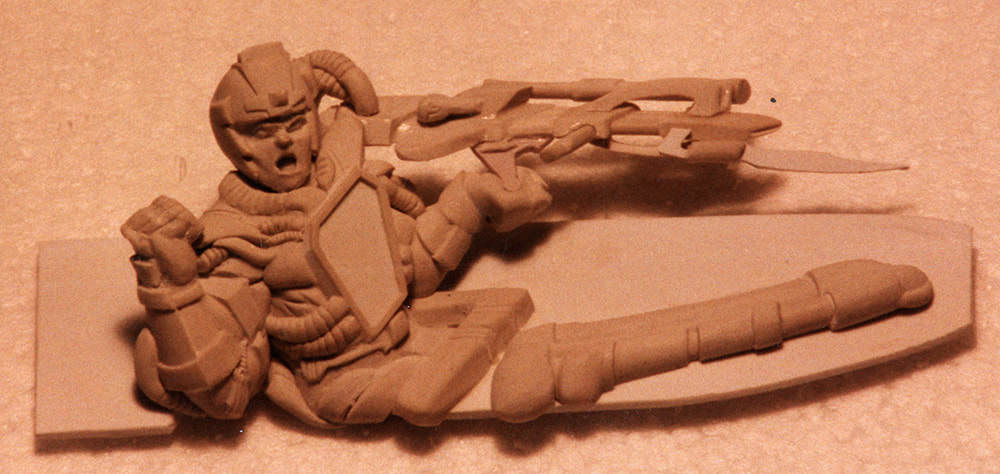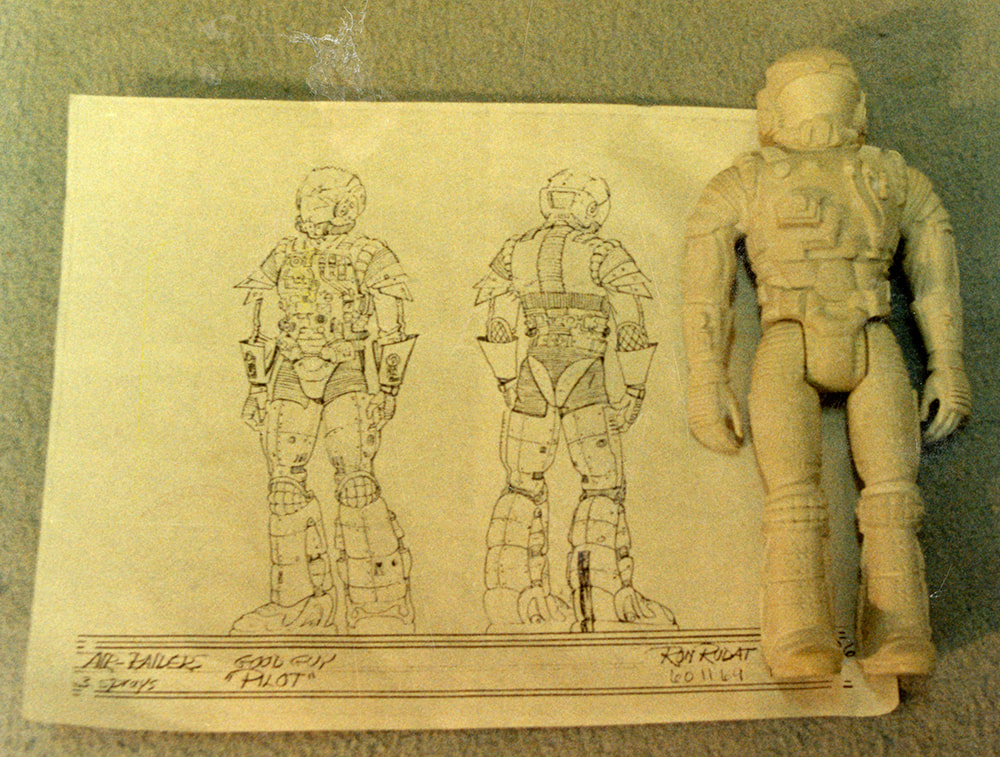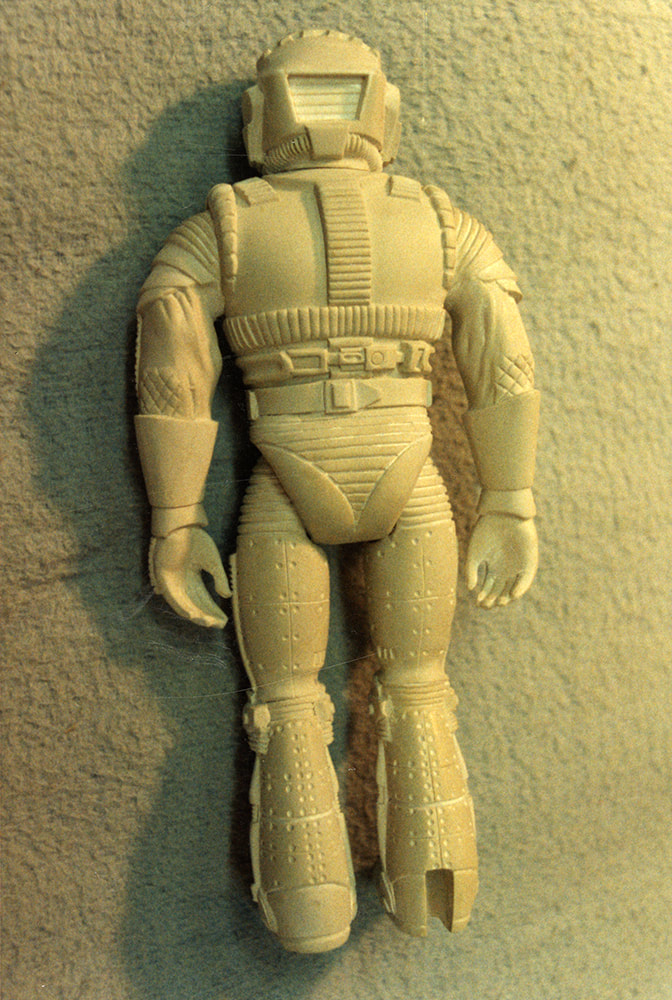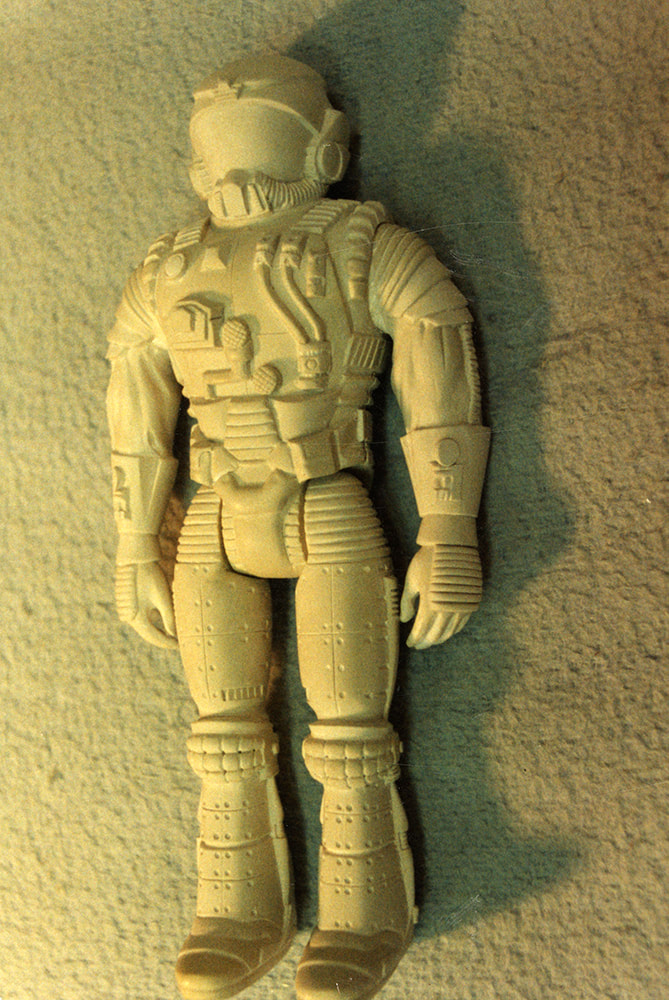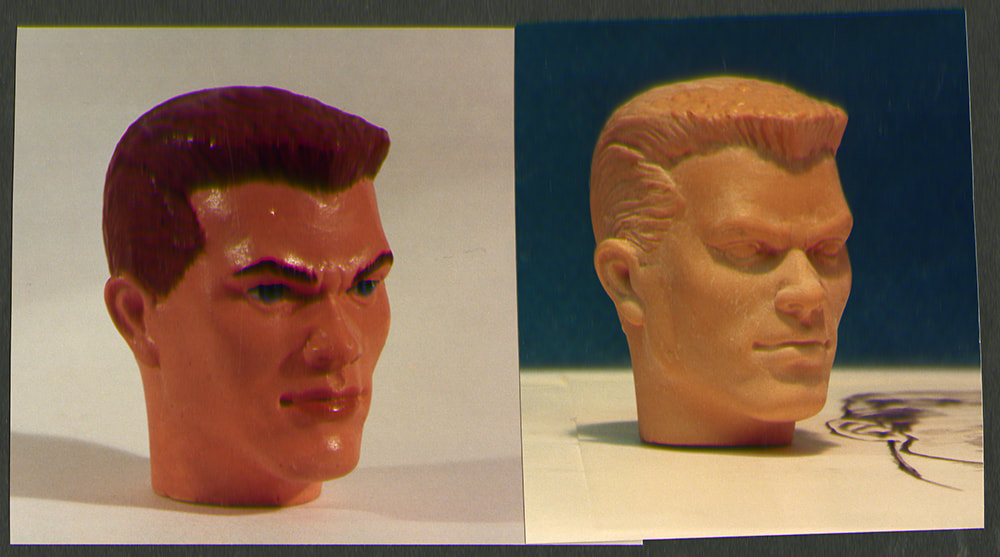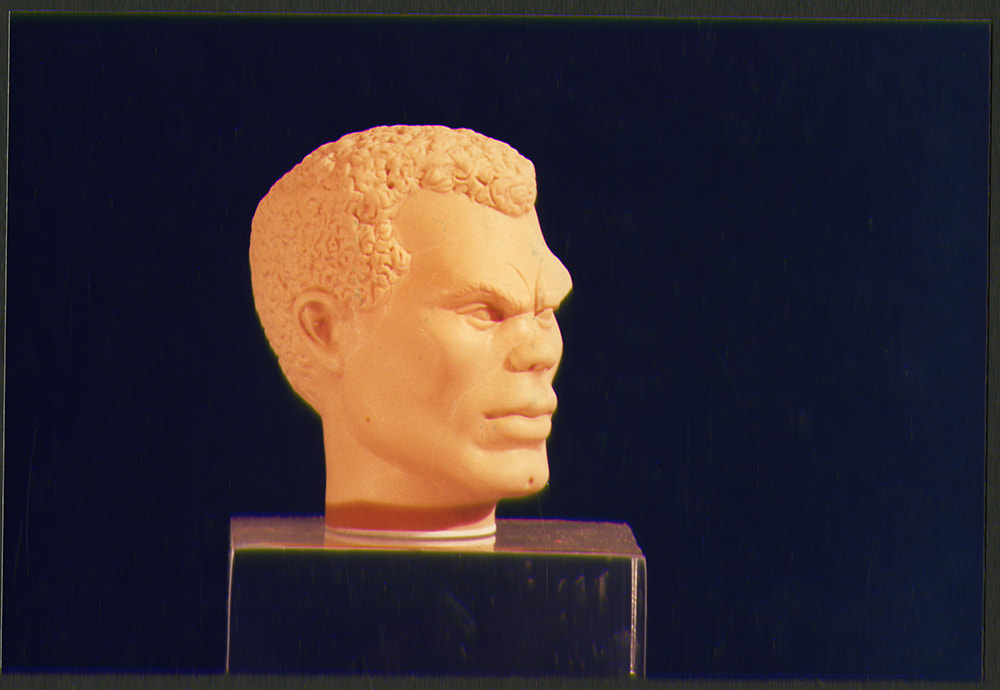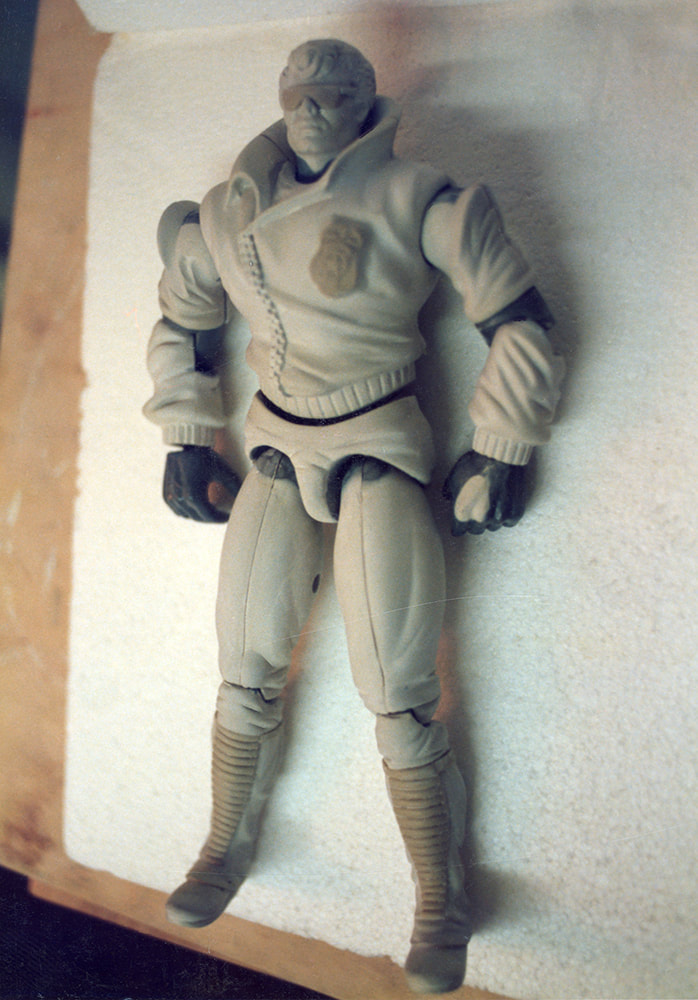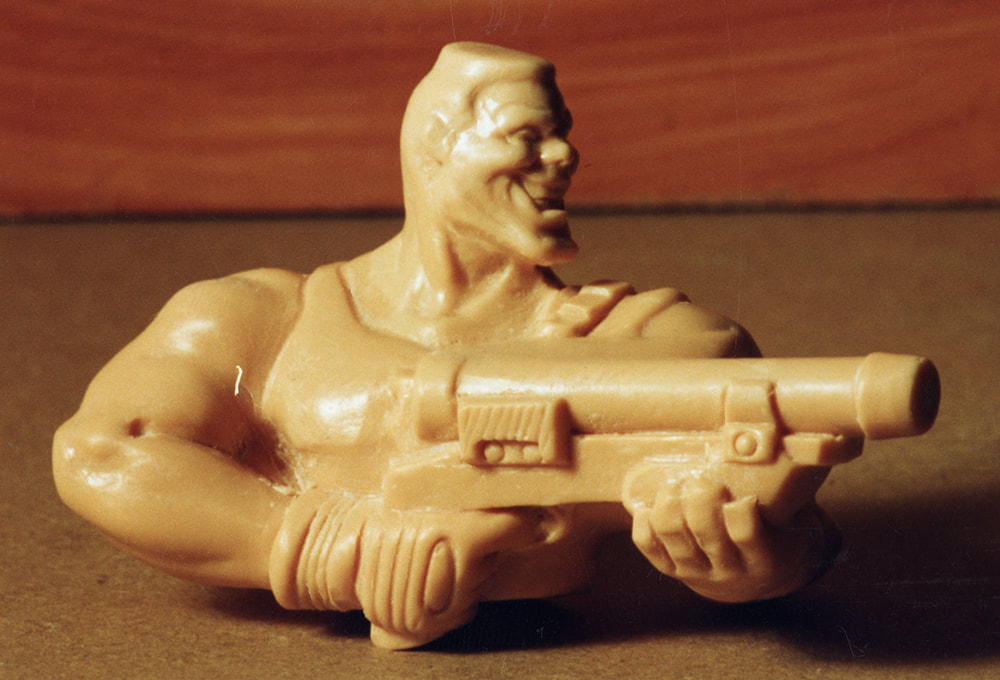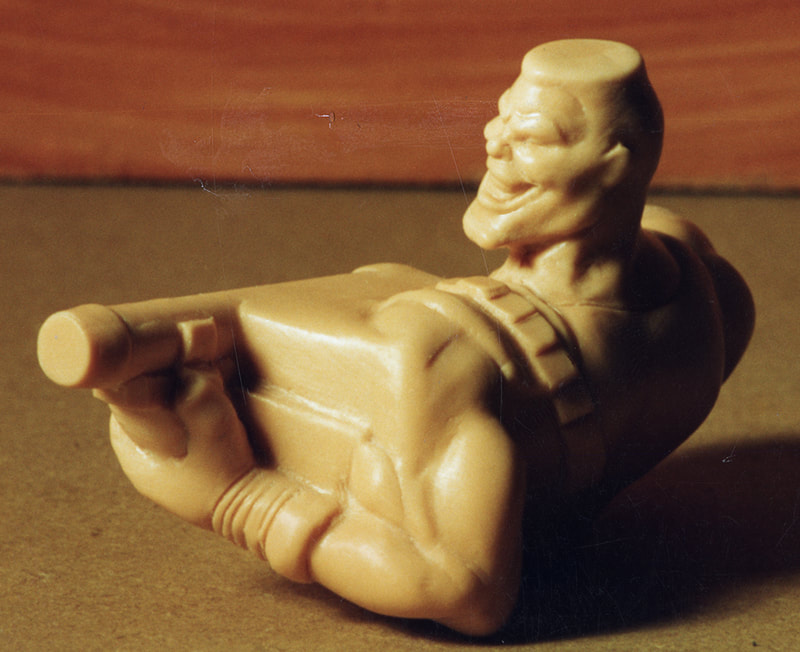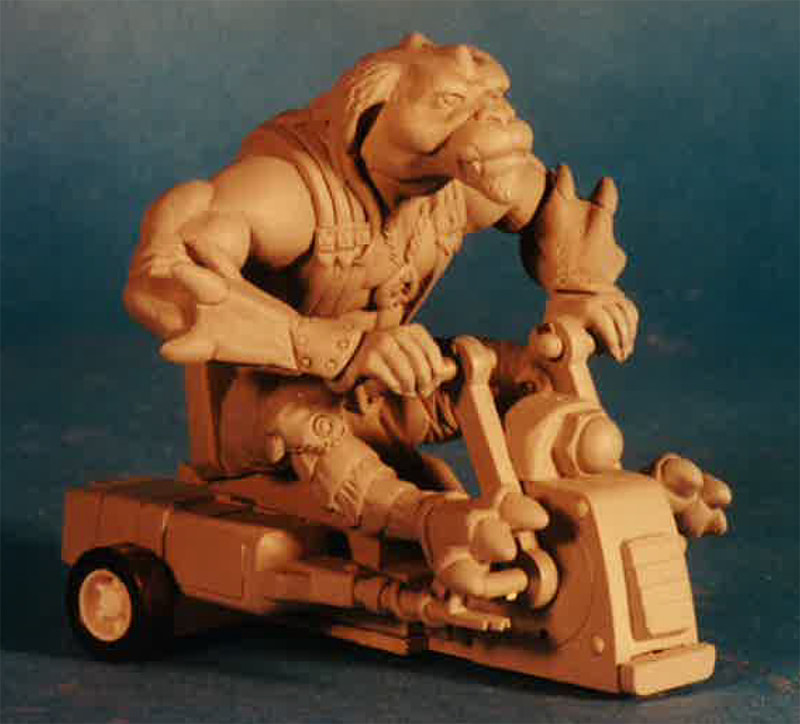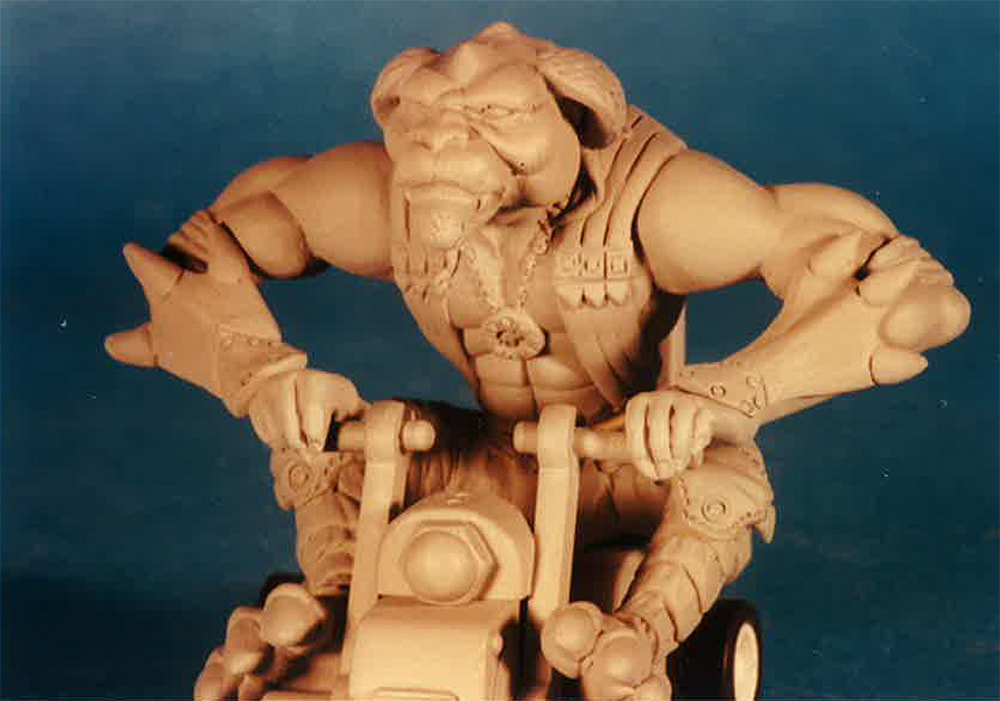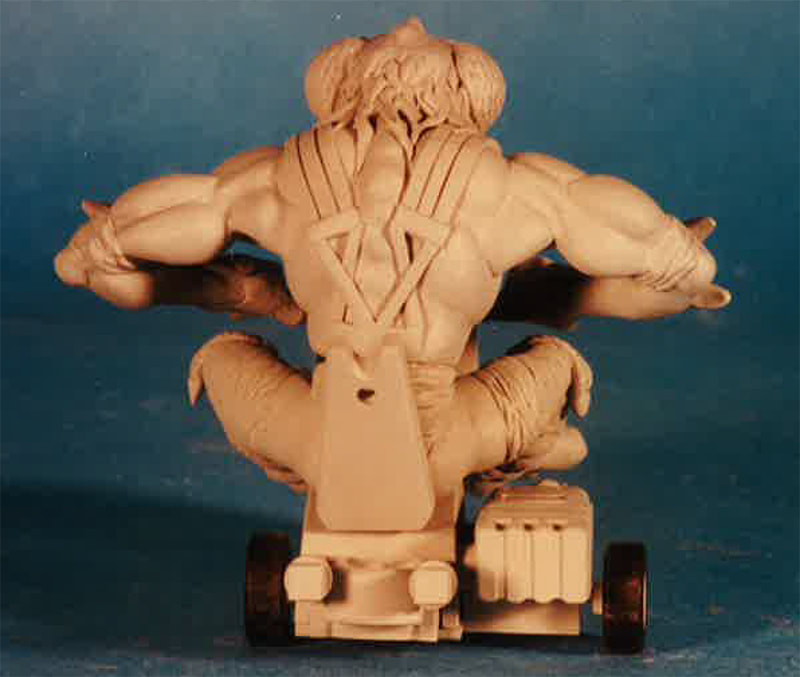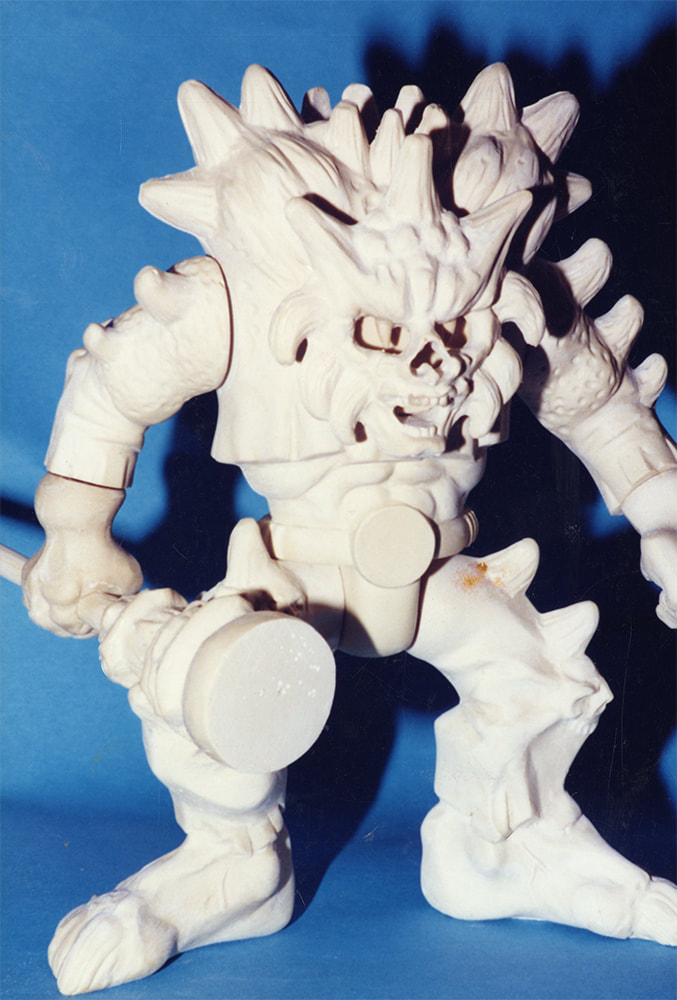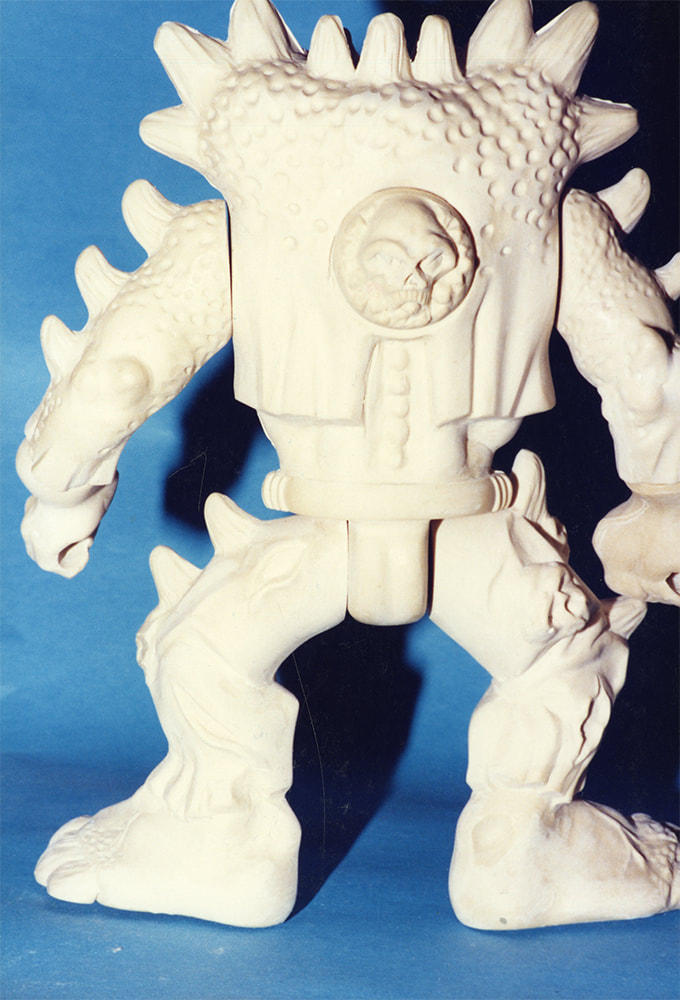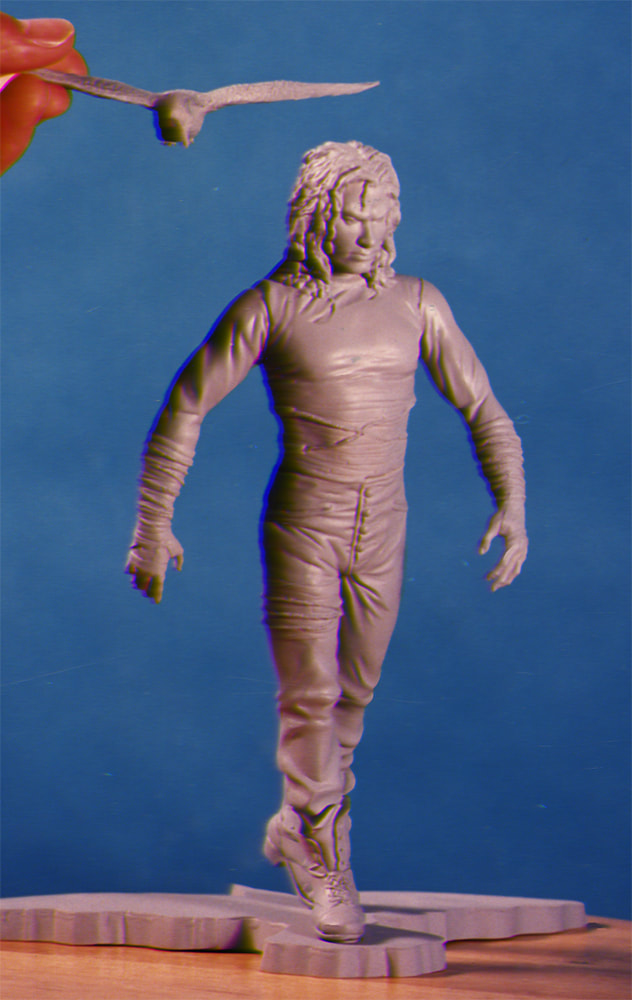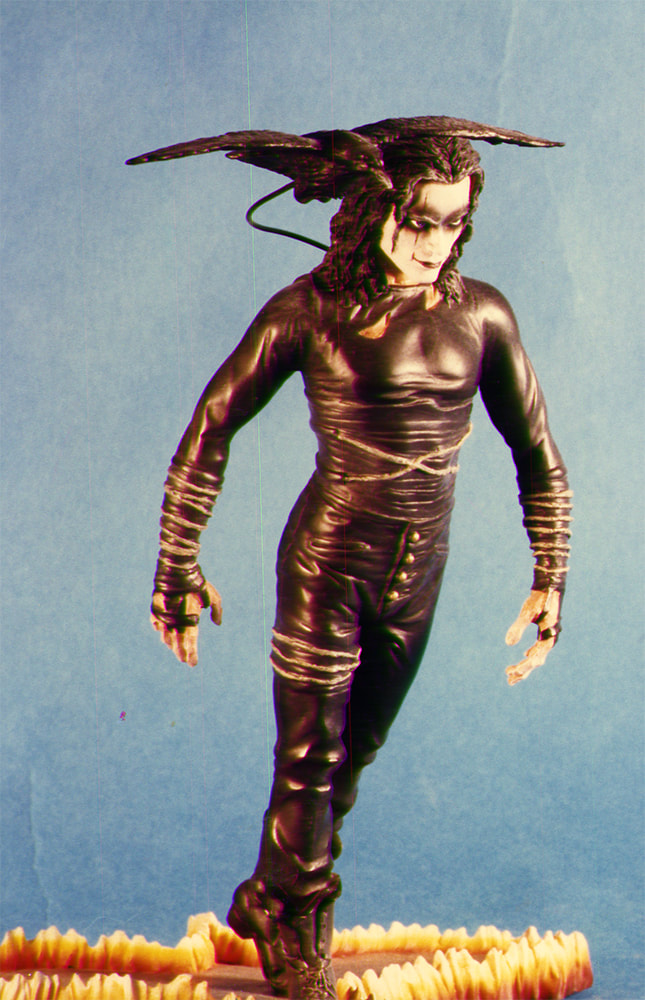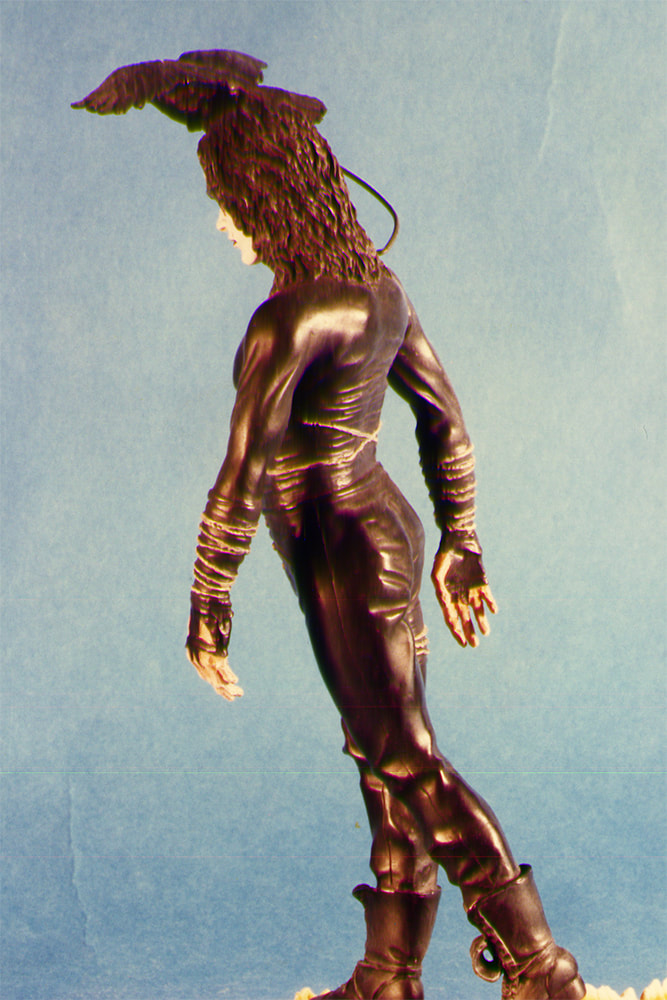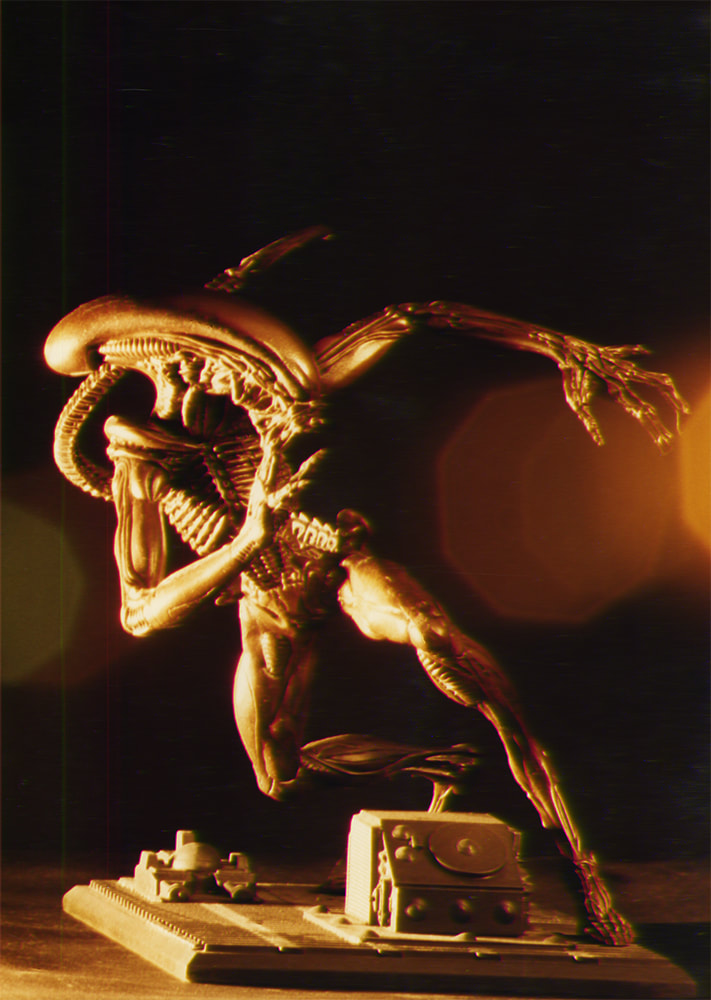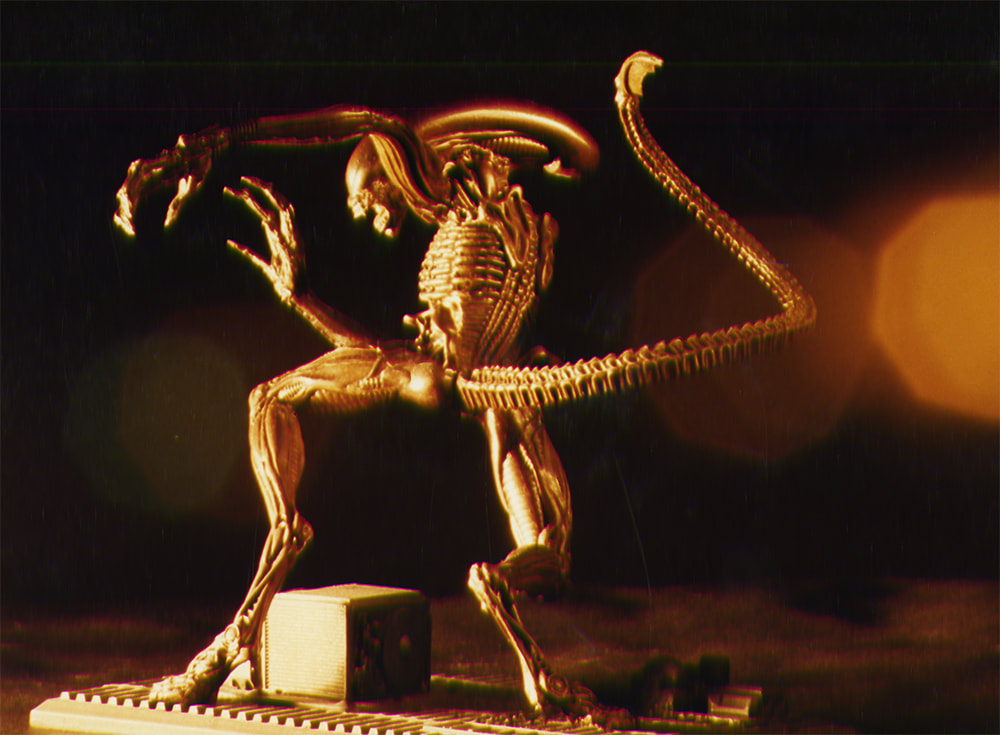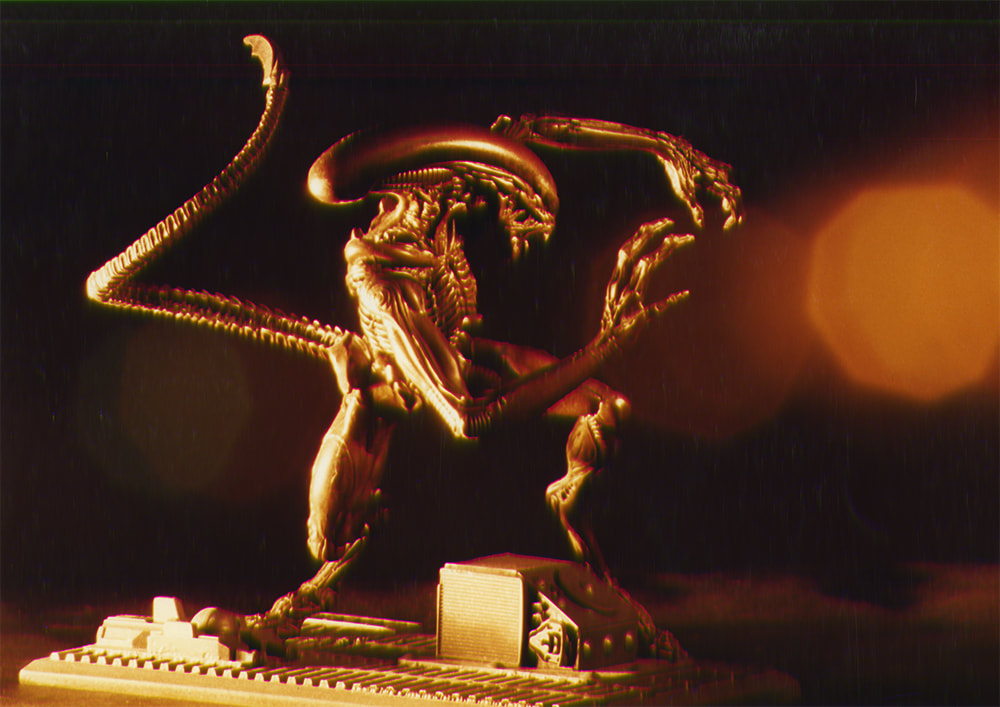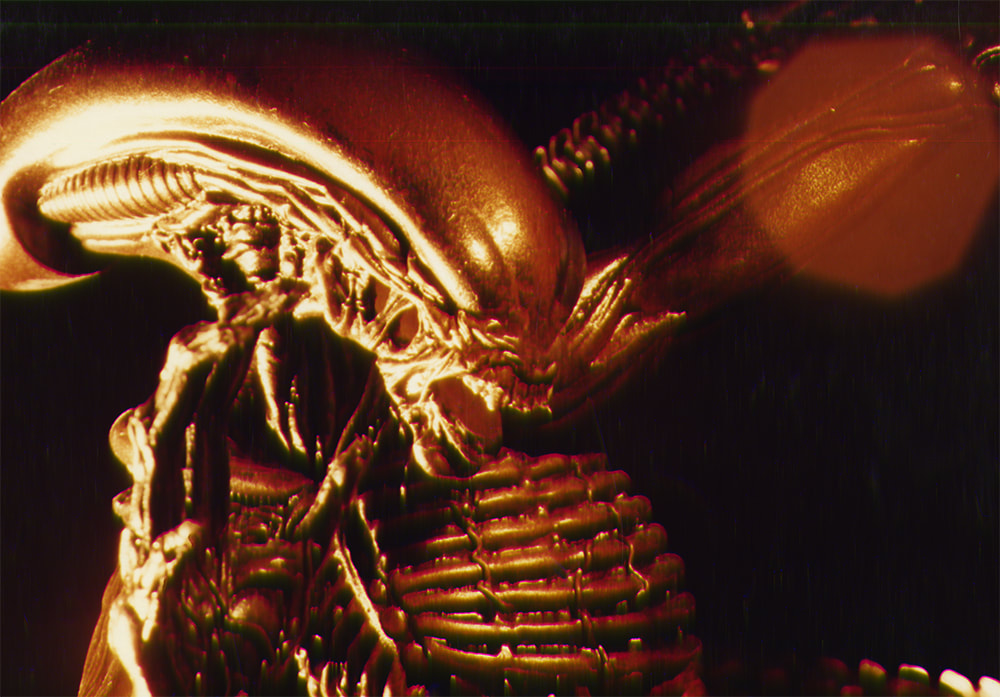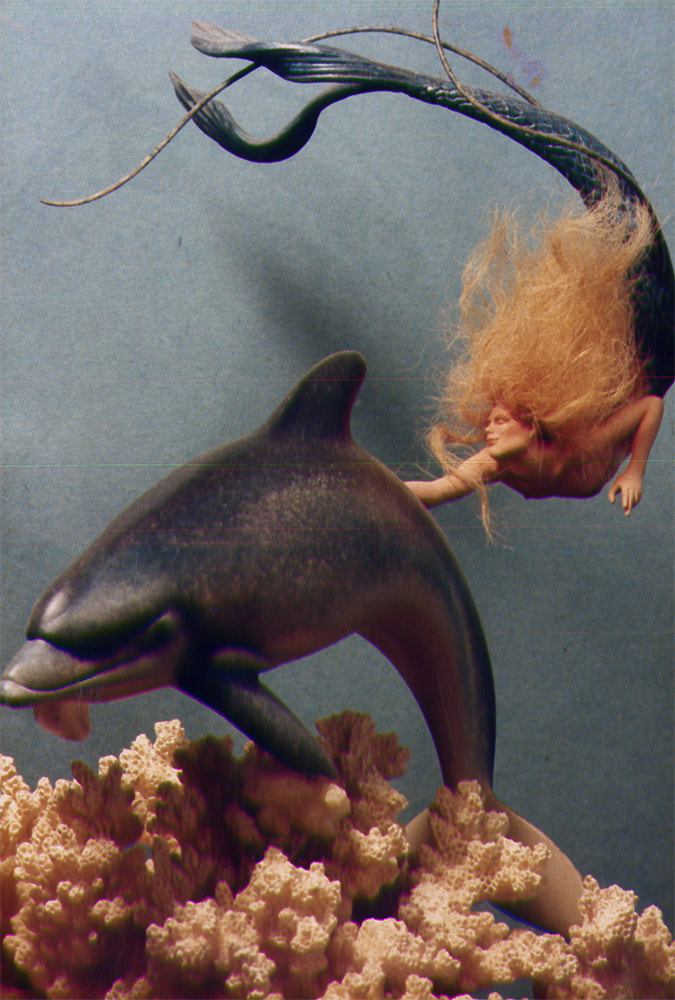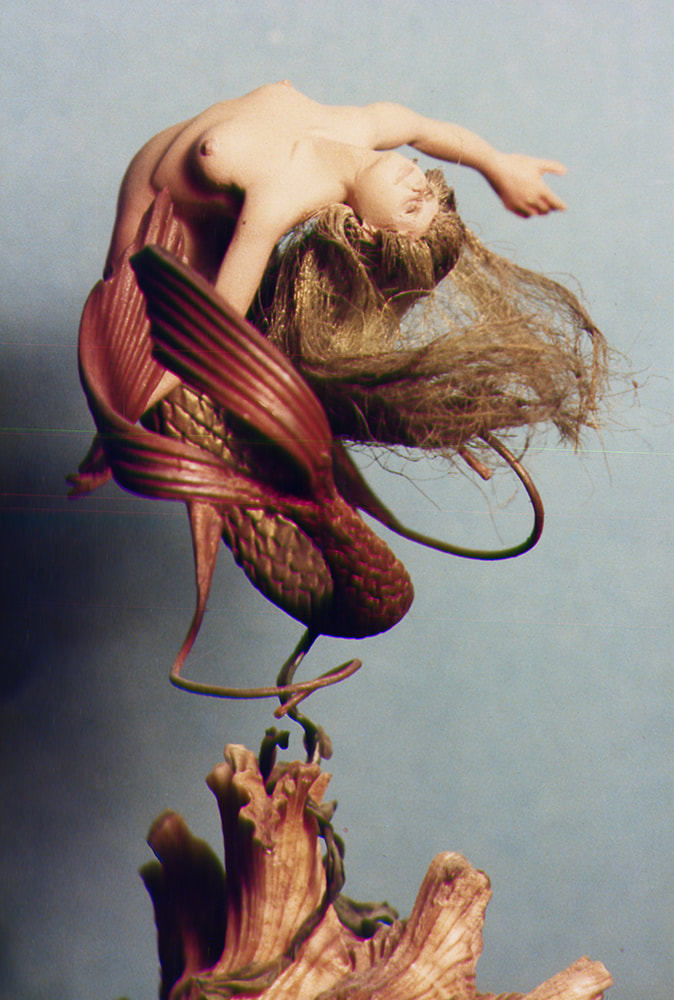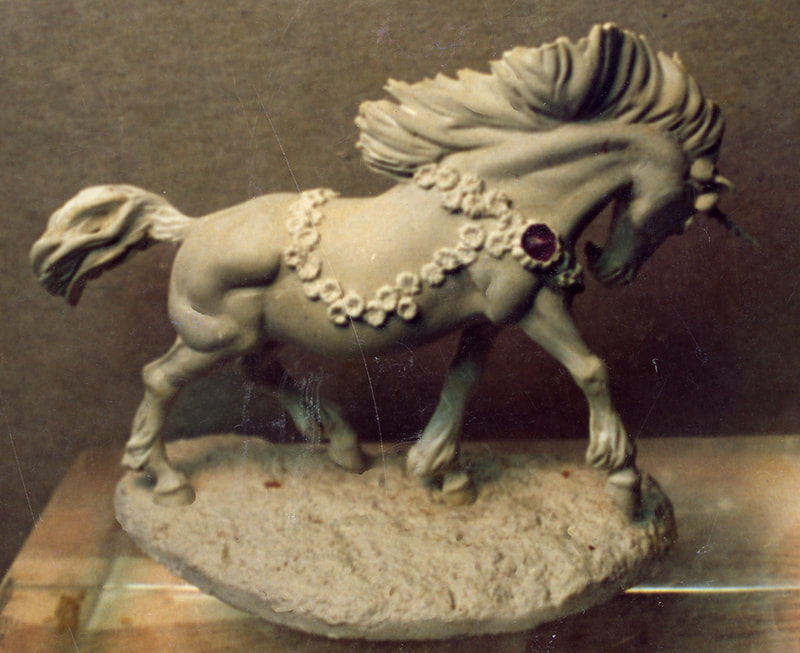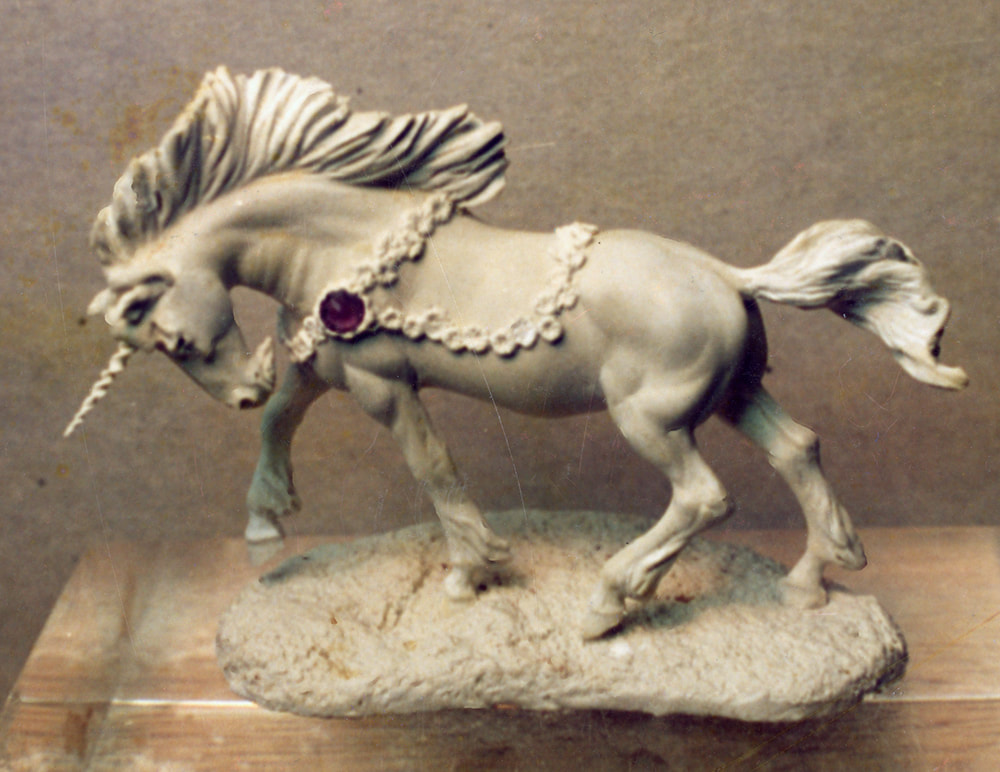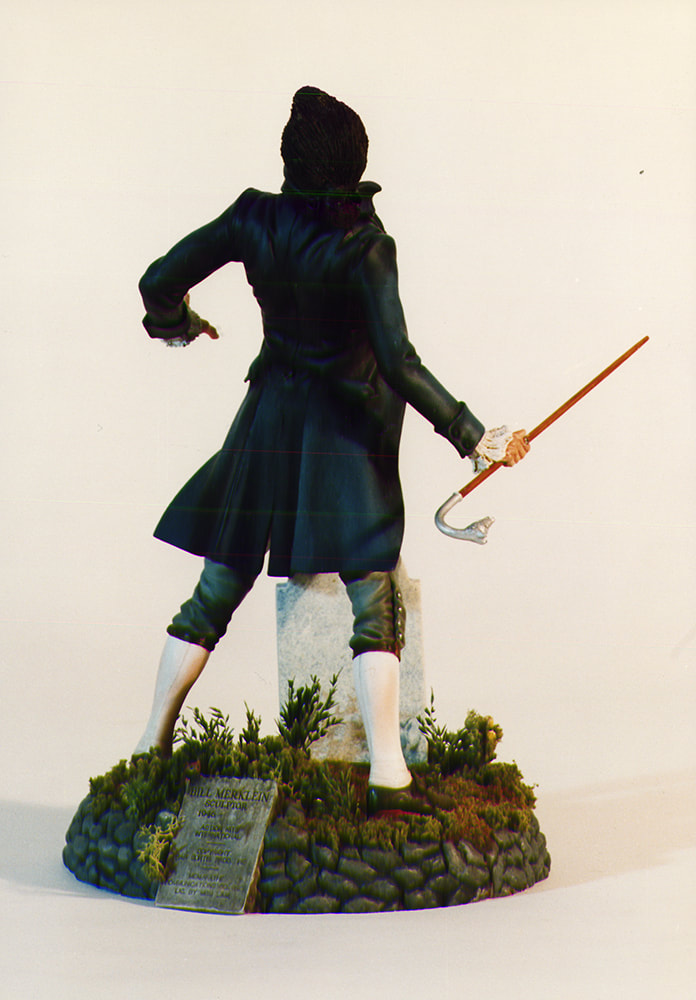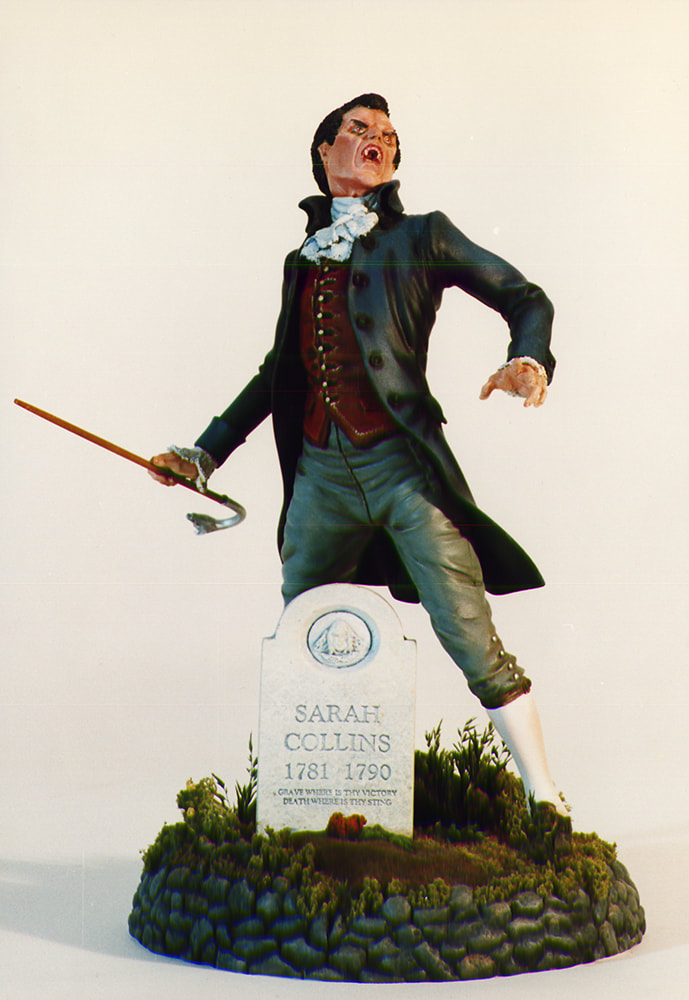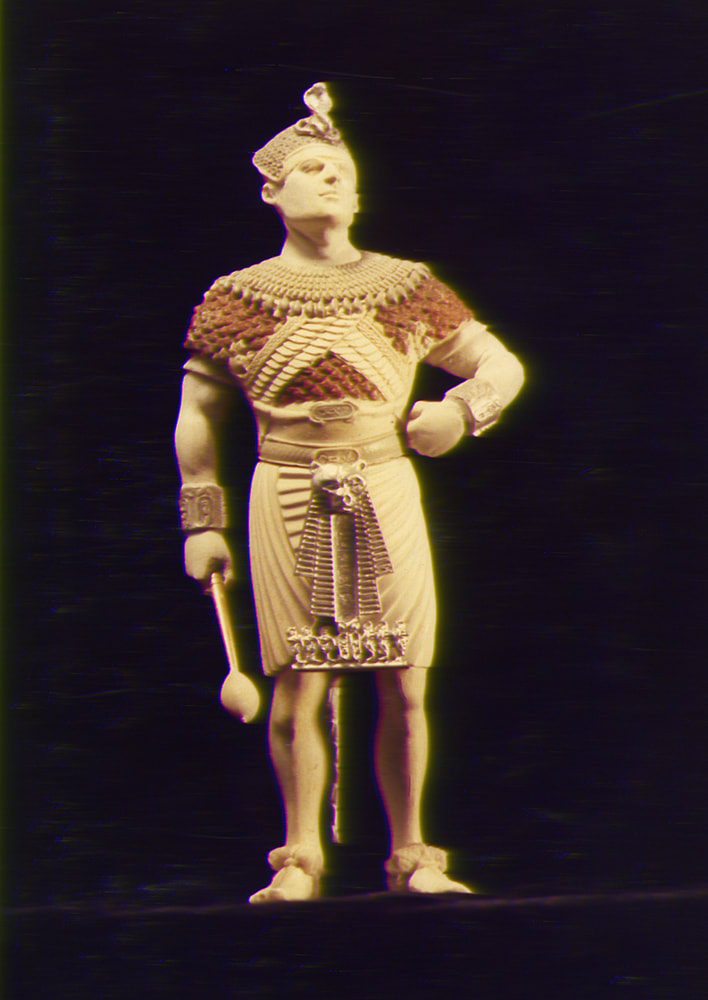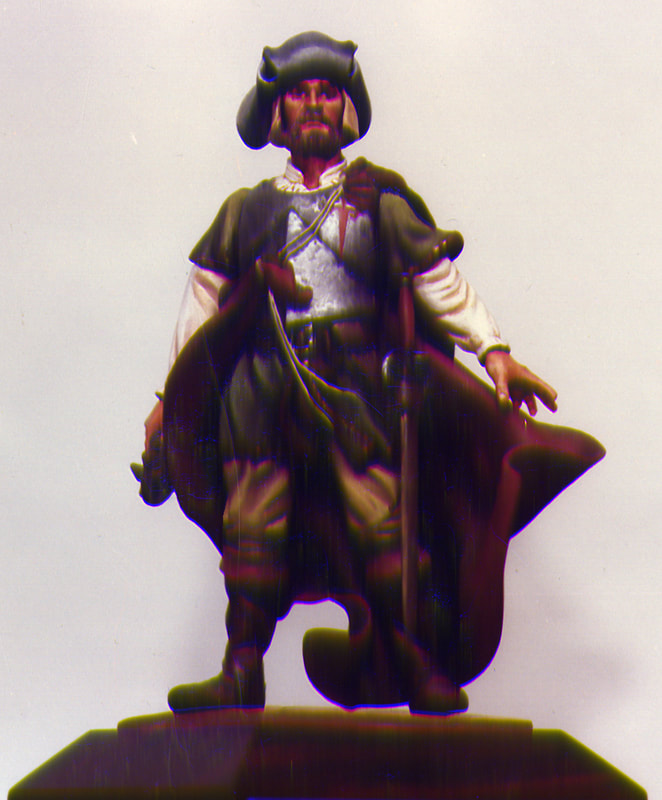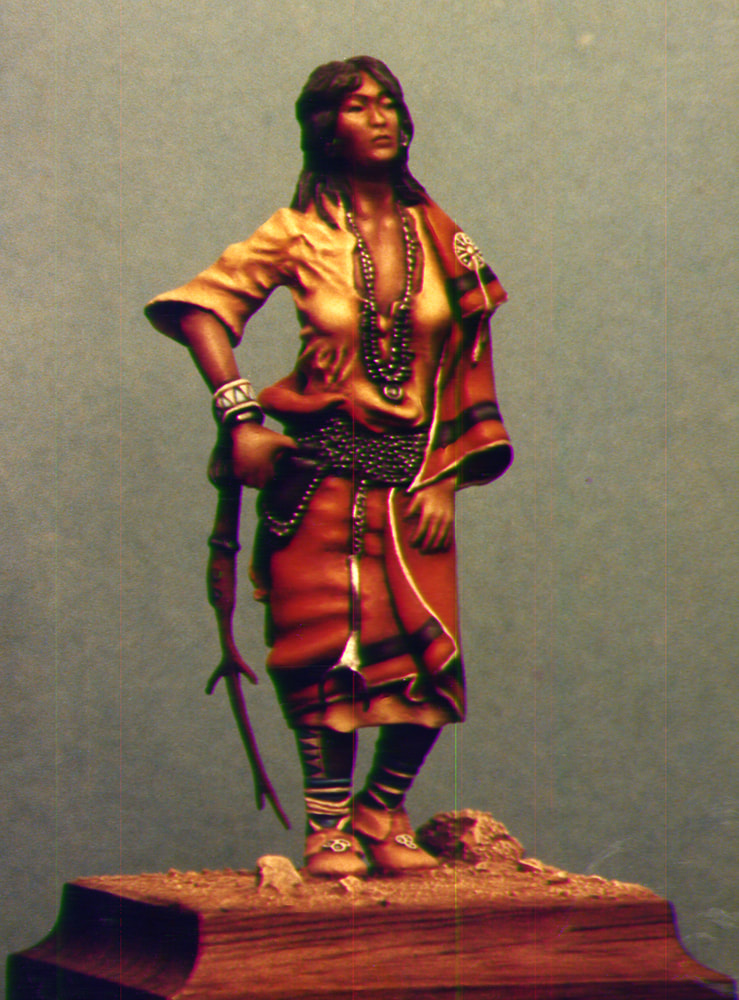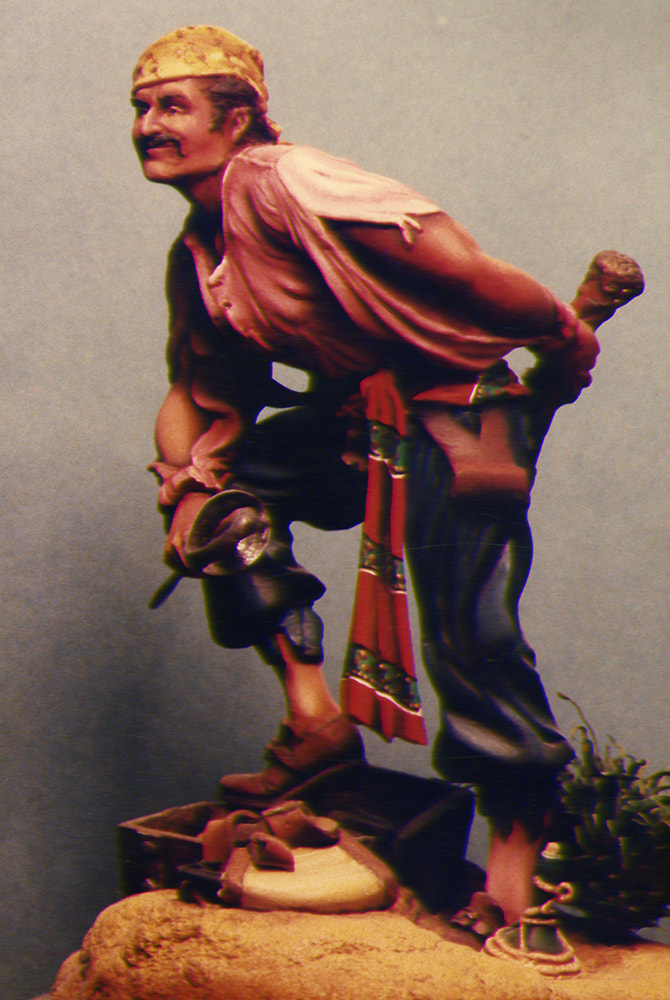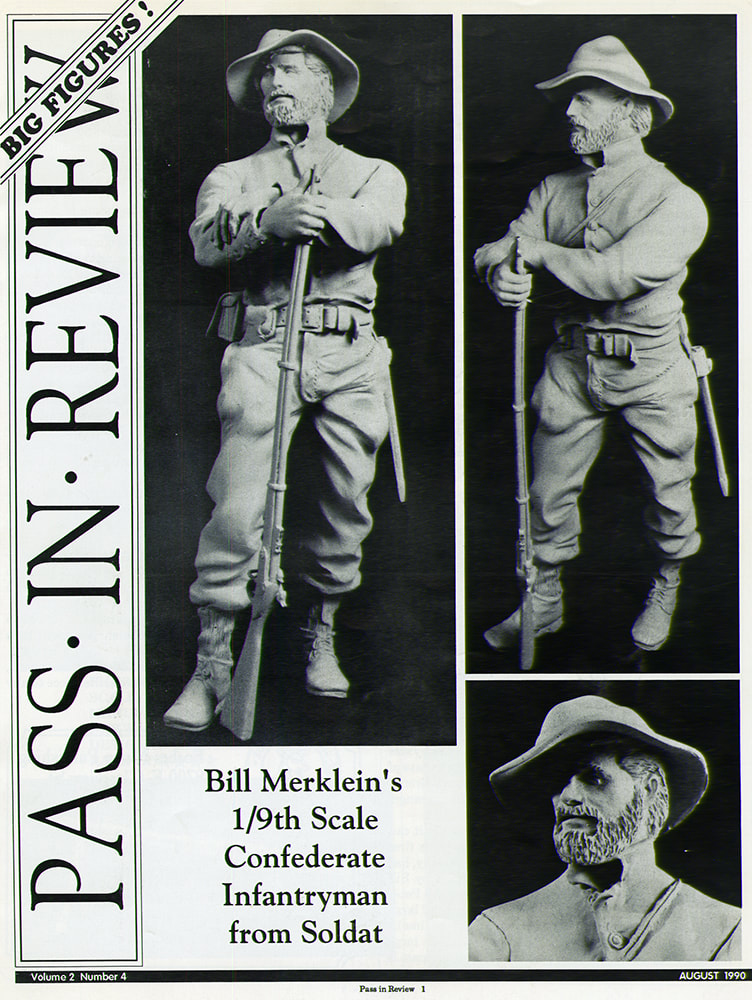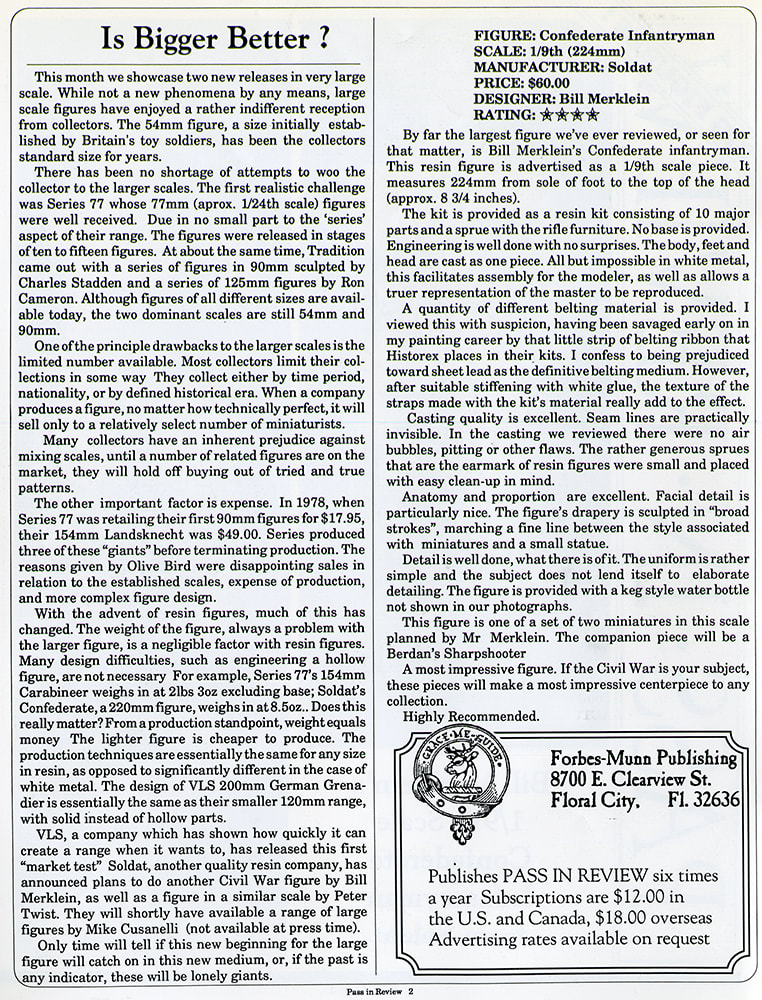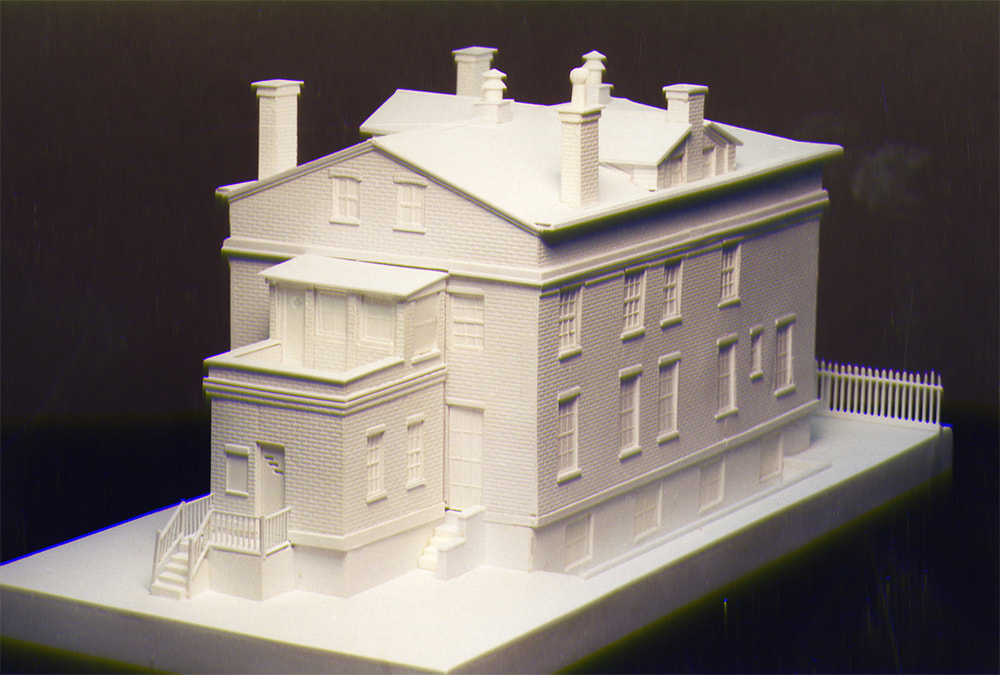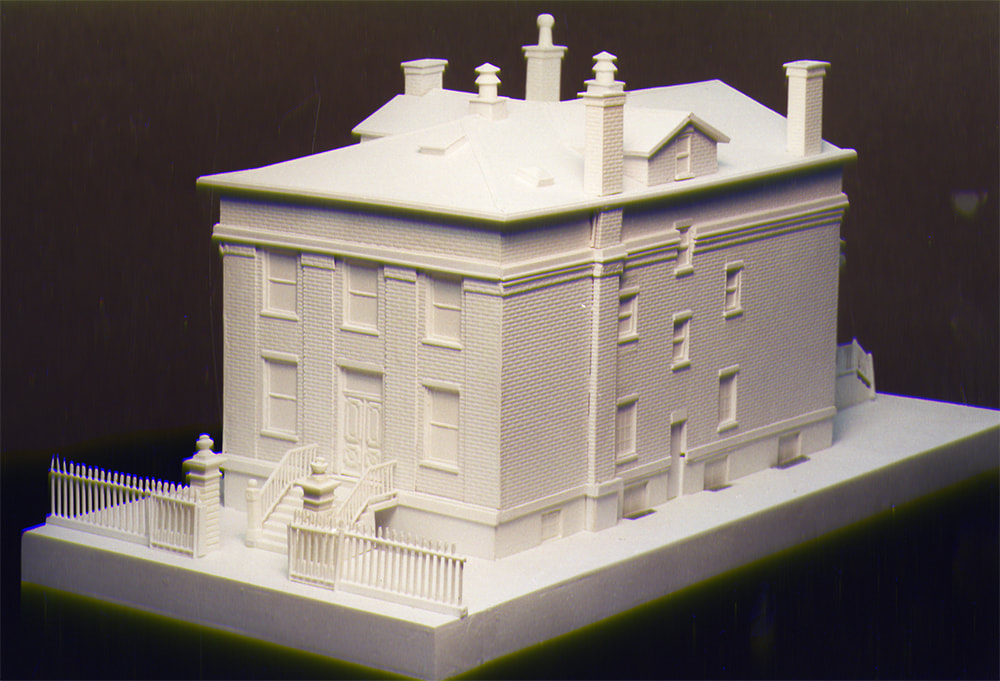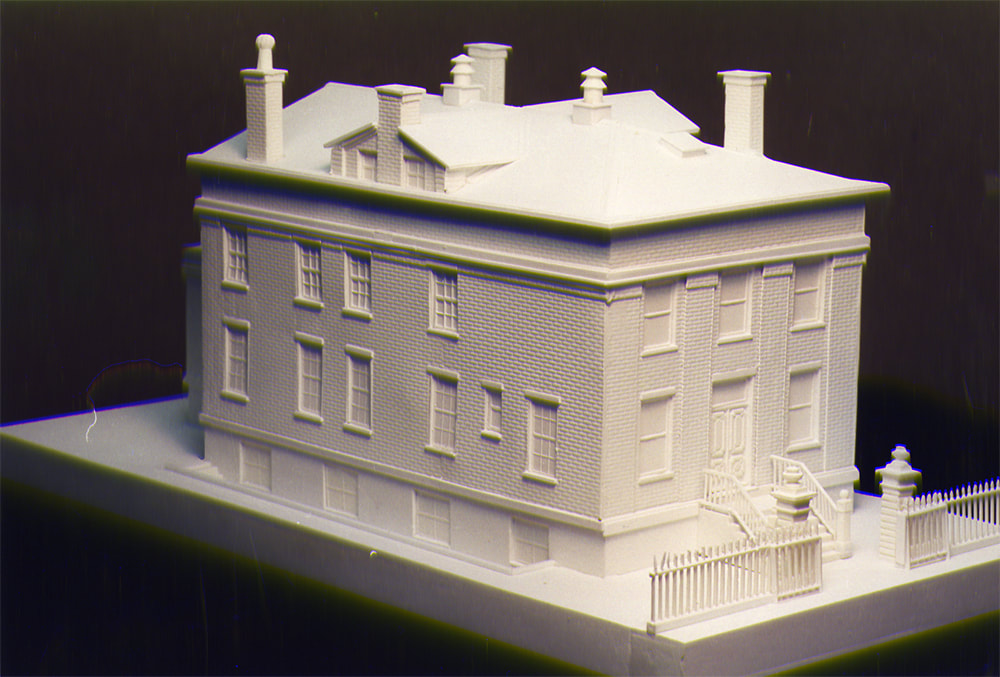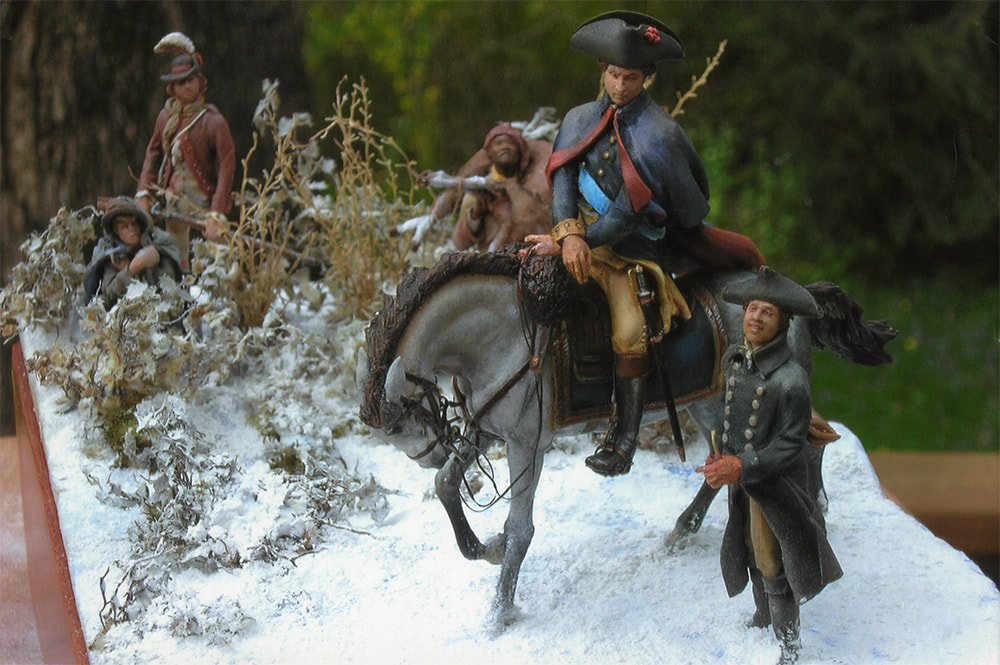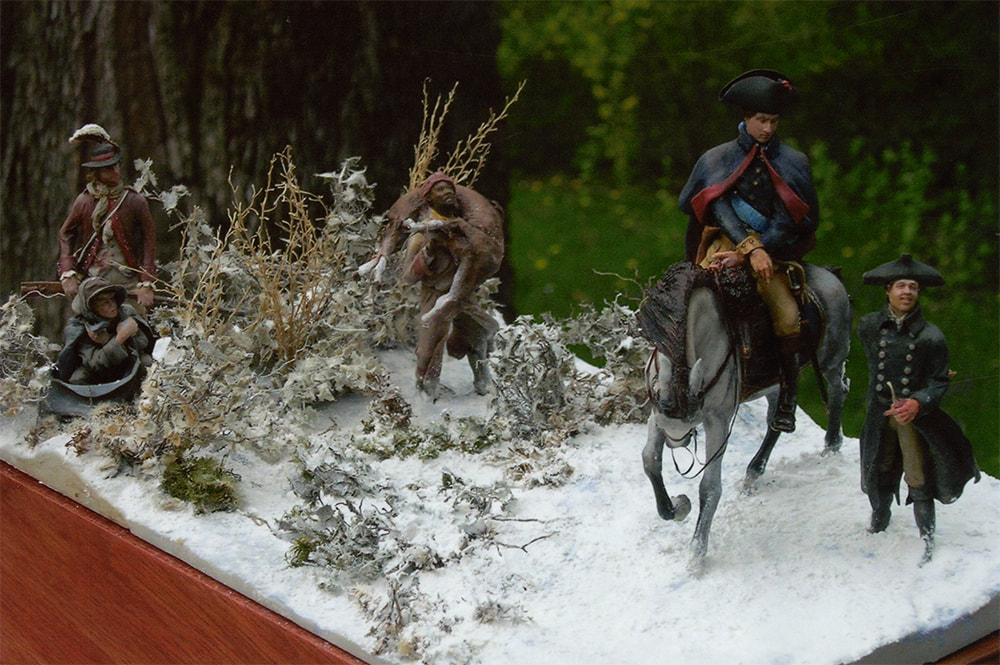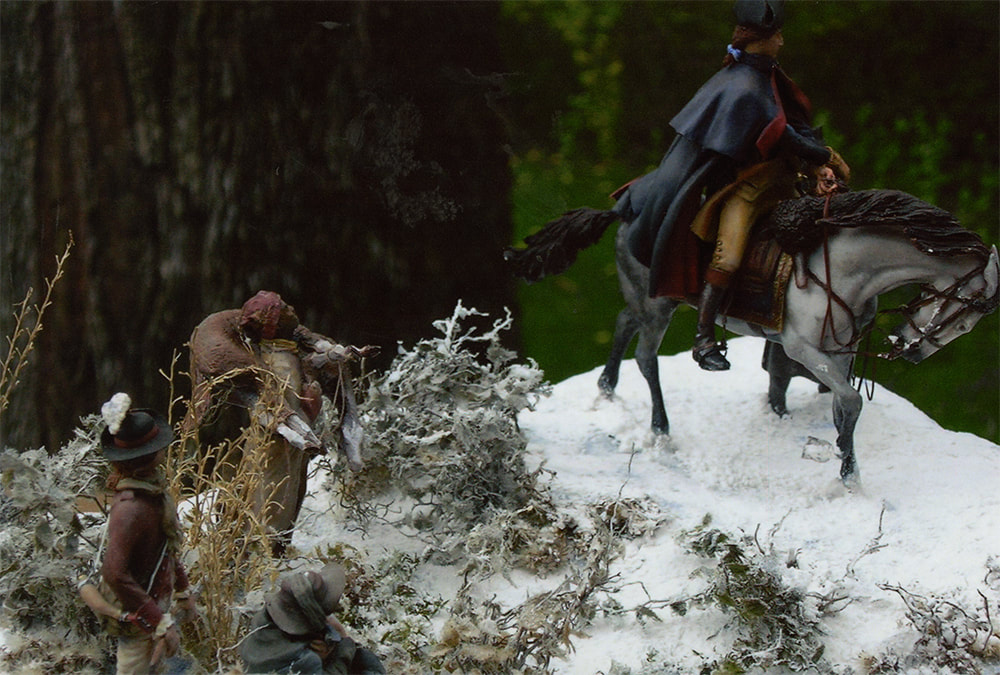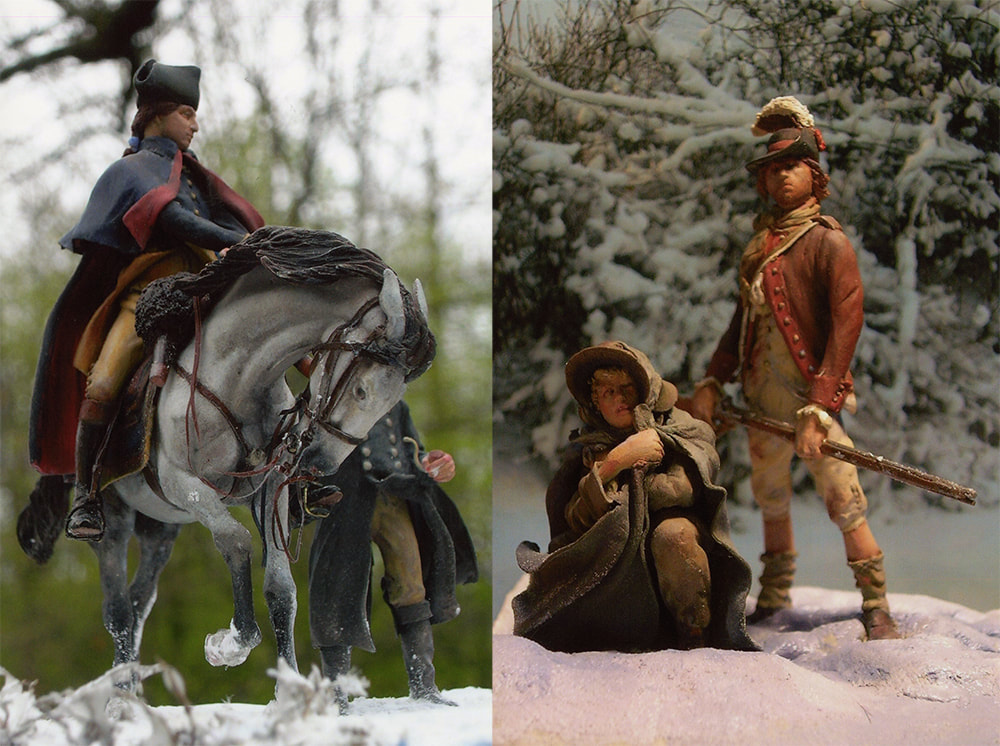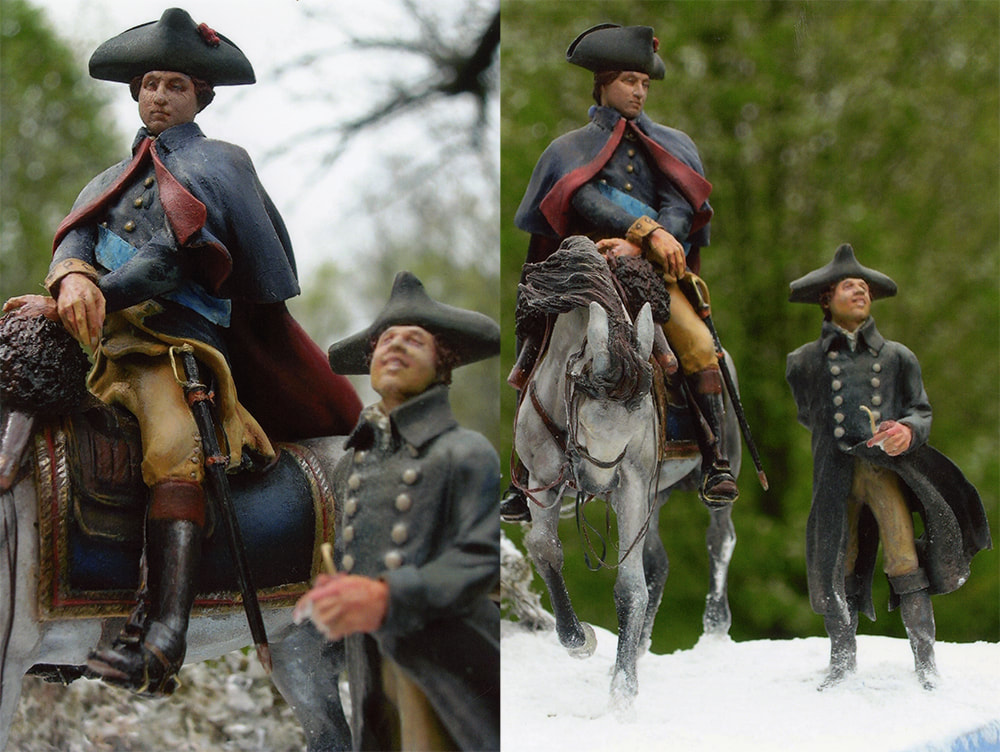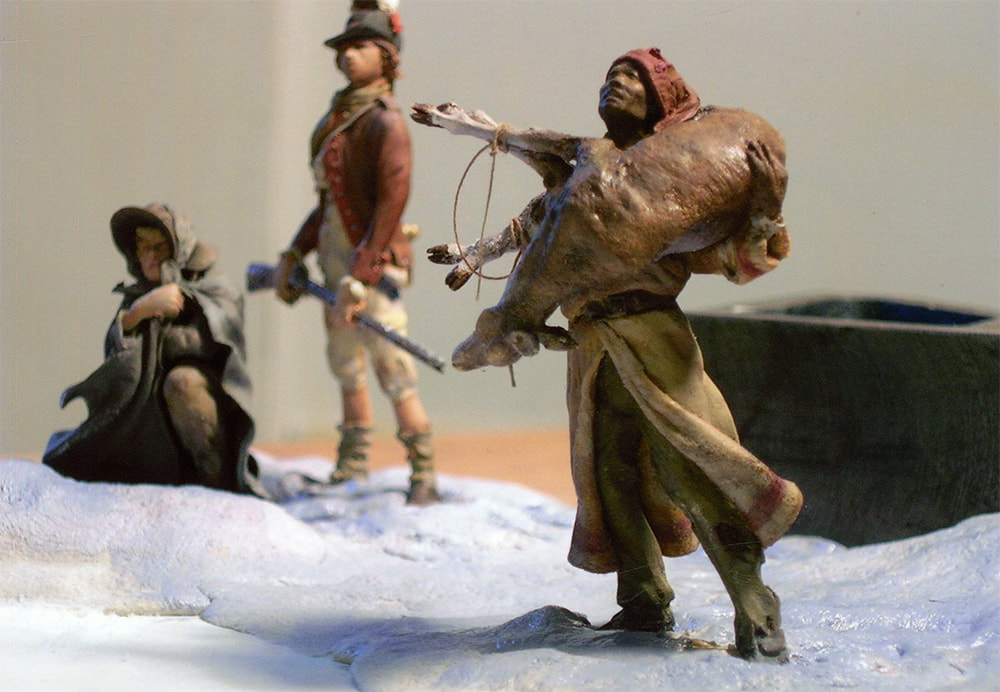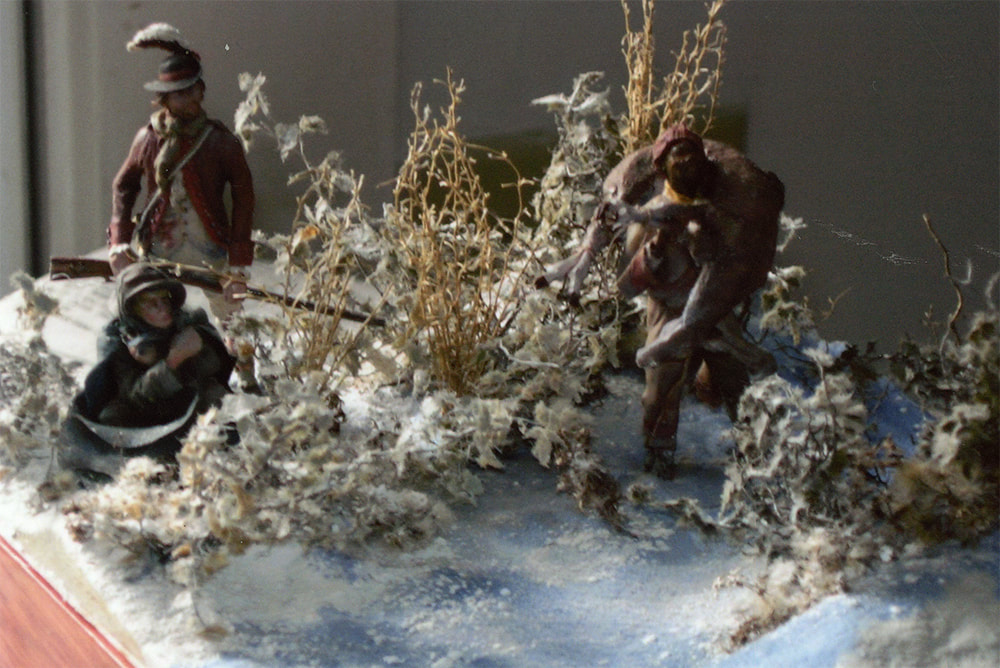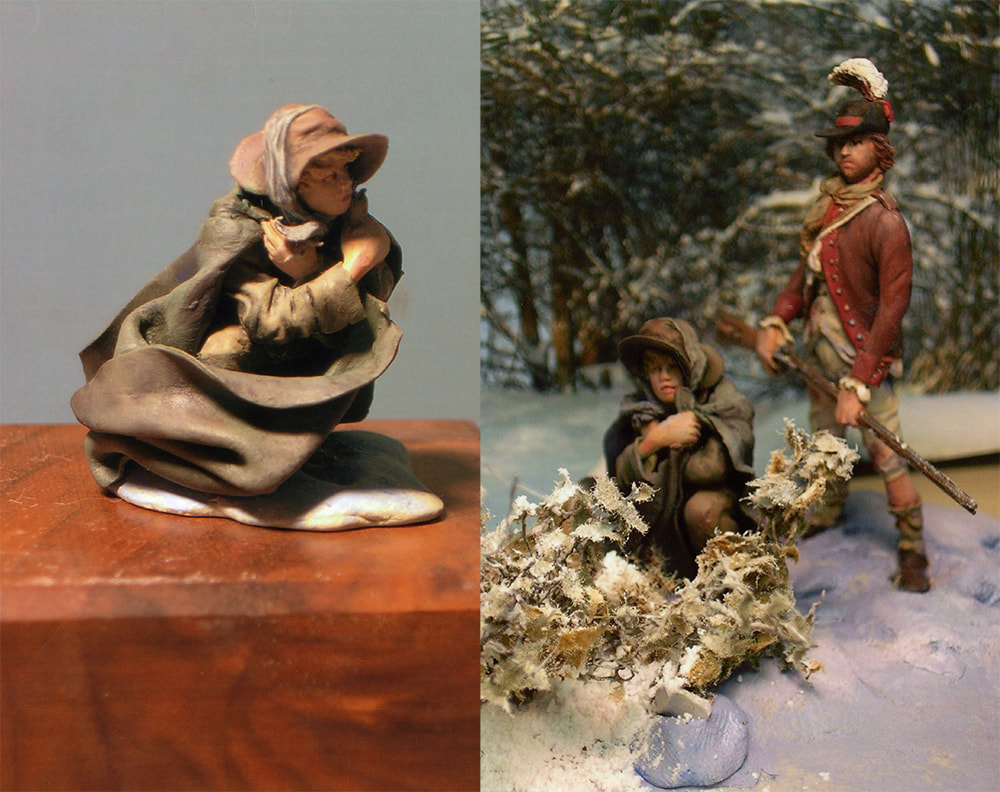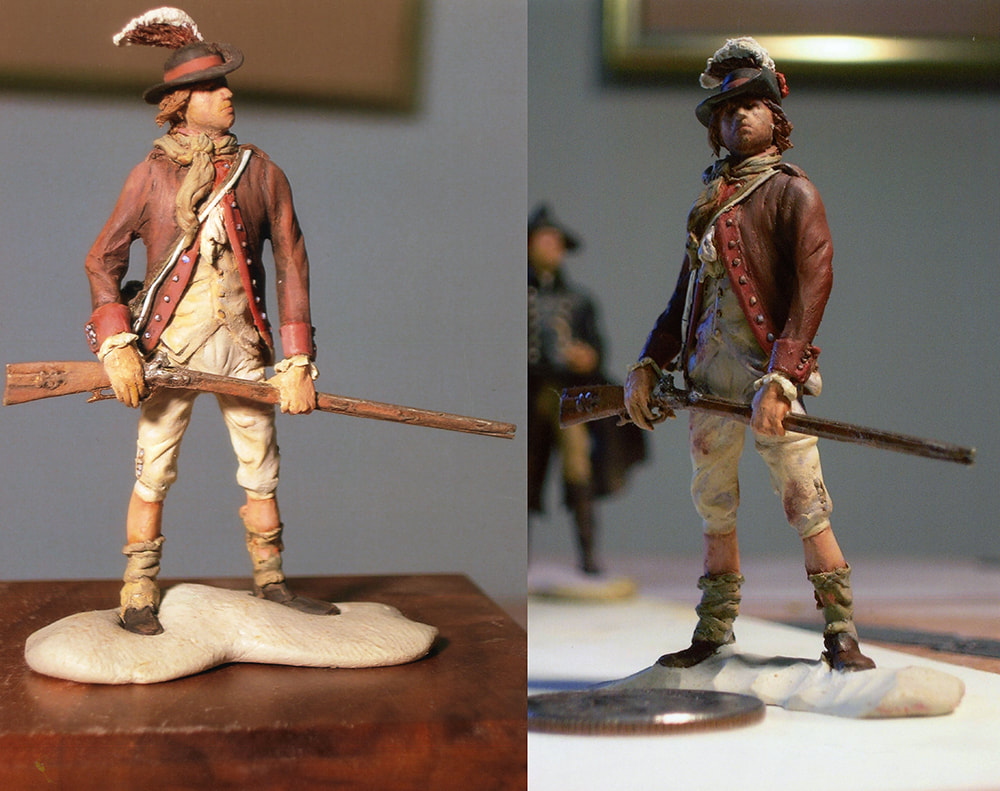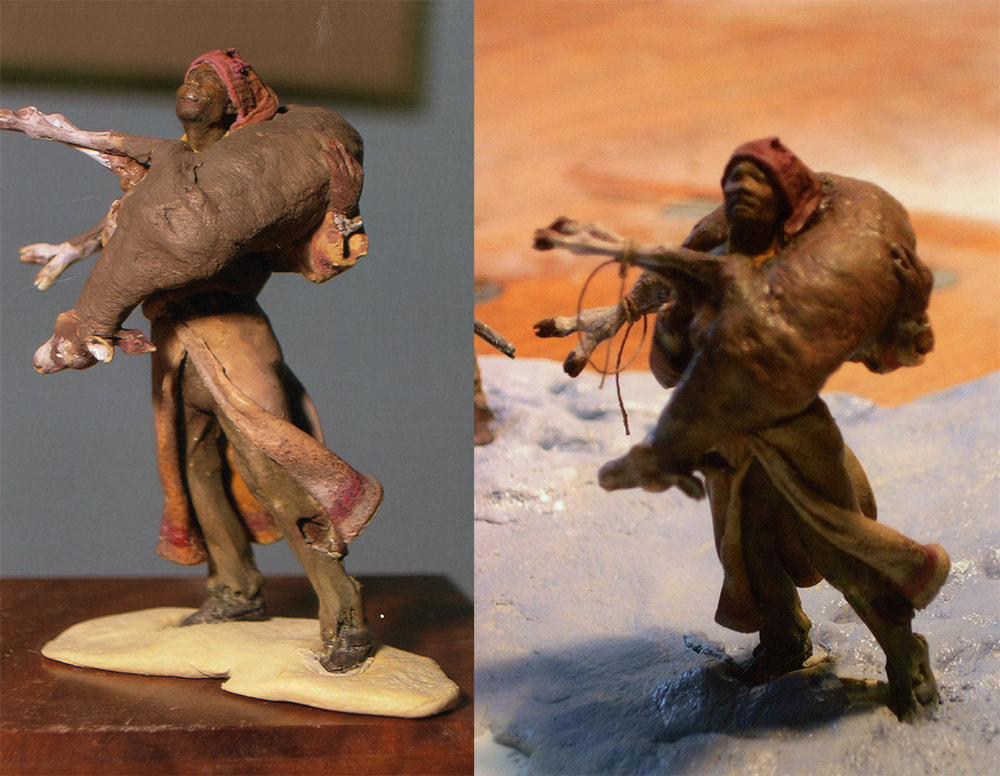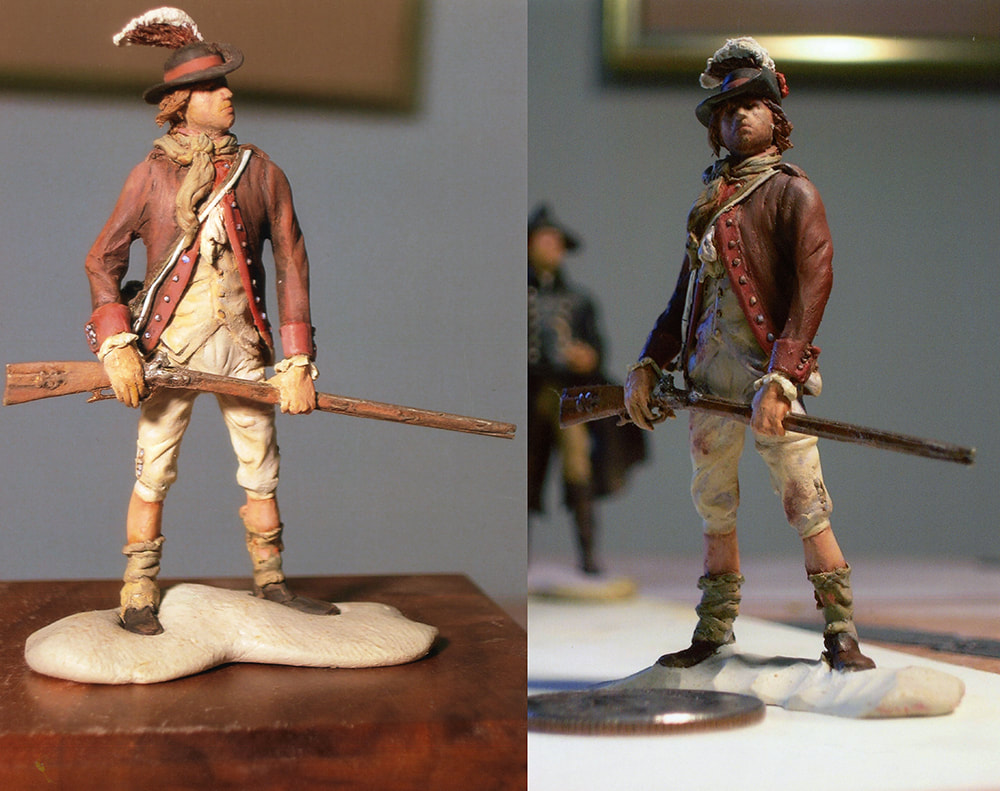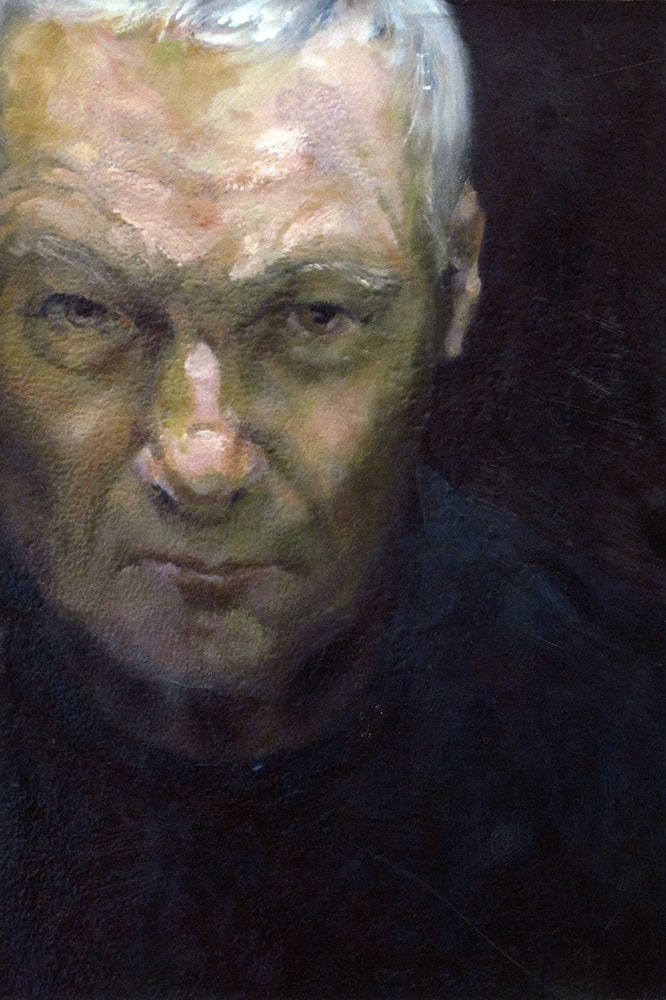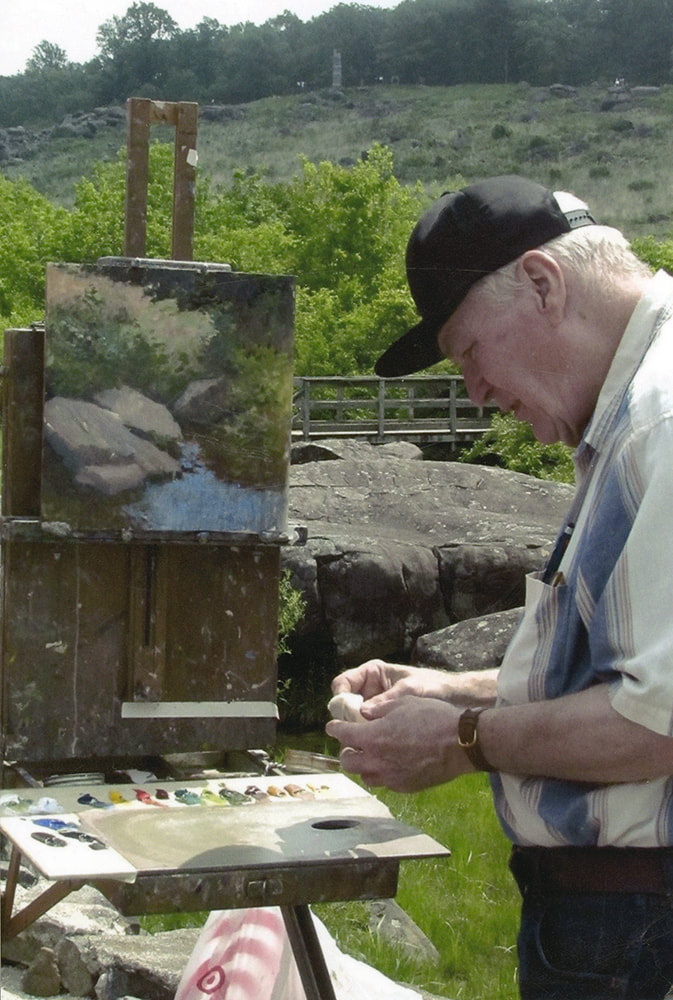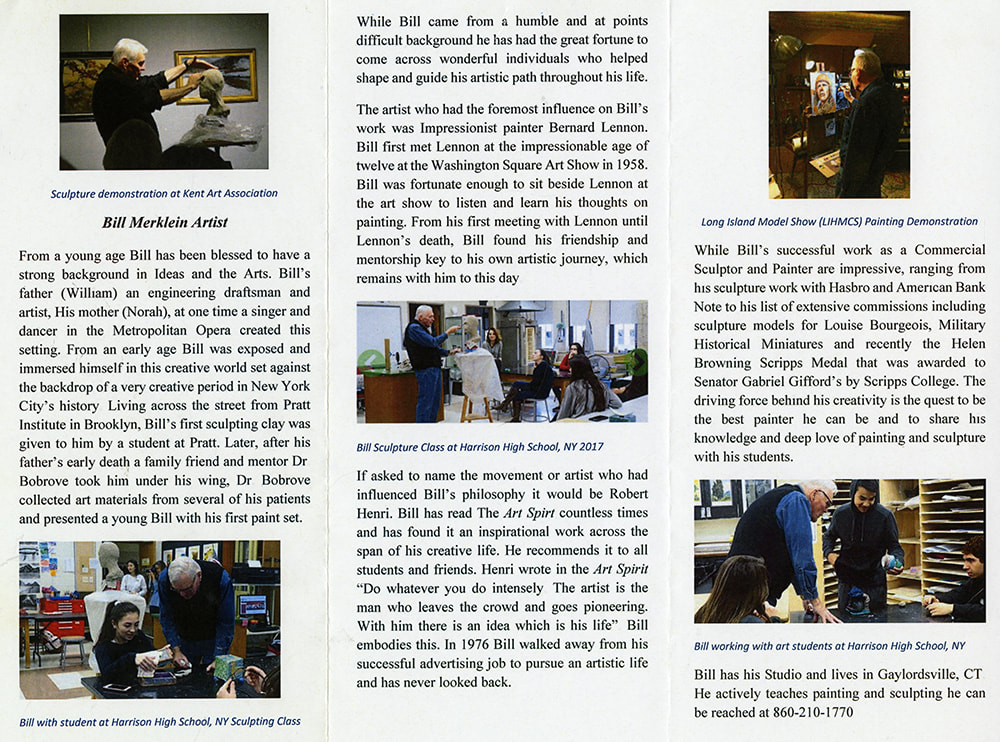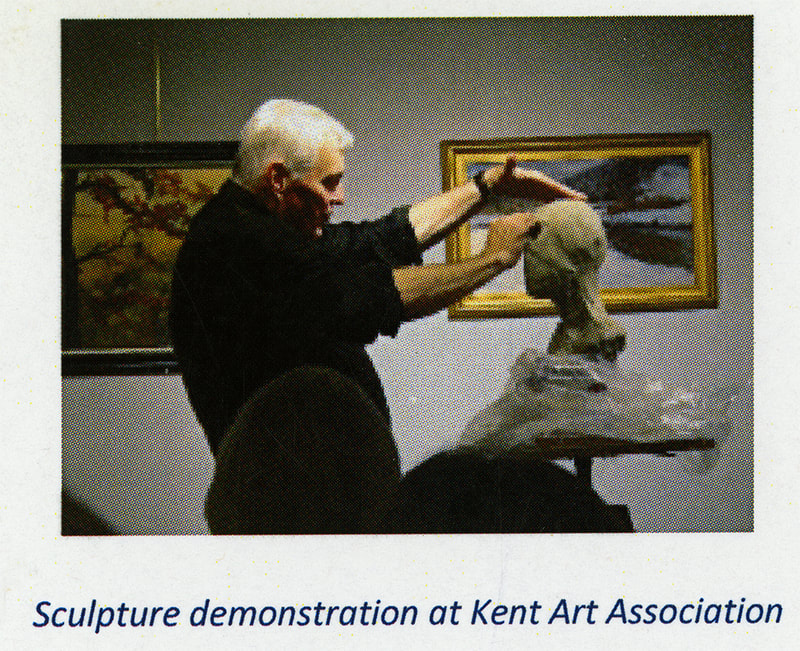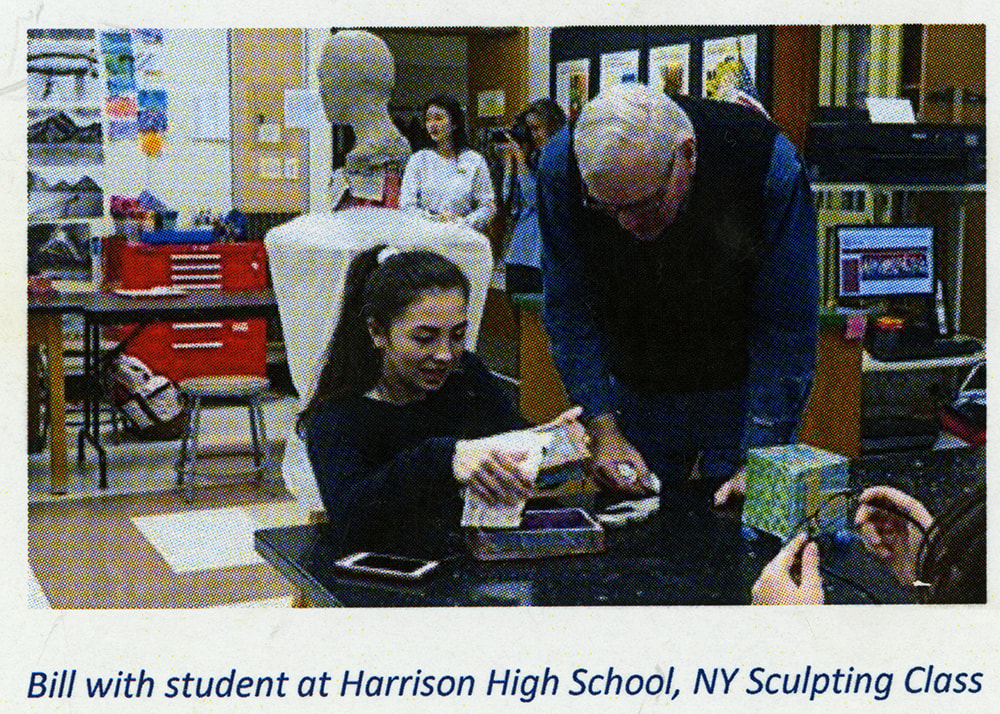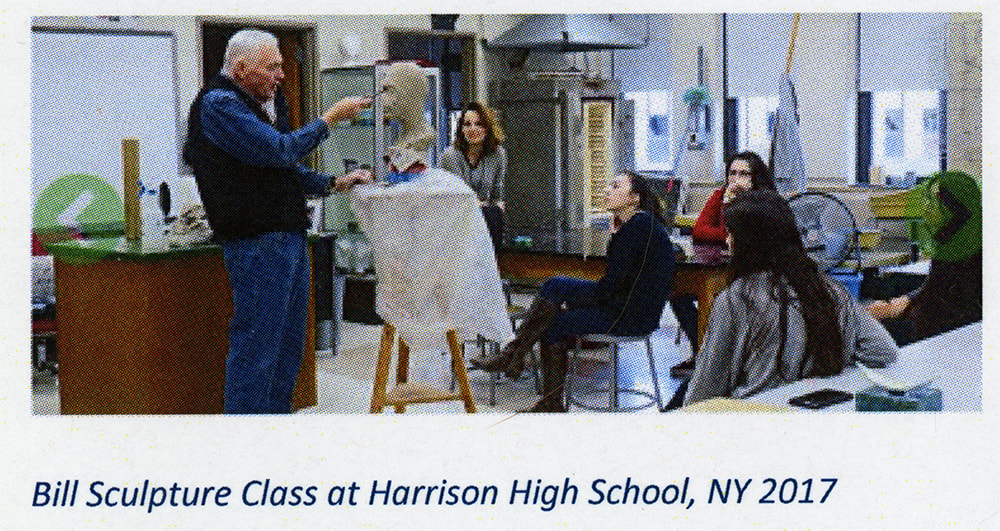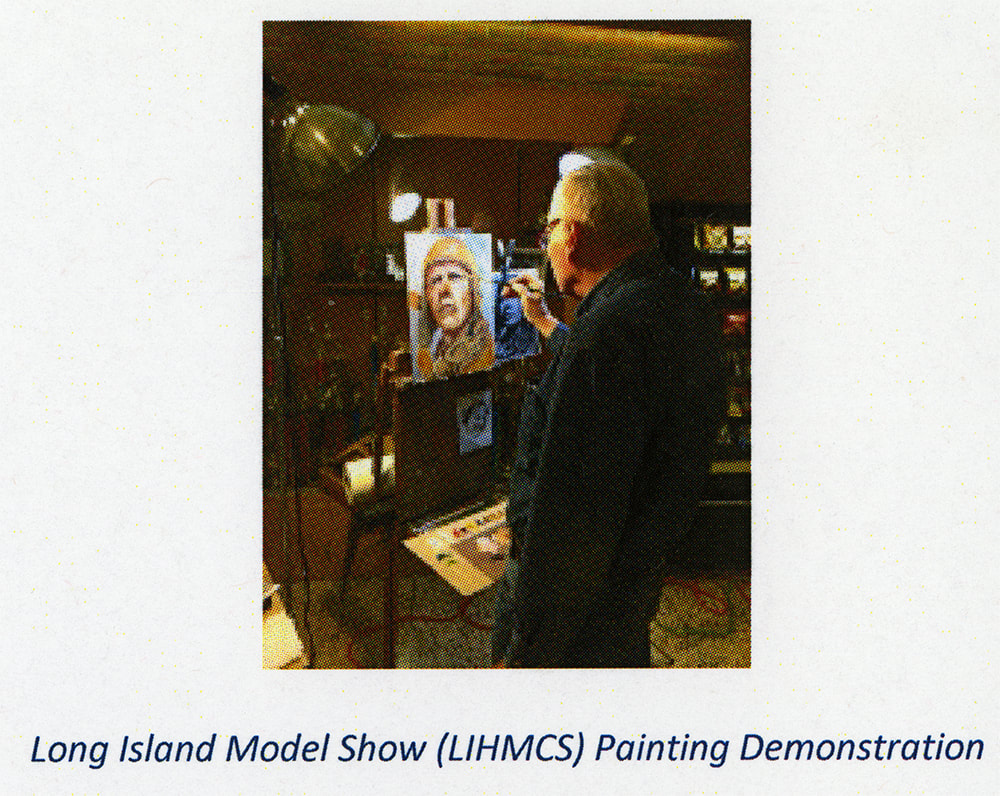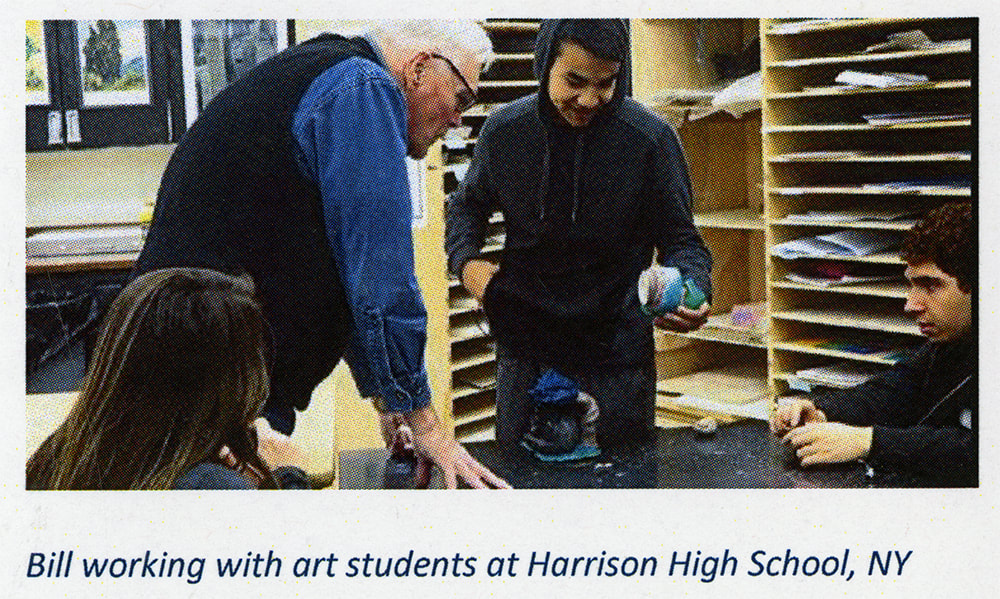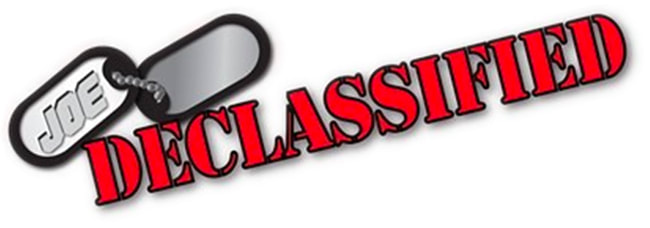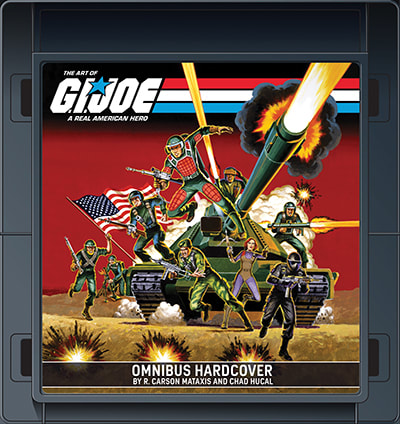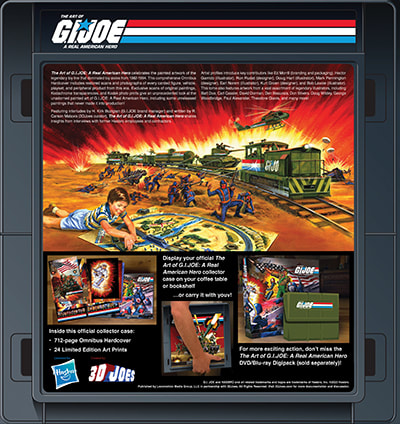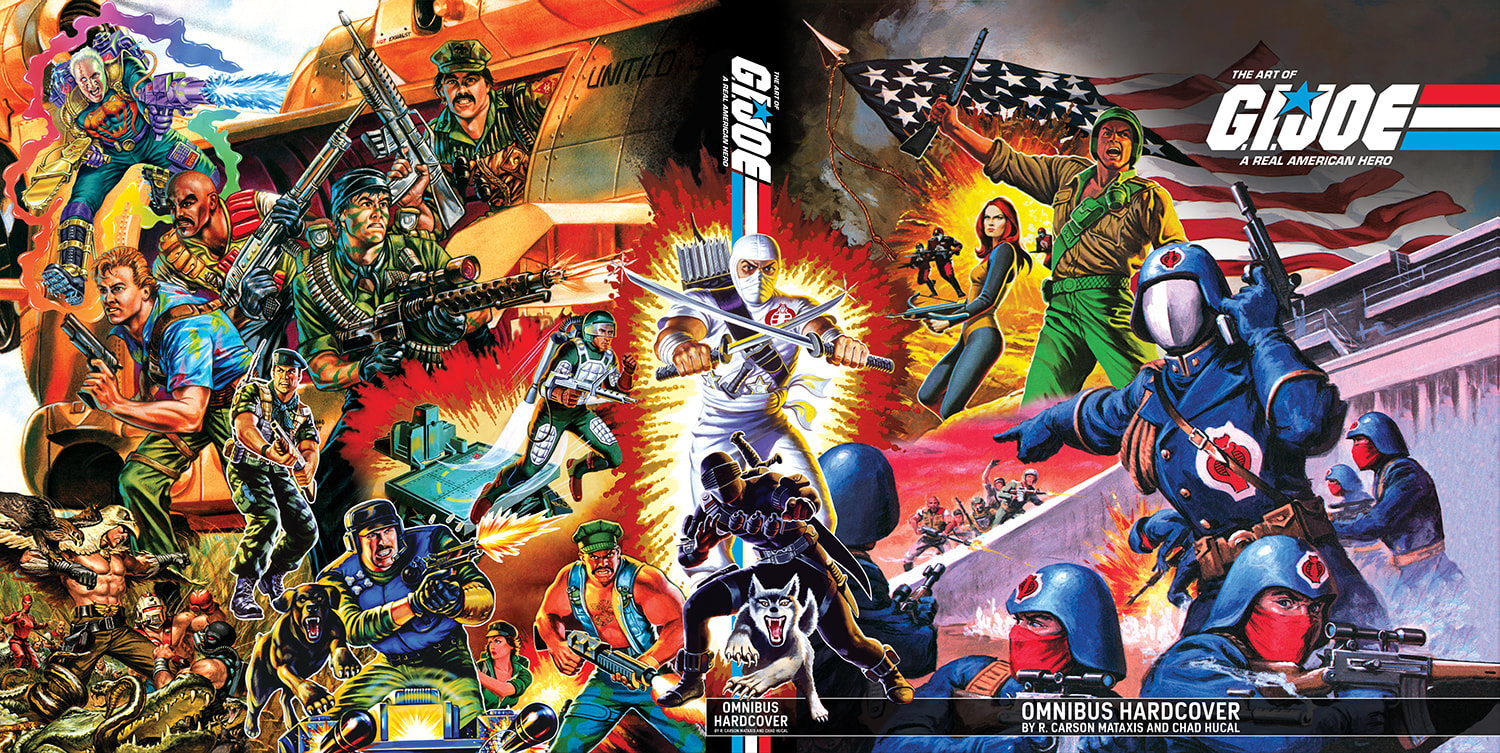Creator Profile: Bill Merklein
Bill Merklein was perhaps the most prolific figure sculptor behind the G.I. Joe: A Real American Hero brand. He worked for Hasbro as a freelance sculptor from 1983 to 1989 and during that time he sculpted over 70 G.I.Joe figures. Mr. Merklein's career went beyond the G.I. Joe brand. He also sculpted toys and statues for Air Raiders, Alien 3, COPS, Dungeons & Dragons, Mighty Max, Star Wars, The Crow, Visionaries, X-Men and more. Bill's passions go beyond toys, he is a prolific painter and military miniature sculptor. Read on to learn more about this incredibly productive artist!
But first, some thanks.
This Creator Profile was created by Carson Mataxis and Chris Murray. We would like to thank Bill Merklein and Gary "Goggles" Head (AKA Gyre-Viper) for their contributions. We would also like to thank Joe Declassified, Josh Carlson, Keri Wheeler, and Jared Bunnell for their 2010 interviews with Mr. Merklein. All 3D photos, traditional photos, scans, videos and audio files are used with permission and ©2012-2023 3DJoes. All Rights Reserved. No usage is permitted without written permission.
Discovering Sculpture
|
Bill Merklein aspired to be a professional fine art painter, yet he liked to create sculptures as a hobby and it was this hobby that led to a career. Bill started out building model airplanes and ships. He soon became interested in making miniature figures to accompany these models and would share his work in local historical miniature shows. It was at one of these miniature shows that Bill was discovered and offered his first professional sculpture commission from Gateway Hobbies. They hired him to make 1/35 scale figures that would accompany their Vietnam-era tanks. This experience led to more work in military miniatures and eventually into toys. Mr. Merklein was hired in 1982 by Bill Murray from Knickerbocker Toys, which was owned by Warner Bros. and they were starting production on a fantasy/sci-fi film called Krull. Bill Merklein was to sculpt the action figures and Ron Hinote, a fellow military miniature sculptor, was to sculpt the creatures. Besides the human characters from the movie, Bill also sculpted The Beast which was the principal villain of the film. Unfortunately, midway into production these toys were canceled by Warner Bros. when they lost faith that the movie was going to be a success. Not long afterwards, his first produced work, the Dungeons & Dragons character Dragonne, was released.
|
The Hasbro Enlistment
|
"In 1983 Hasbro... sold about 37% of its own stock to Warner Communications in exchange for cash and Warner's struggling Knickerbocker Toy Company subsidiary, which made Raggedy Ann and Raggedy Andy dolls." -Encyclopedia.com
Because of this acquisition, Hasbro came into possession of Bill's work on Krull. Roger Avery was an Art Director working on G.I. Joe when he first discovered this work. He thought Bill would be a good fit for working on G.I. Joe and reached out to set a meeting. During this meeting Bill committed to sculpt G.I. Joe figures and Roger Avery handed off the necessary input drawings that Bill would reference when sculpting, and the physical armature upon which Bill would sculpt (commonly referred to at Hasbro as a buck). Hasbro sculpted G.I. Joe figures at twice the size of the final product. Hasbro used this 2:1 ratio from 1982-1994 to allow the sculptor to create a higher level of detail than could be attained when working at a 1:1 ratio. These "2up" sculpts were then pantographed down to the appropriate size when cutting the molds. Seen here is a copy of a "2up" buck like those used in the creation of G.I. Joe: A Real American Hero action figures. Sculptors would apply the sculpting media of their choice to this armature to bring a new figure to life, all while ensuring the newly sculpted figure would have the same dimensions and articulation as the rest of the toy line. The first figure that Bill sculpted on the G.I. Joe brand was Recondo. Hasbro typically sculpted the accessories in-house, but Bill was often commissioned to sculpt helmets, backpacks, and the occasional animal companion like Mutt's K-9 Junkyard, Hydro-Viper's manta ray and Croc Master's crocodile. |
|
Guidelines for Sculpting G.I.Joe
Hasbro worked with several freelance sculptors. To keep things consistent and to speed up the onboarding process, Hasbro created the G.I.Joe Figure Sculpting Information guide in 1983. Bill was hired by Roger Avery in 1983 and sent this guide. Click the images below to view them full screen.
In addition to the physical armature upon which to sculpt (AKA the buck) and the "G.I.Joe Figure Sculpting Information" guide shown above, each assignment kickoff packet would include presentation art, figure sculpture sheets (also known as control art), and a figure reference system (also known as a color chart). Samples of these are shown below. Roll over the images for more information, or click them to view full screen.
Sculpting G.I.Joe
Bill's favorite material for sculpting G.I.Joes is Epoxybond Plumber Seal Putty, which comes in blue and orange tubes. Since we could not go back in time and film Bill sculpting G.I.Joes, we decided to film him creating an all new G.I.Joe, Retelo! Over the course of 14 days, Carson filmed the entire sculpting process, from bare buck to final figure. We will be crafting a documentary dubbed Operation: Recall, which details the process of creating a G.I.Joe from concept sketches to completed figure. Stay tuned to 3DJoes for more details! Below you will see several process photos from our time with Bill. Be sure to roll over the images for more information, or click them to view full screen.
Credit Where Credit is Due
One of our goals on 3DJoes is to create an exhaustive credits list for those that created these timeless toys. The trick is, 30-40 year old memories can be hazy, so nailing down the details requires a little extra legwork. To compile a full list of the figures Bill worked on, we indexed several sources. One source is the Joe Declassified interviews conducted in 2010 (seen here, and embedded at the bottom of this page). Another is Bill's collection of photos that document the mint-on-card (MOC) samples that were sent to Bill by Hasbro for projects he completed (seen below).
A third source was the pre-production paperwork that Bill had on hand when we first visited in 2021 (this paperwork is documented here). This included items like freelance work requests from Hasbro, copies of invoices from Bill to Hasbro, proof of work received sent by Hasbro to Bill, color copies of internal presentation art, and black and white copies of engineering drawings for figures and their accessories, commonly referred to as figure sculpture sheets or control art. A Sgt. Slaughter themed sample of that paperwork is seen below.
A fourth source, and the most foolproof, is Bill Merklein's personal portfolio. This portfolio is full of photos of final sculpts. These photos were taken by Bill prior to mailing sculpts to Hasbro for reviews and approvals. A small sample of these photos are below. Be sure to roll over the images for more information, or click them to view full screen.
The Figure Sculpture Review Process
Below you'll see documents related to the figure sculpture review process. The first two-page "Figure Sculpture Review Sheet" was completed by Mark Pennington, Hasbro's primary figure designer from 1986-1989 and the designer of the figure being reviewed. This document was completed for Roger Avery. The second is a memo that recaps Mark's feedback and adds more feedback from Roger Avery to Bill Merklein.
Batting Cleanup
As time went on and Bill's reputation at Hasbro grew, he was able to recommend fellow sculptors for work with Hasbro. When Bill made a recommendation, he would do so with a guarantee to the art director that if they were not happy with his friend's work he would endeavor to fix it. The art directors took him up on this at least a couple times: 1986 Roadblock v2 and 1986 Zarana. Below we have a memo from November 18th, 1985 that was the result of Marketing receiving the 1986 Zarana Engineering Pilot (EP) from the factory. They thought her head was oversize in comparison to the other figures, and they decided to not only shrink the head, but to re-sculpt it entirely. Since they could not afford to stop production entirely, they decided to produce 50,000 figures with the larger head (with earrings). In the meantime Hasbro had Bill sculpt a new head and rushed that into production. We do not have intel on why the Roadblock v2 head was redone, but we do have a photo of the final sculpt from Bill Merklein's portfolio.
Unreleased Sculpts
While reviewing Bill Merklein's portfolio we came across several instances of sculpts that never were reproduced, including:
• 1985 Tomax and Xamot: Bill sculpted two heads. The scarred Xamot head featured an open mouth. This one never saw production, instead they used the mirror image of the Tomax head for Xamot.
• 1986 Dial-Tone: Bill sculpted the original Dial-Tone head based on Roger Avery, his Art Director. This head was replaced by Hasbro's internal sculptors, and Bill was not aware it did not make it into production. The revised Dial-Tone head still looks a lot like Roger Avery, but his head was covered with a beret.
• 1986.5 Rocky Balboa: Before Bill sculpted this character, he sculpted a mini bust of Sylvester Stallone as practice. Bill then sculpted a full body for Rocky's G.I. Joe figure. Sadly, the Rocky licensing deal fell apart when Sylvester Stallone signed a deal with Coleco to make the 1986 Rambo Action Figure line. Hasbro immediately backed out of the Rocky deal.
• 1987 Tunnel Rat: Bill's initial head sculpt was revised per Hasbro feedback.
• Unreleased Scar Head: Bill sculpted the black panther that was intended to be released with Scar Head. Scar Head was canceled.
• 1985 Tomax and Xamot: Bill sculpted two heads. The scarred Xamot head featured an open mouth. This one never saw production, instead they used the mirror image of the Tomax head for Xamot.
• 1986 Dial-Tone: Bill sculpted the original Dial-Tone head based on Roger Avery, his Art Director. This head was replaced by Hasbro's internal sculptors, and Bill was not aware it did not make it into production. The revised Dial-Tone head still looks a lot like Roger Avery, but his head was covered with a beret.
• 1986.5 Rocky Balboa: Before Bill sculpted this character, he sculpted a mini bust of Sylvester Stallone as practice. Bill then sculpted a full body for Rocky's G.I. Joe figure. Sadly, the Rocky licensing deal fell apart when Sylvester Stallone signed a deal with Coleco to make the 1986 Rambo Action Figure line. Hasbro immediately backed out of the Rocky deal.
• 1987 Tunnel Rat: Bill's initial head sculpt was revised per Hasbro feedback.
• Unreleased Scar Head: Bill sculpted the black panther that was intended to be released with Scar Head. Scar Head was canceled.
Holographic Success
|
Hologram technology was beginning to reach the masses in the late-1970s and early-1980s. Most Americans were introduced to holograms by National Geographic's unprecedented March 1984 holographic cover, which featured a bald eagle sculpted by Bill Merklein.
"The March 1984 issue of National Geographic captivated readers by featuring a hologram of an eagle on the cover. The issue pushed the printing technology of the time as the popular magazine required a large print run unusual for holograms. Within a few years credit card companies began using holographic logos to deter counterfeiters." –Smithsonian Institution Holograms were only able to reproduce their subjects at a 1:1 scale. Therefore when Visa decided they'd like to add a hologram to their credit cards as an anti-counterfeiting measure, they knew they'd need a master miniature sculptor. After contracting with several sculptors unsuccessfully, the job landed on Bill Merklein's desk. Bill created the Visa dove hologram that went on to appear on tens of millions of credit cards. Bill recalled that sculpting G.I.Joes "was a breeze" compared to working with American Bank Note in holographic securities. Bill went on to sculpt for Mastercard, the Franklin Mint, and more. |
Roll over the images below to find out more, or click the images to enlarge them.
The B.A.T.S. idea that paved the way for the Visionaries at Hasbro
Bill's work with American Bank Note in holographic securities piqued Roger Avery's interest. In 1985 Bill pitched the possibility of creating a Cobra android character that would feature a holographic chest, which would reveal the inner workings of the machinery. Roger loved the idea, so Bill put him in touch with his colleagues at American Bank Note. Unfortunately, holograms were still too expensive at the time, so B.A.T.S. received a lenticular label instead.
A year later, in 1986, AGE (Abrams Gentile Entertainment, Inc.) brought a concept to Hasbro that was based on holograms and was much more affordable. The reason this concept made holograms affordable was that AGE's Chris Gentile had developed a patented holodisc hologram (you can learn more about Gentile here and here). Hasbro licensed the IP and further refined it with AGE and Griffin Bacal to become Visionaries: Knights of the Magical Light.
Bill Merklein was bought in to create the miniature sculpts that would become the Visionaries' holographic foils due to his experience with holographic securities and action figures. Gentile stayed on the project and "supervised photo optics and holographic shoots with Polaroid and Hasbro for the "Visionaries" toy line." –faberp.tripod.com Thanks to Steve Mapes of www.TheVisionaries.net for contributing information and sources for this section.
Roll over the images below to find out more, or click the images to enlarge them.
A year later, in 1986, AGE (Abrams Gentile Entertainment, Inc.) brought a concept to Hasbro that was based on holograms and was much more affordable. The reason this concept made holograms affordable was that AGE's Chris Gentile had developed a patented holodisc hologram (you can learn more about Gentile here and here). Hasbro licensed the IP and further refined it with AGE and Griffin Bacal to become Visionaries: Knights of the Magical Light.
Bill Merklein was bought in to create the miniature sculpts that would become the Visionaries' holographic foils due to his experience with holographic securities and action figures. Gentile stayed on the project and "supervised photo optics and holographic shoots with Polaroid and Hasbro for the "Visionaries" toy line." –faberp.tripod.com Thanks to Steve Mapes of www.TheVisionaries.net for contributing information and sources for this section.
Roll over the images below to find out more, or click the images to enlarge them.
Even More Toys!
Beyond G.I.Joe, Bill Merklein sculpted toys and statues for Air Raiders, Alien 3, COPS, Dungeons & Dragons, Mighty Max, Small Soldiers, Star Wars, The Crow, Visionaries, X-Men and more. Roll over the images below to find out more, or click the images to enlarge them.
Beyond Toys
From mermaids, unicorns, and vampires to buildings – Bill Merklein sculpts it all. Roll over the images below to enlarge them.
A Return to Historical Miniature Shows
Back in 2009, Bill Merklein entered his first miniature show in 20 years: the Long Island Historical Miniature Show. He created this scratch built diorama featuring George Washington at Valley Forge for the occasion. Roll over the images below to enlarge them.
A Lifetime of Painting
|
Bill Merklein's career has been dominated by sculpting, but he has never stopped painting. His interests span from landscapes to photo-realistic air and nautical scenes, to portraits. He is incredibly at all of the above.
His favorite painter is Lucian Freud, a British painter known for provocative portraiture. Bill's self-portrait, seen here, elicits many of the same raw emotions felt when viewing a Freud. |
Paying it Forward to Future Generations of Artists
Bill is passionate about lighting the creative spark in everyone that will embrace the arts as a form of creative expression. In his own words, the driving force behind his creativity is "the quest to be the best painter he can be and to share his knowledge and deep love of painting and sculpture with his students." Roll over the images below to enlarge them and see Bill in action with his students.
Sculpting the Human Head
In the video series below, Bill demonstrates techniques associated with sculpting the human head.
|
|
|
|
|
|
In the video below, which was highly recommended by Bill Merklein, Marchand Venter recreates Bill Merklein's methods in ZBrush.
|
|
Additional Resources:
Small Subjects Podcast : Episode 13: Bill Merklein
In this episode, Barry and Jim talk with veteran East Coast painter, sculptor, educator, and miniatures enthusiast Bill Merklein, a thoughtful artist and great raconteur. A towering figure in the world of G.I. Joe collectors, he brings a truly unique perspective to the world we cover in Small Subjects.
|
|
|
|
|
|
|
|
|
|
|
